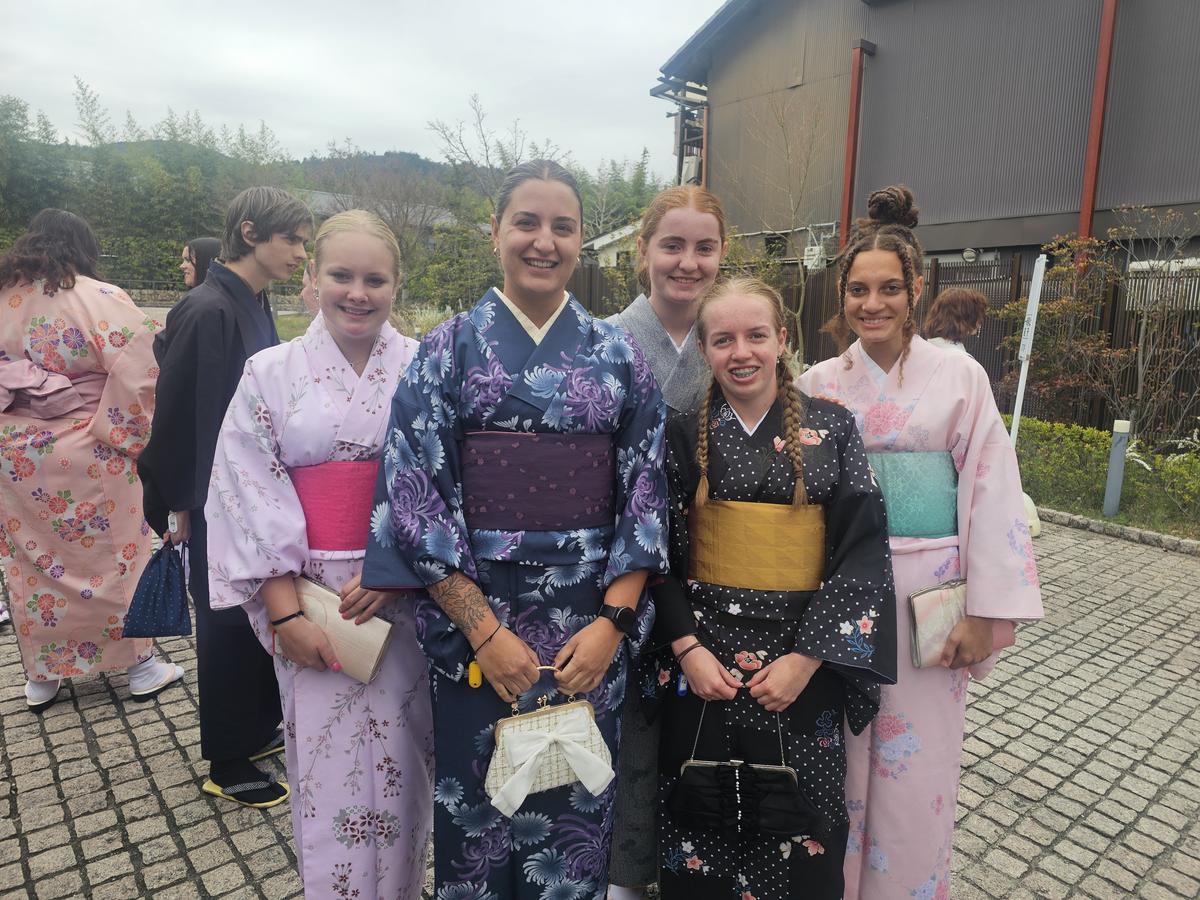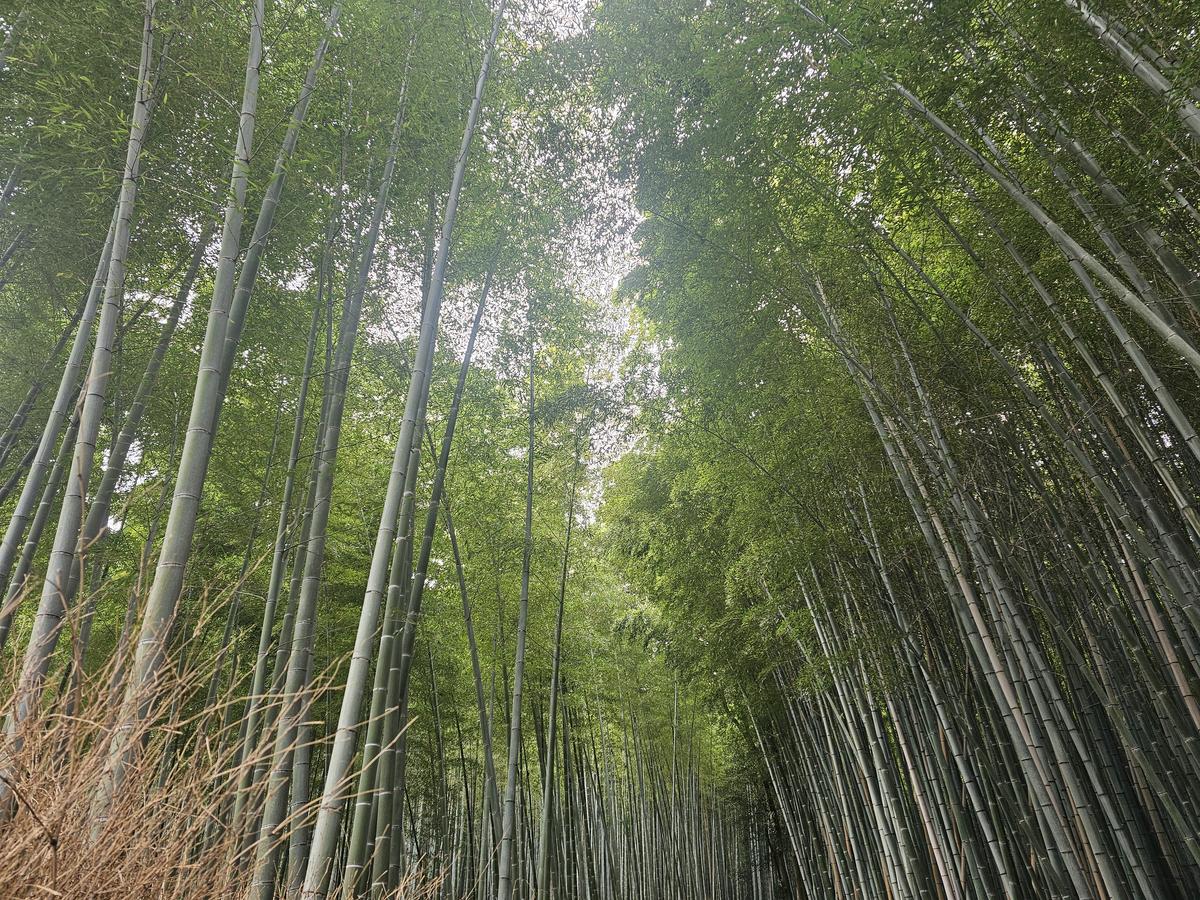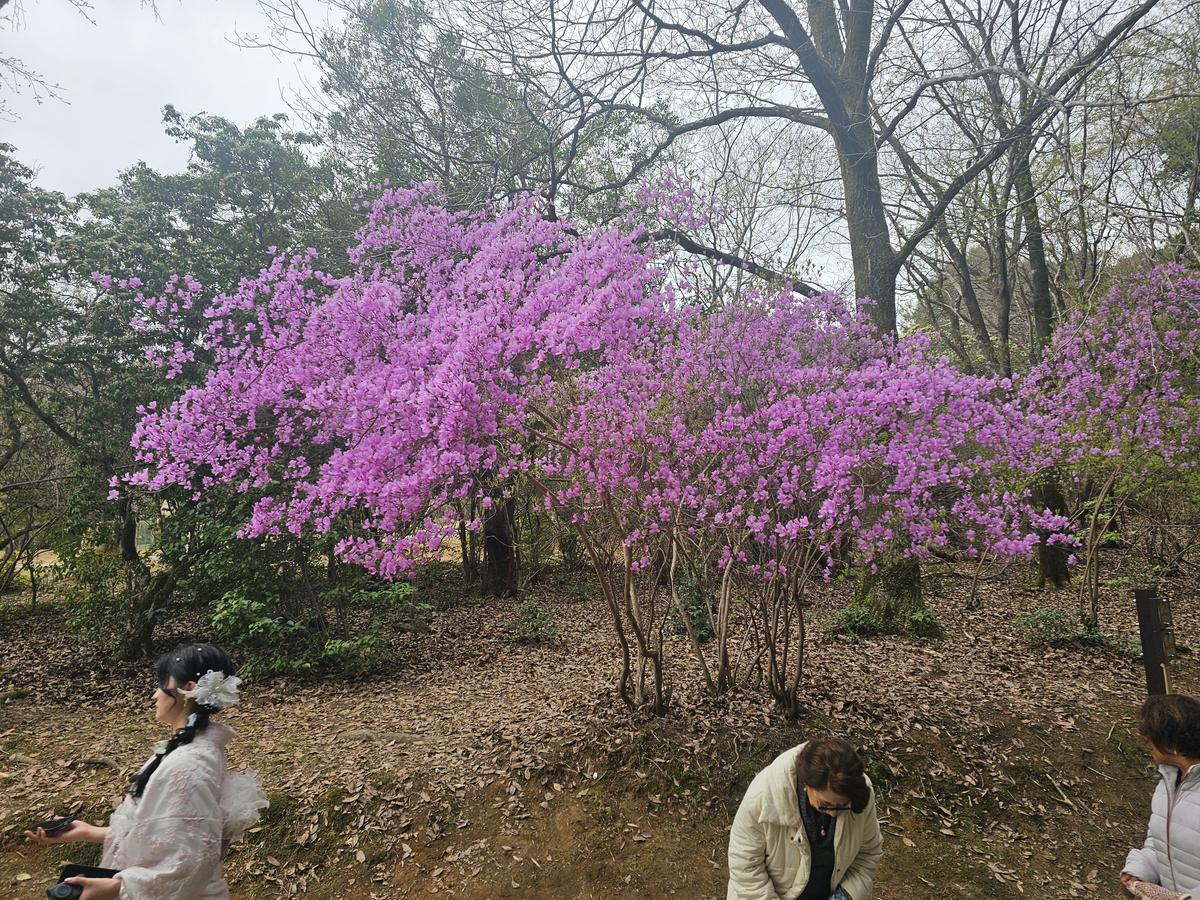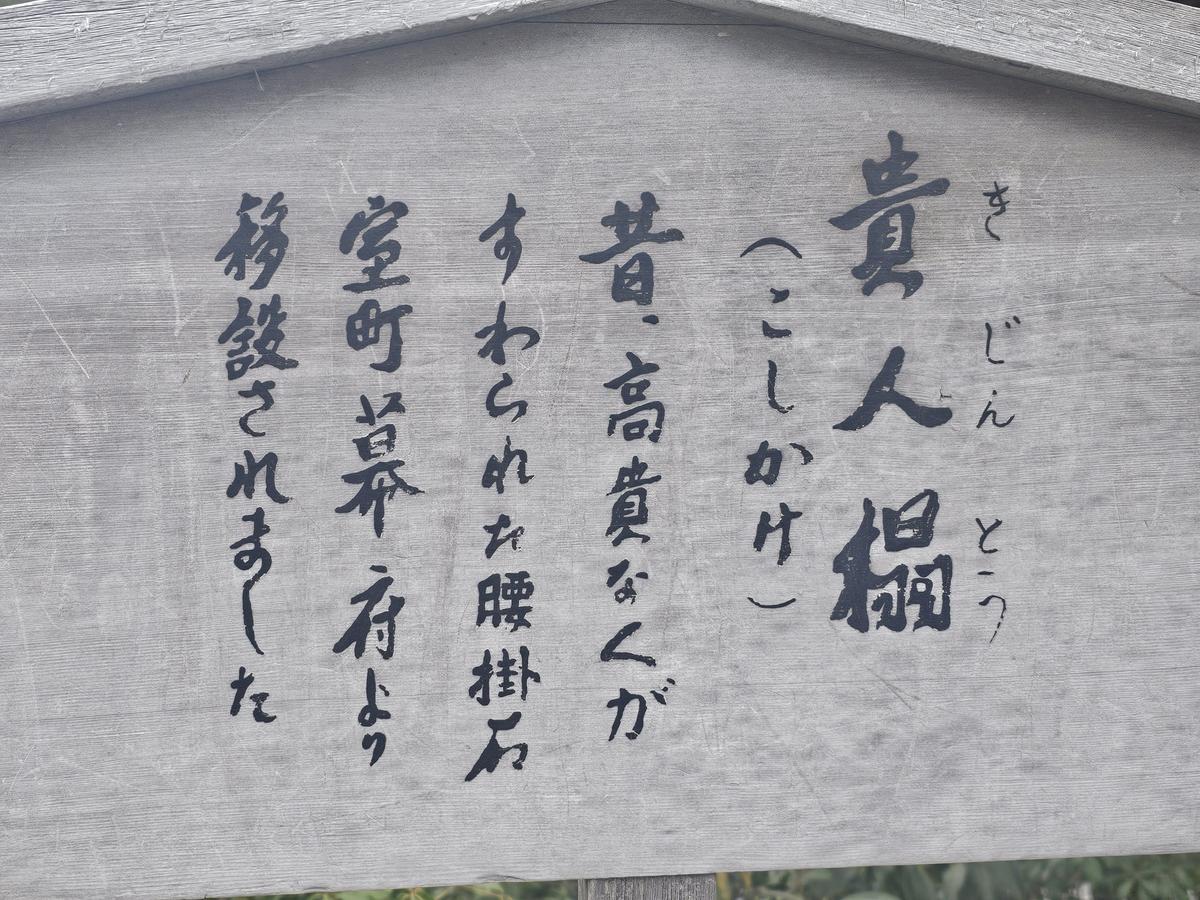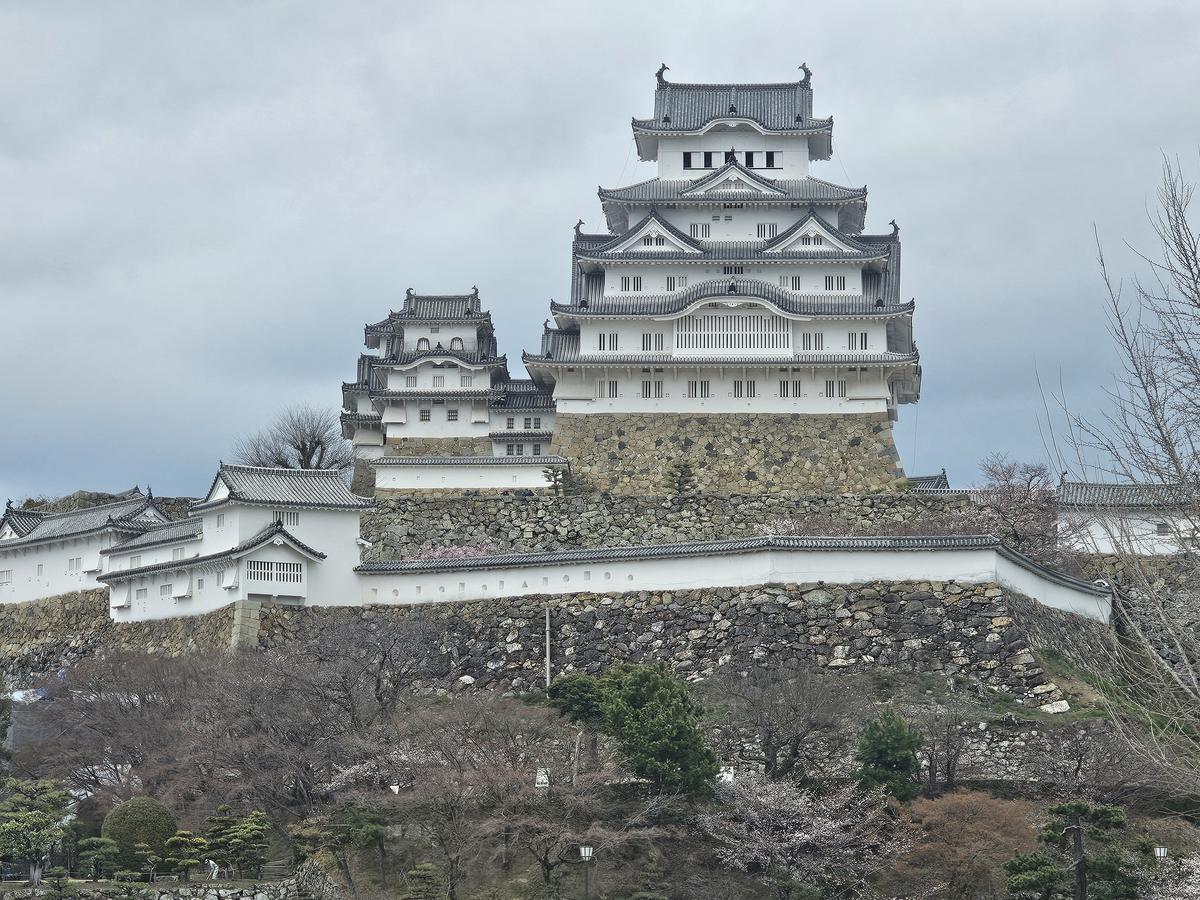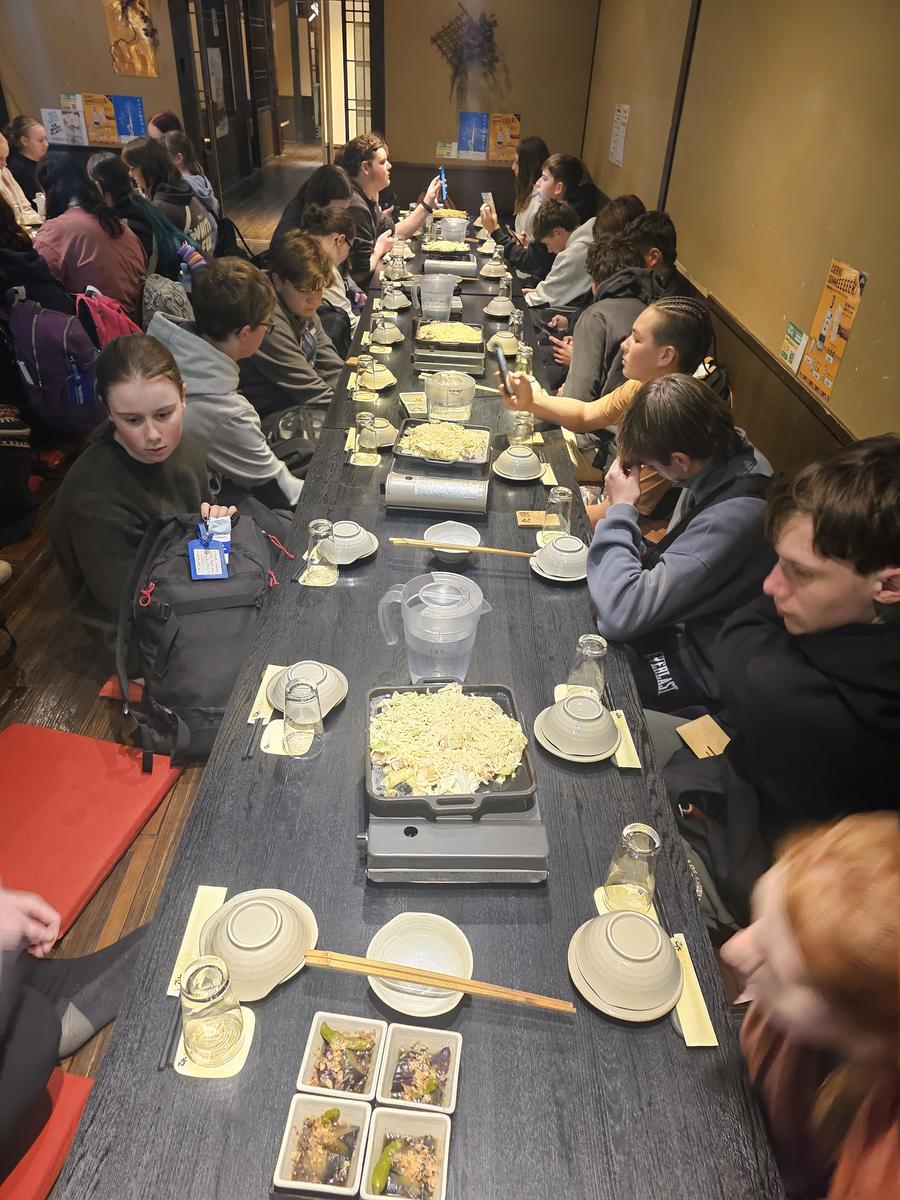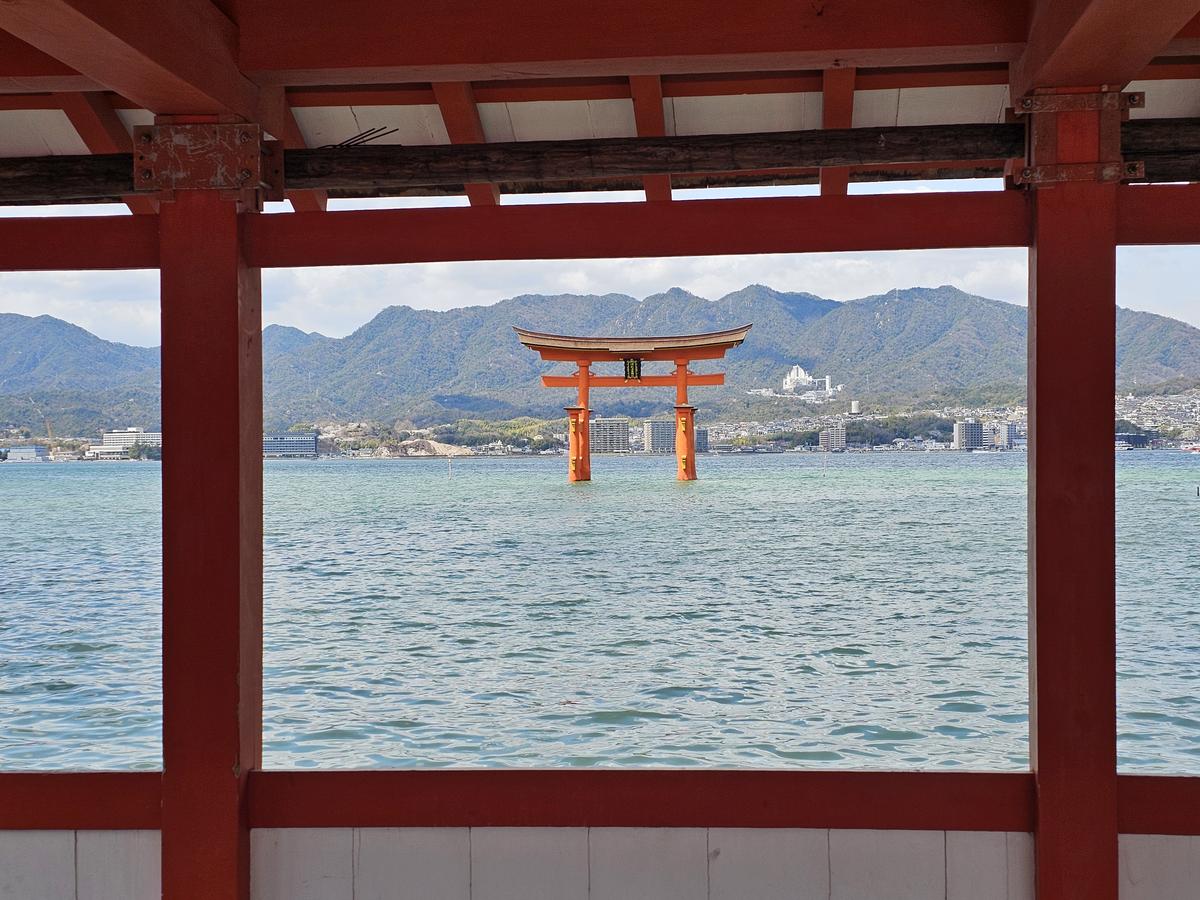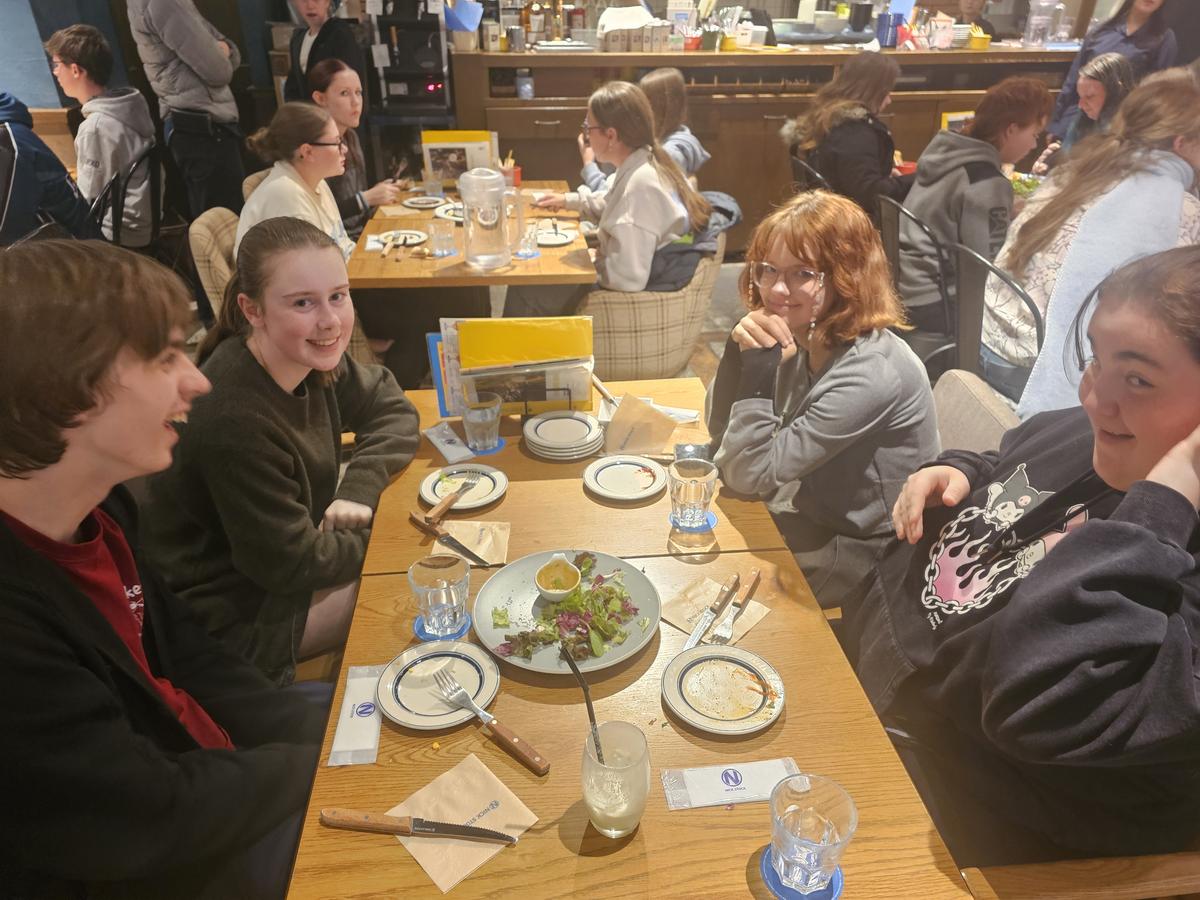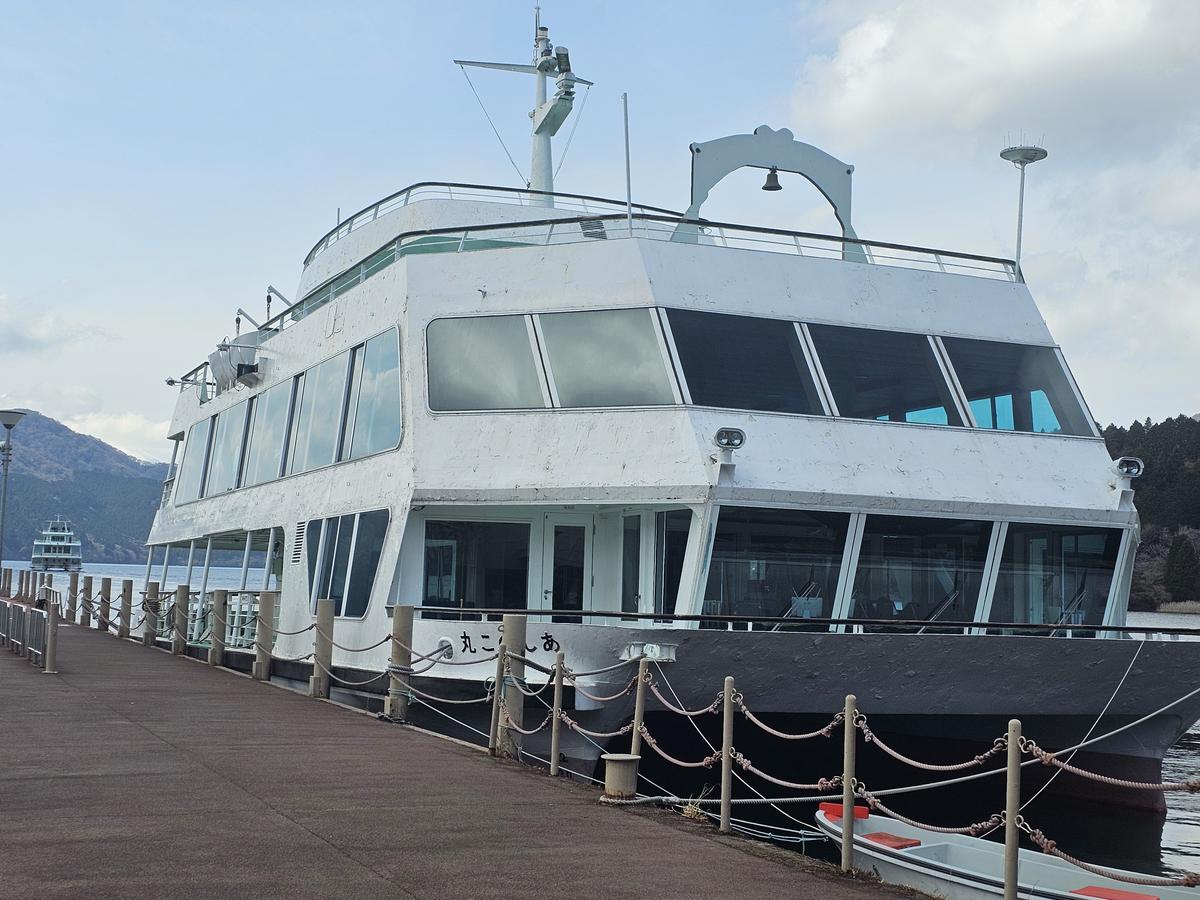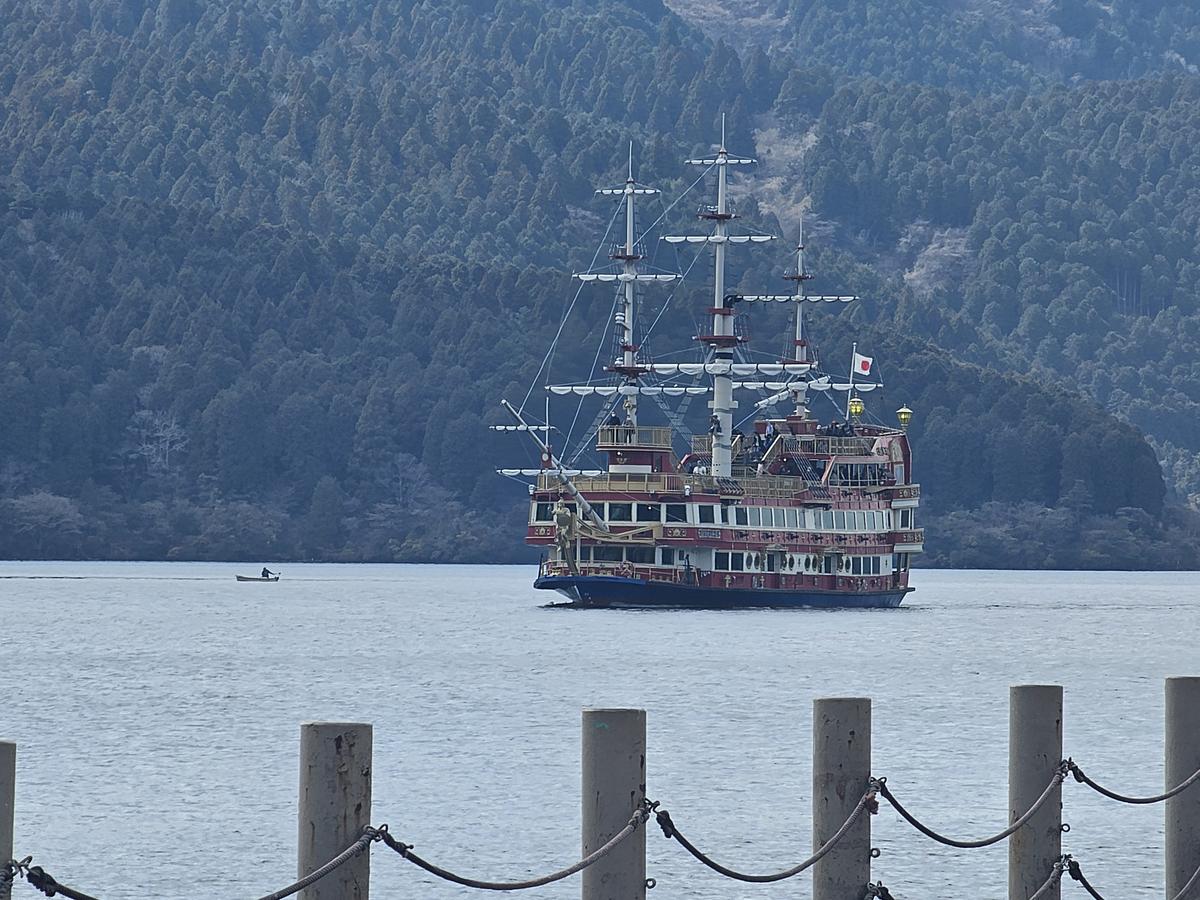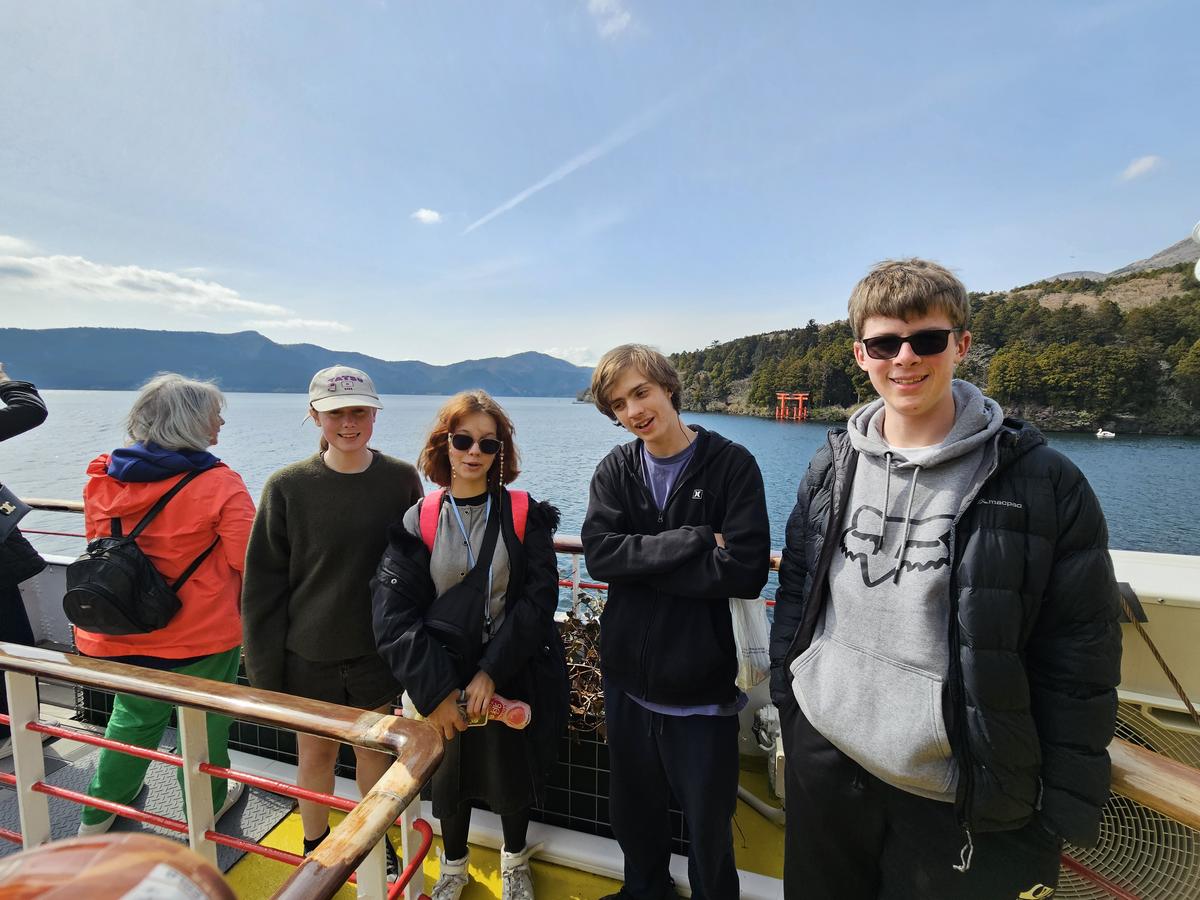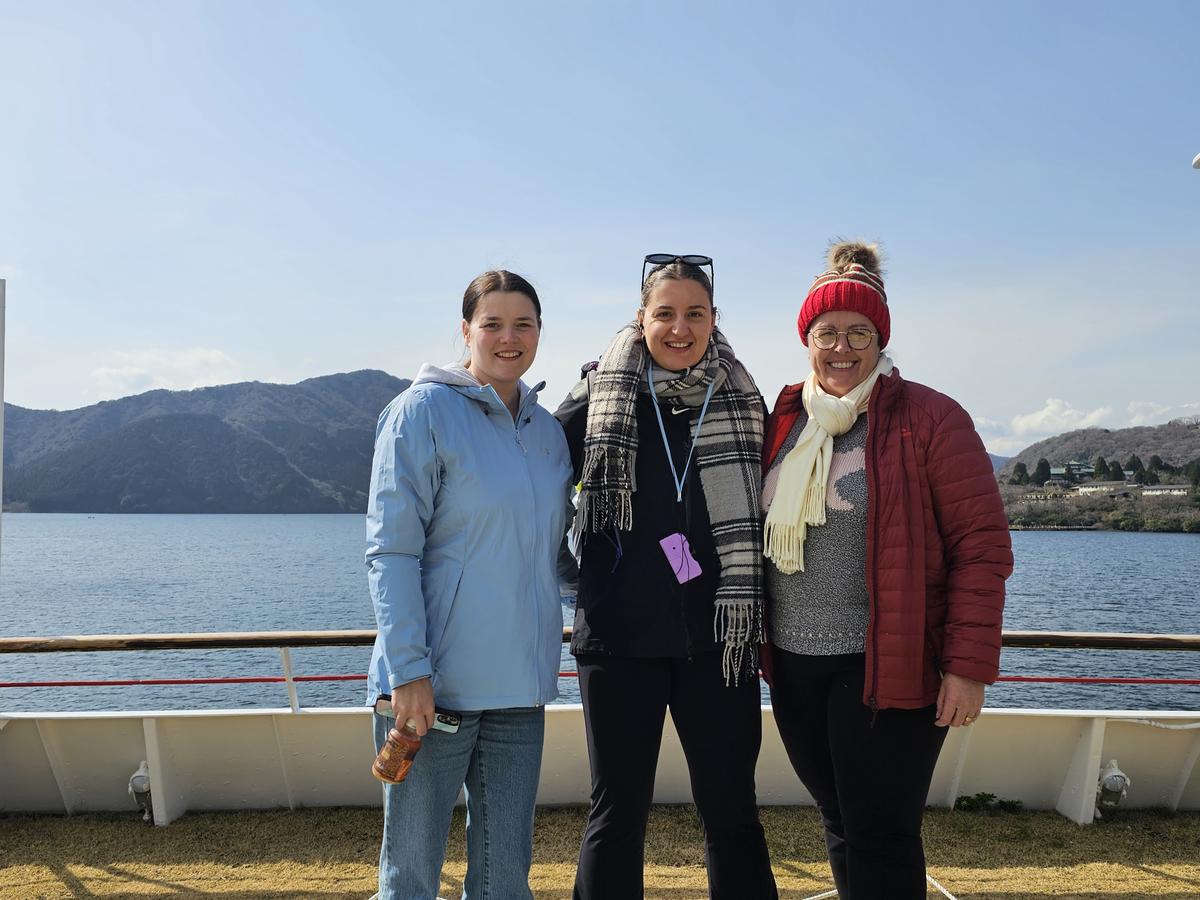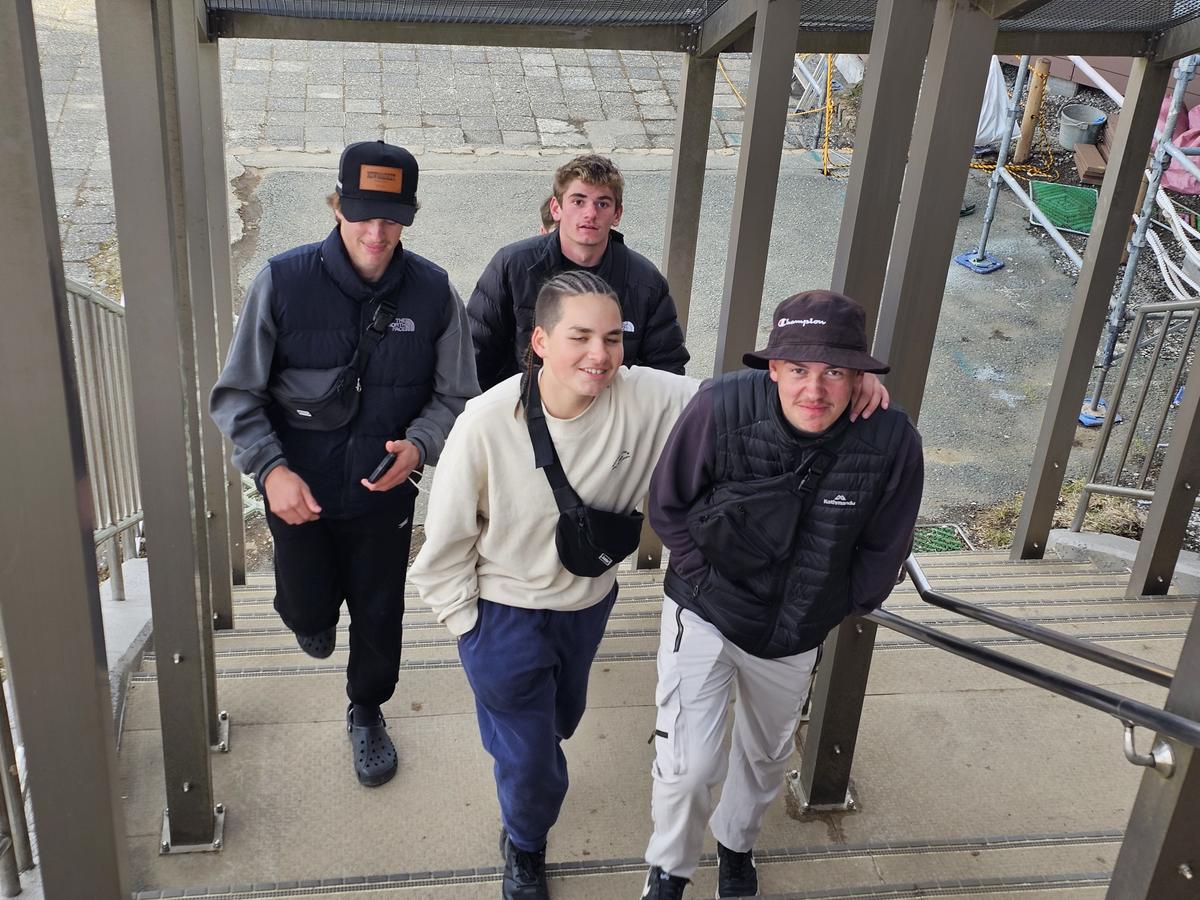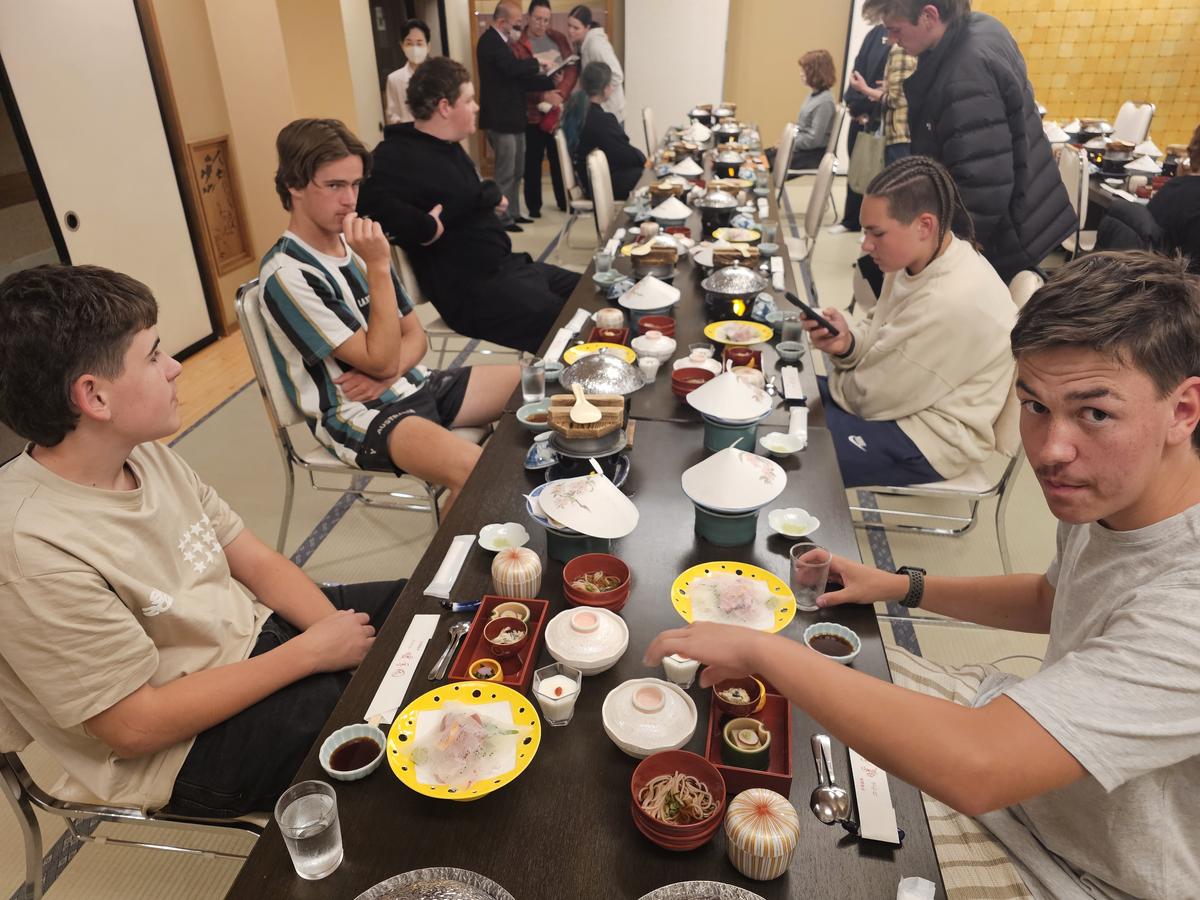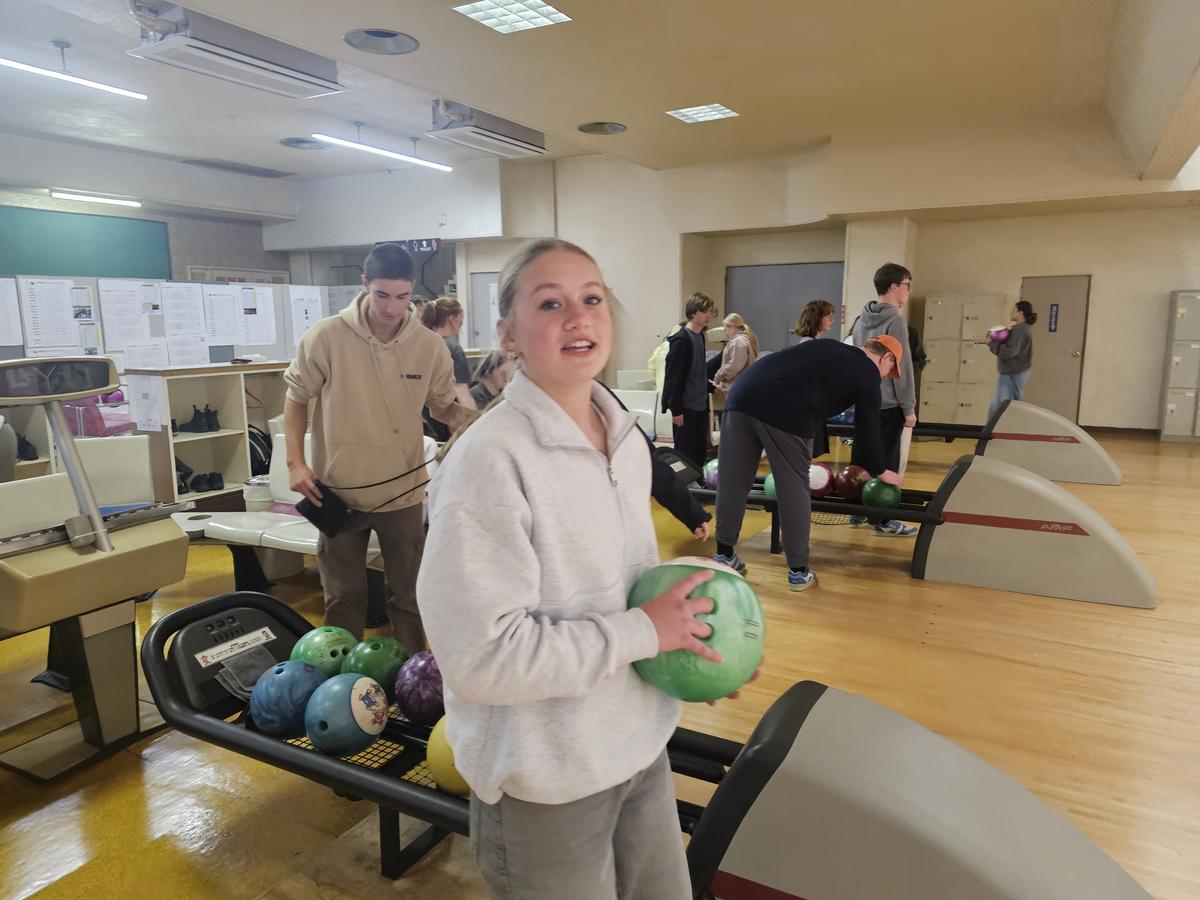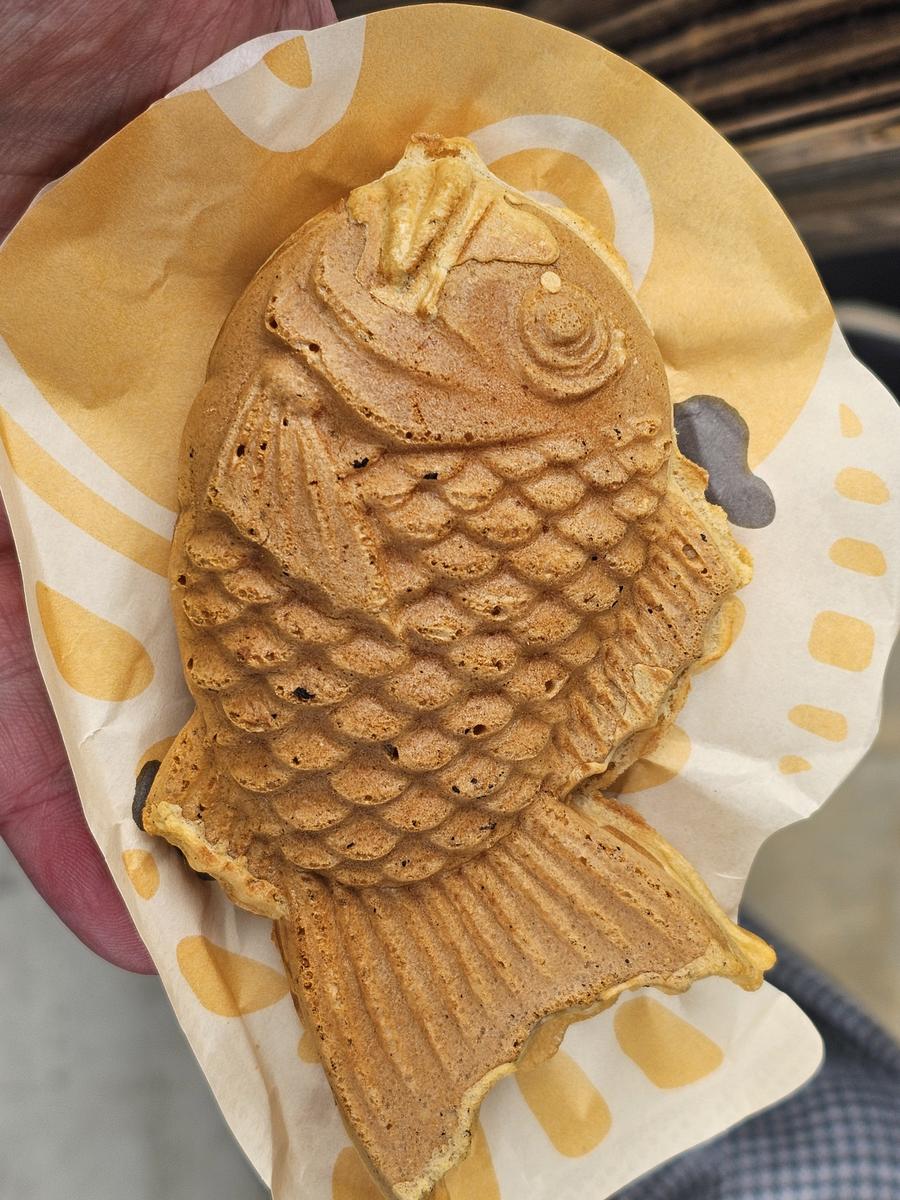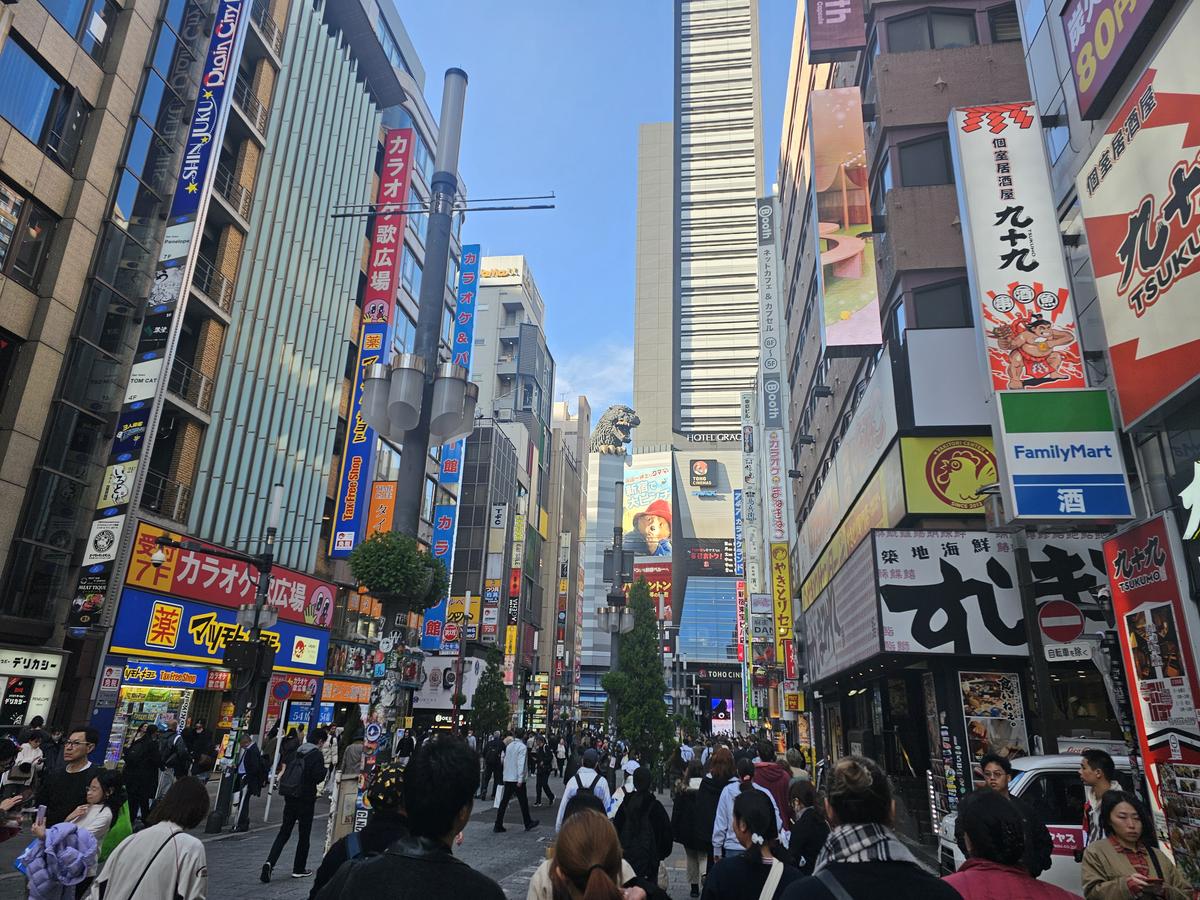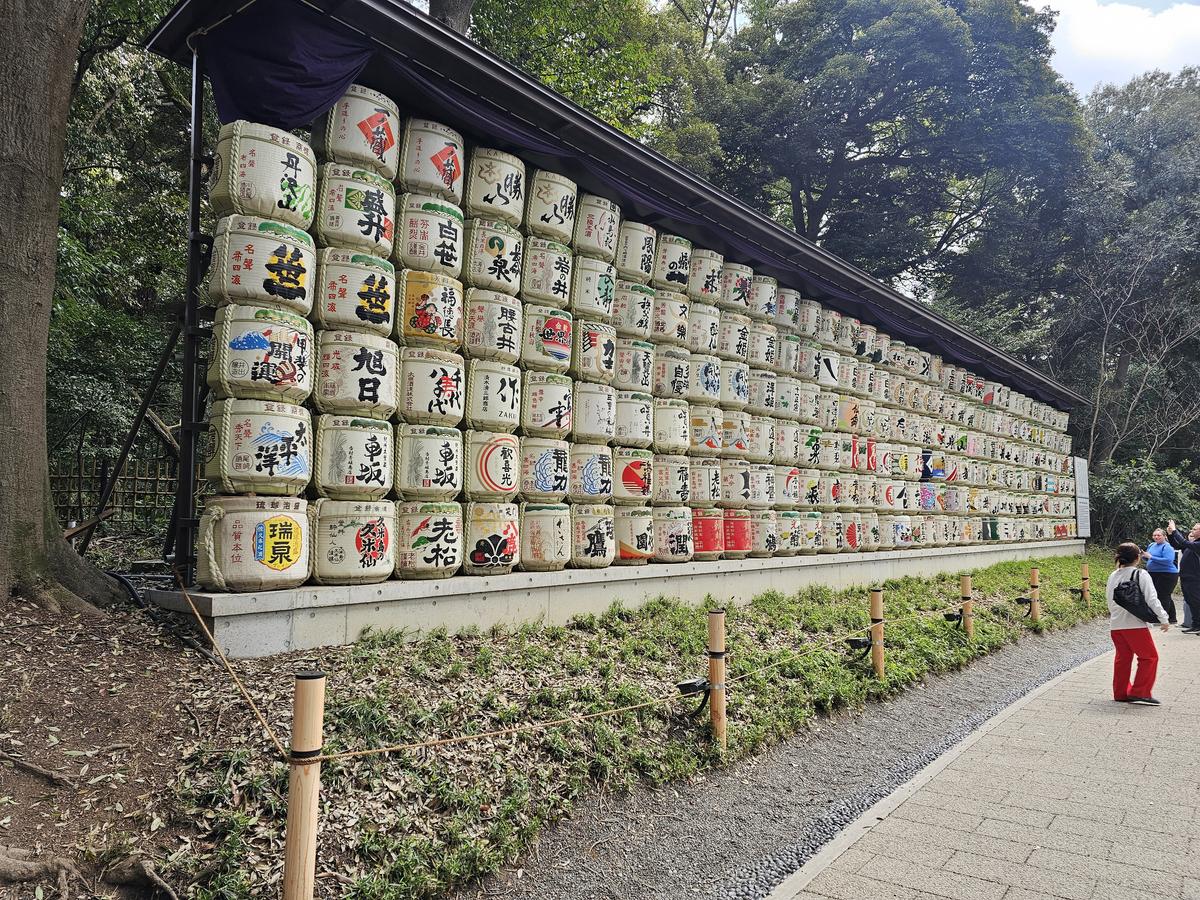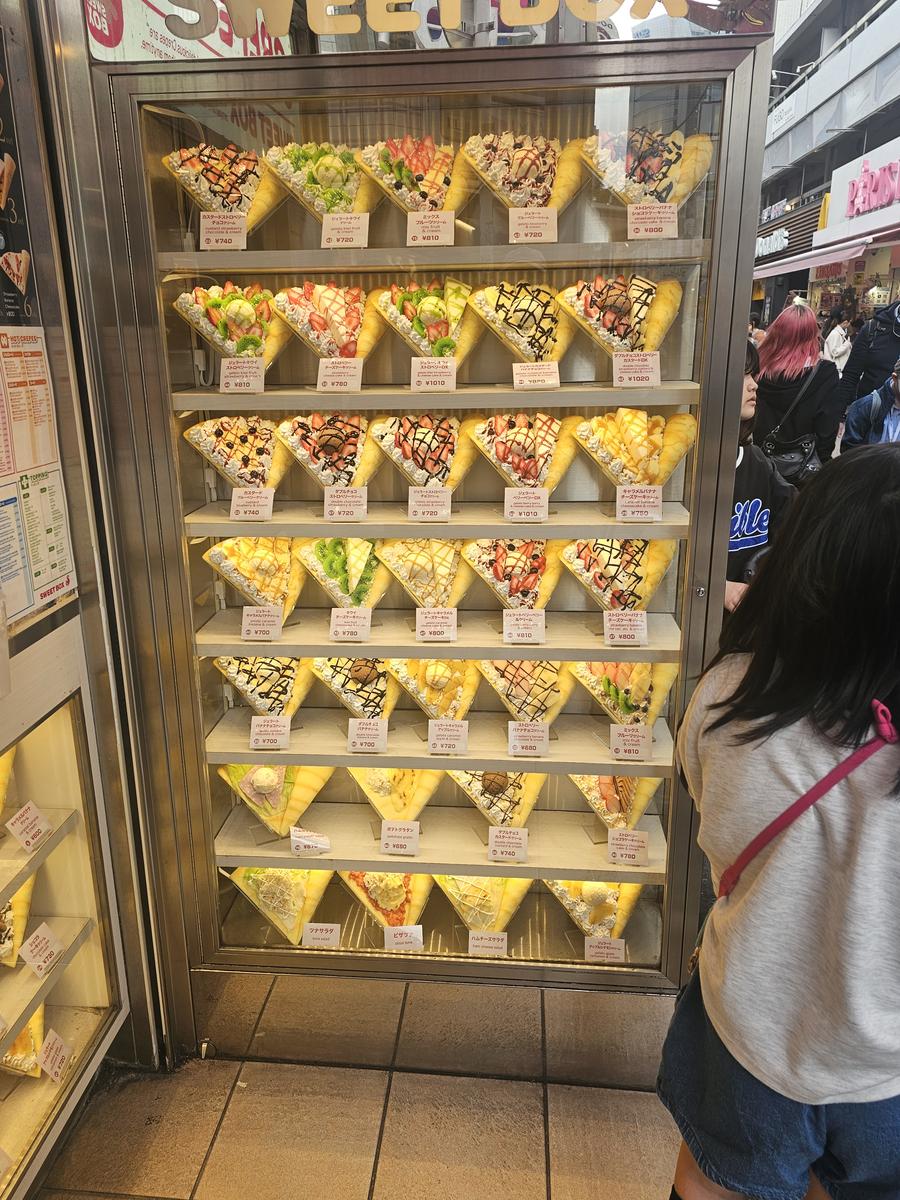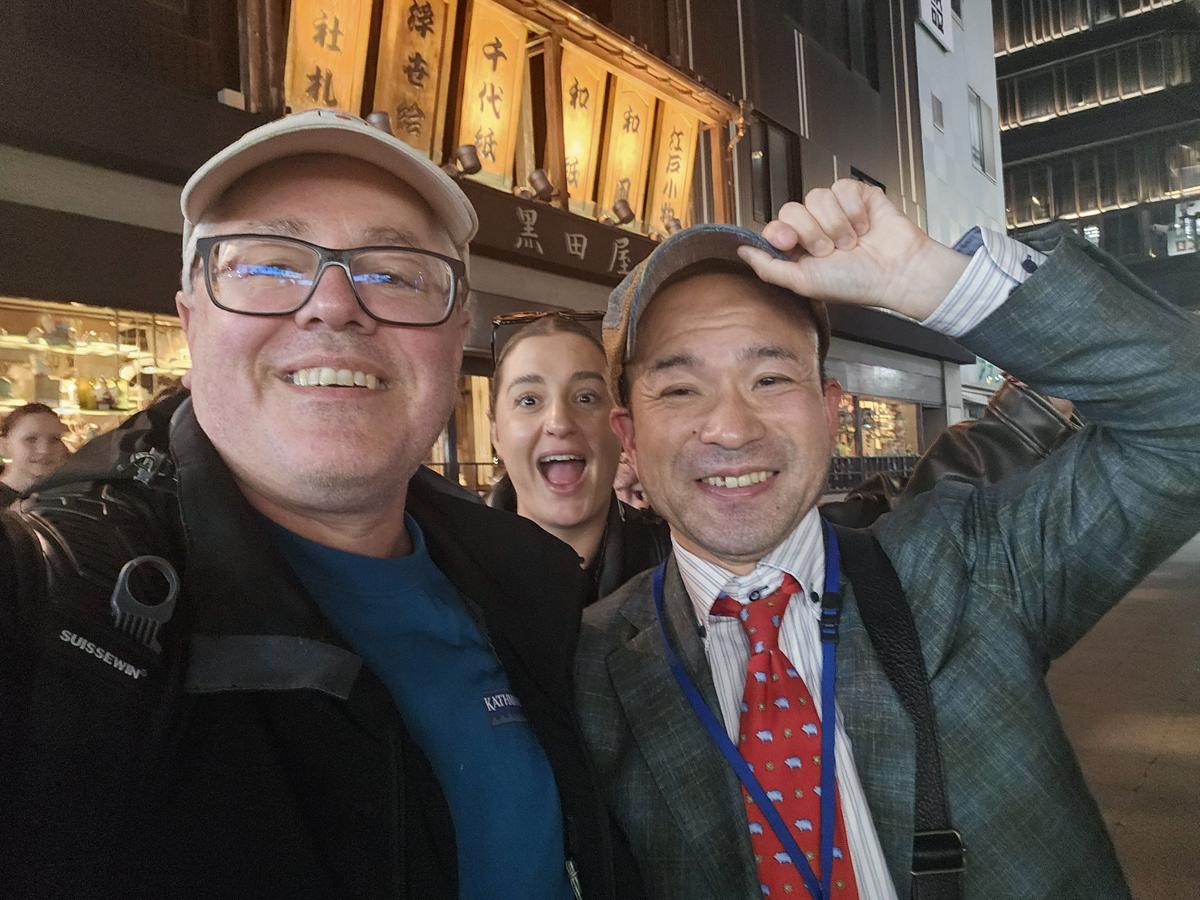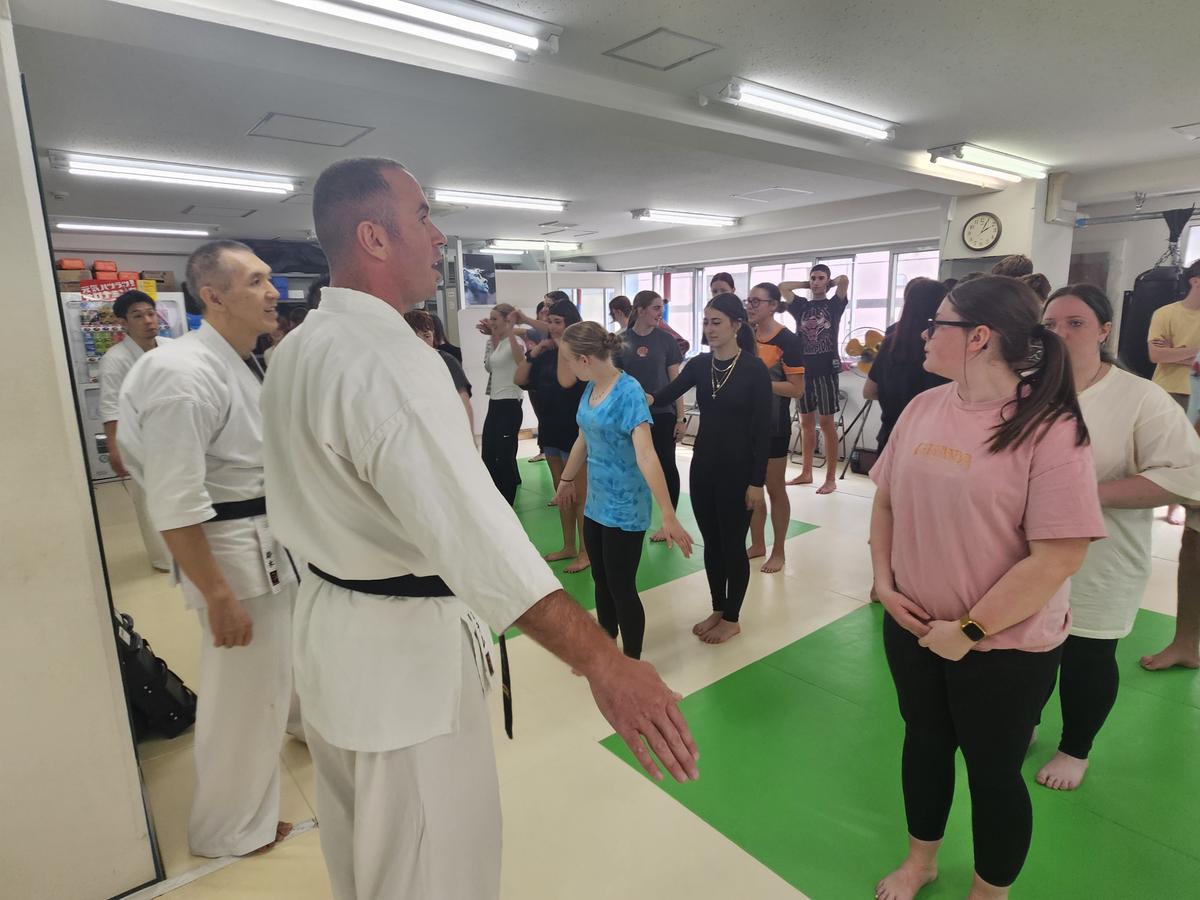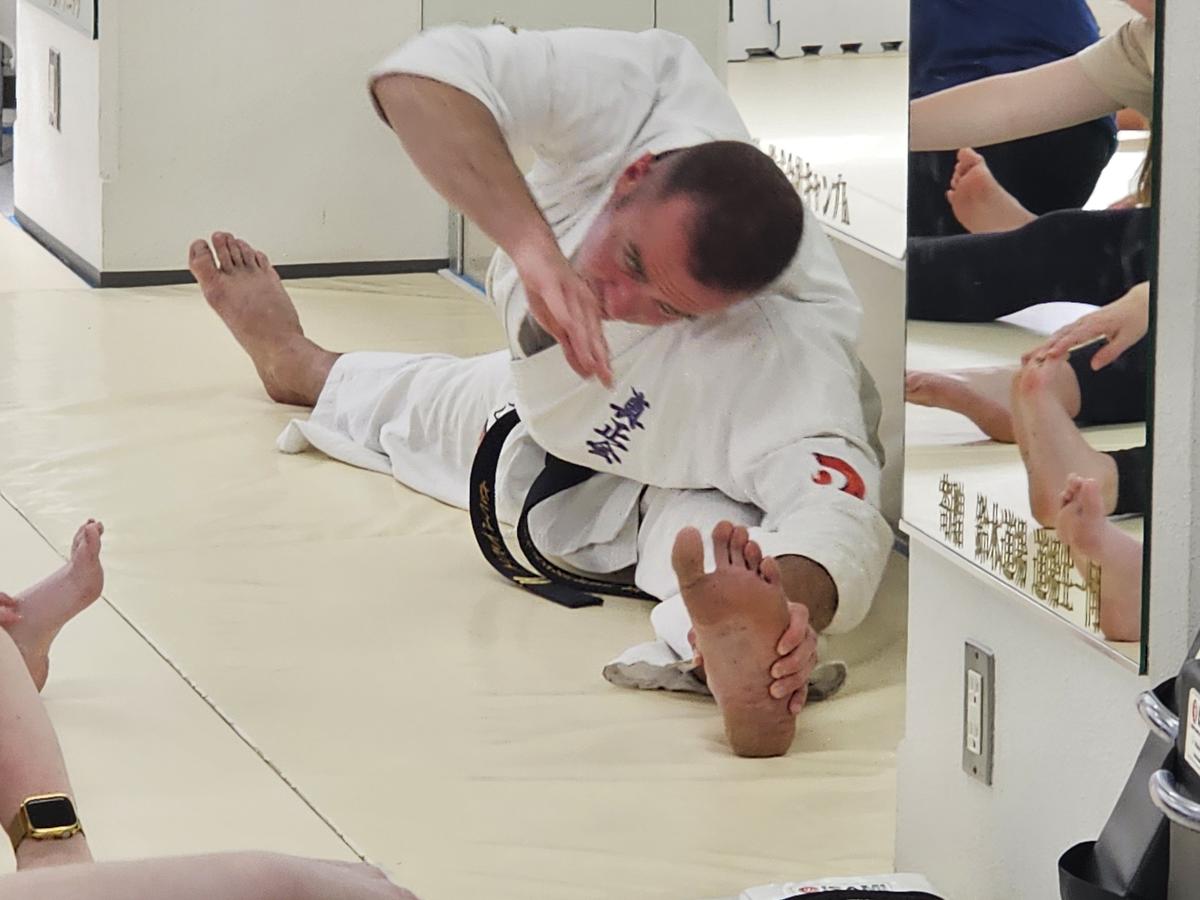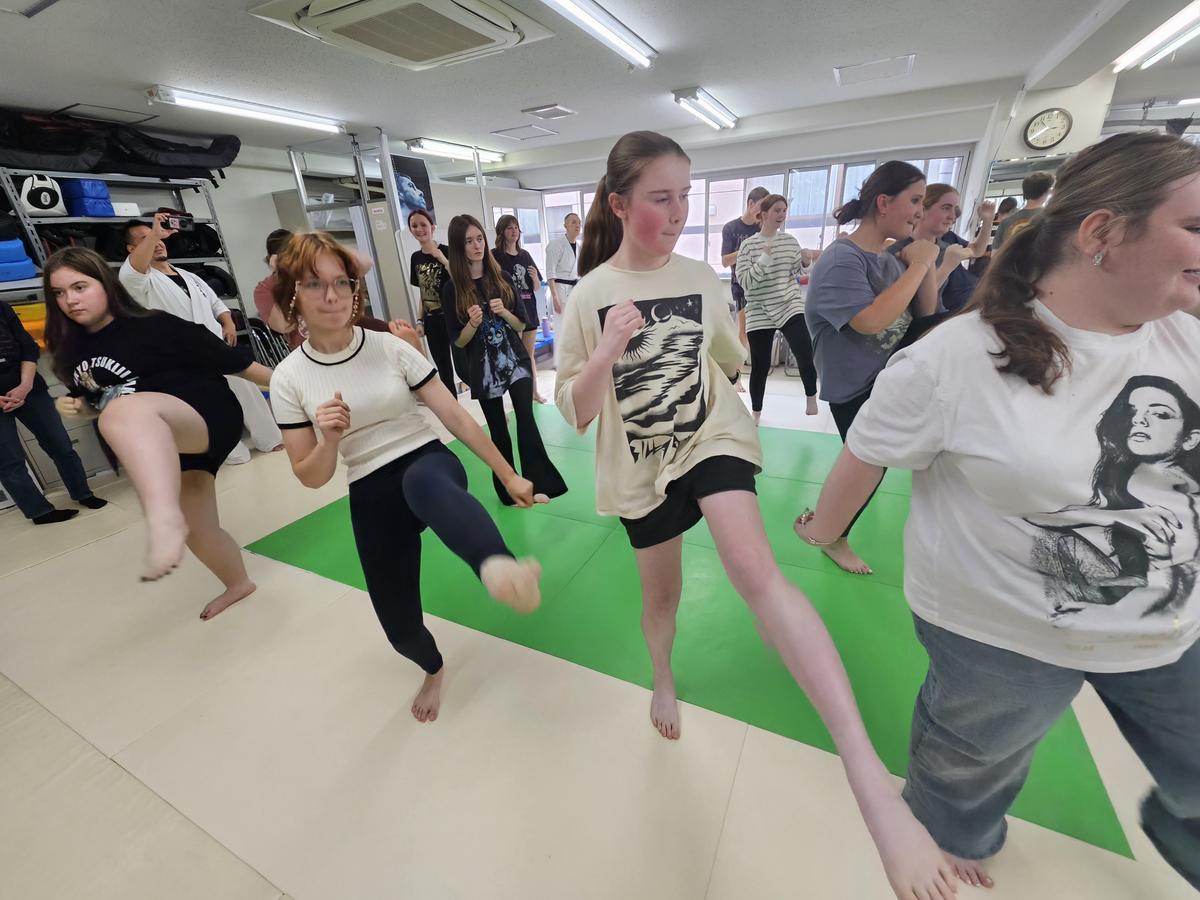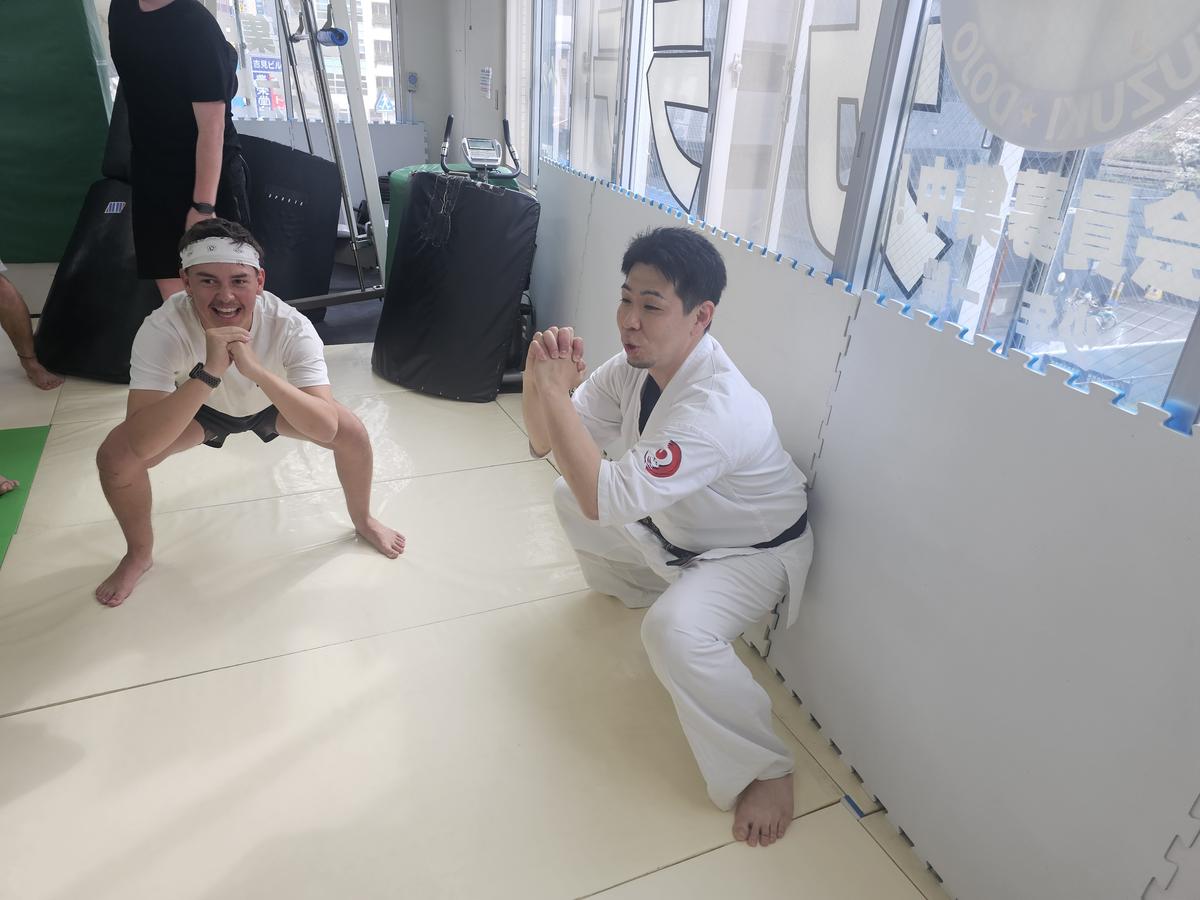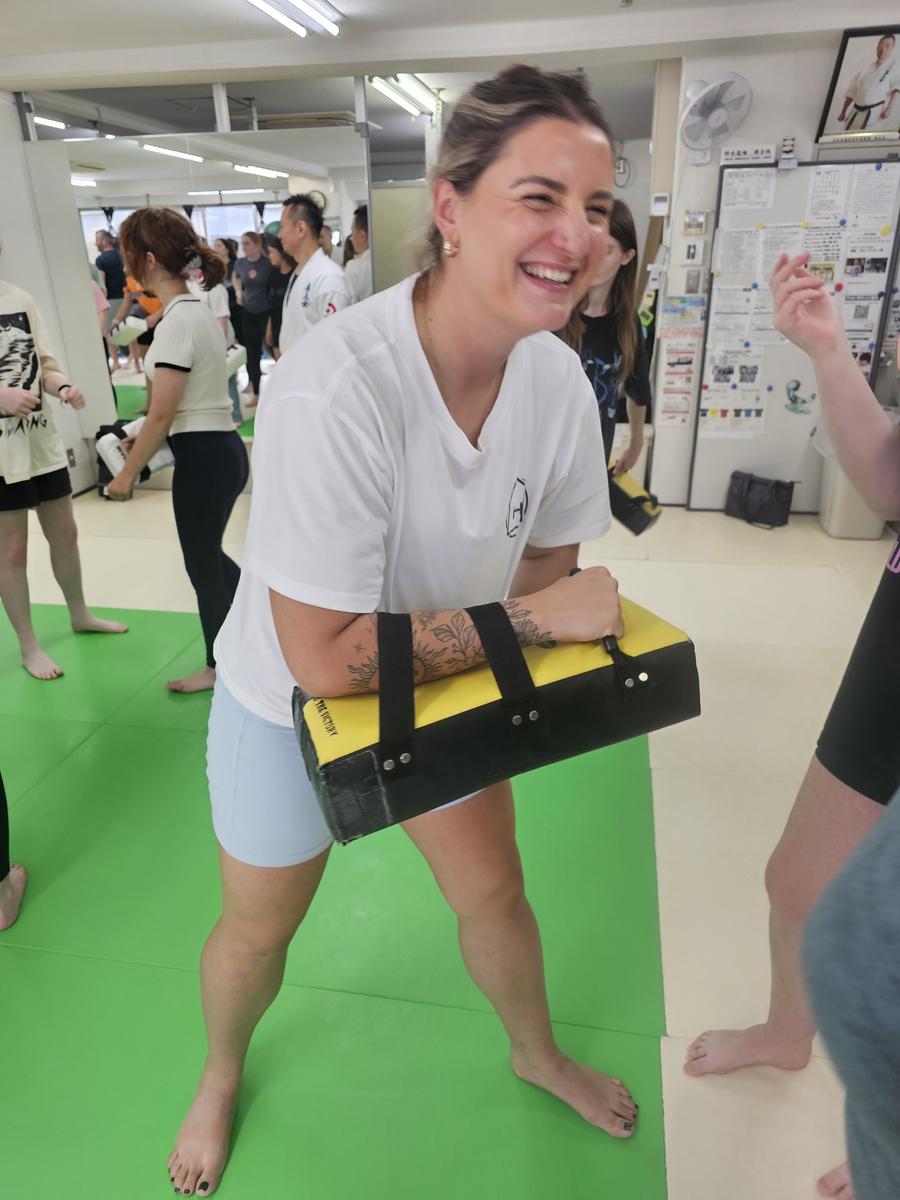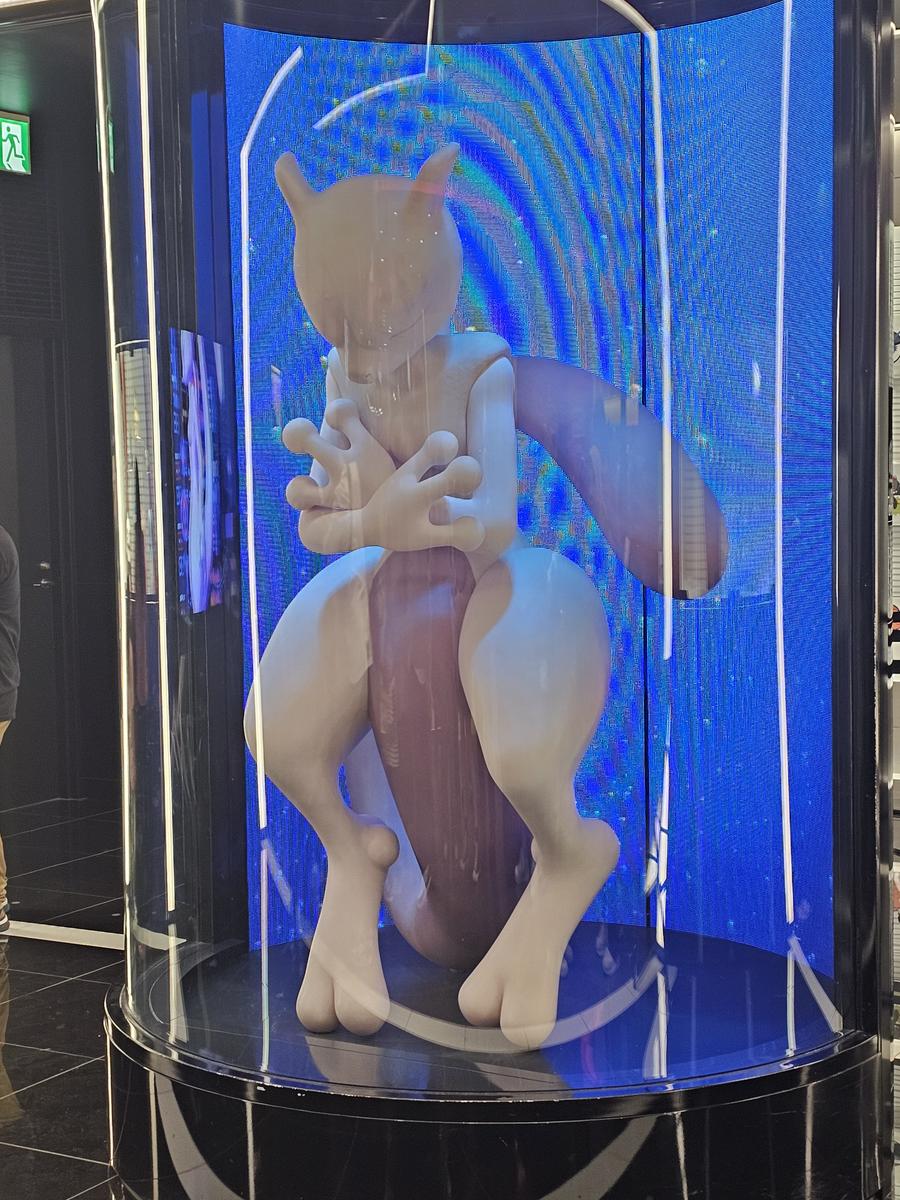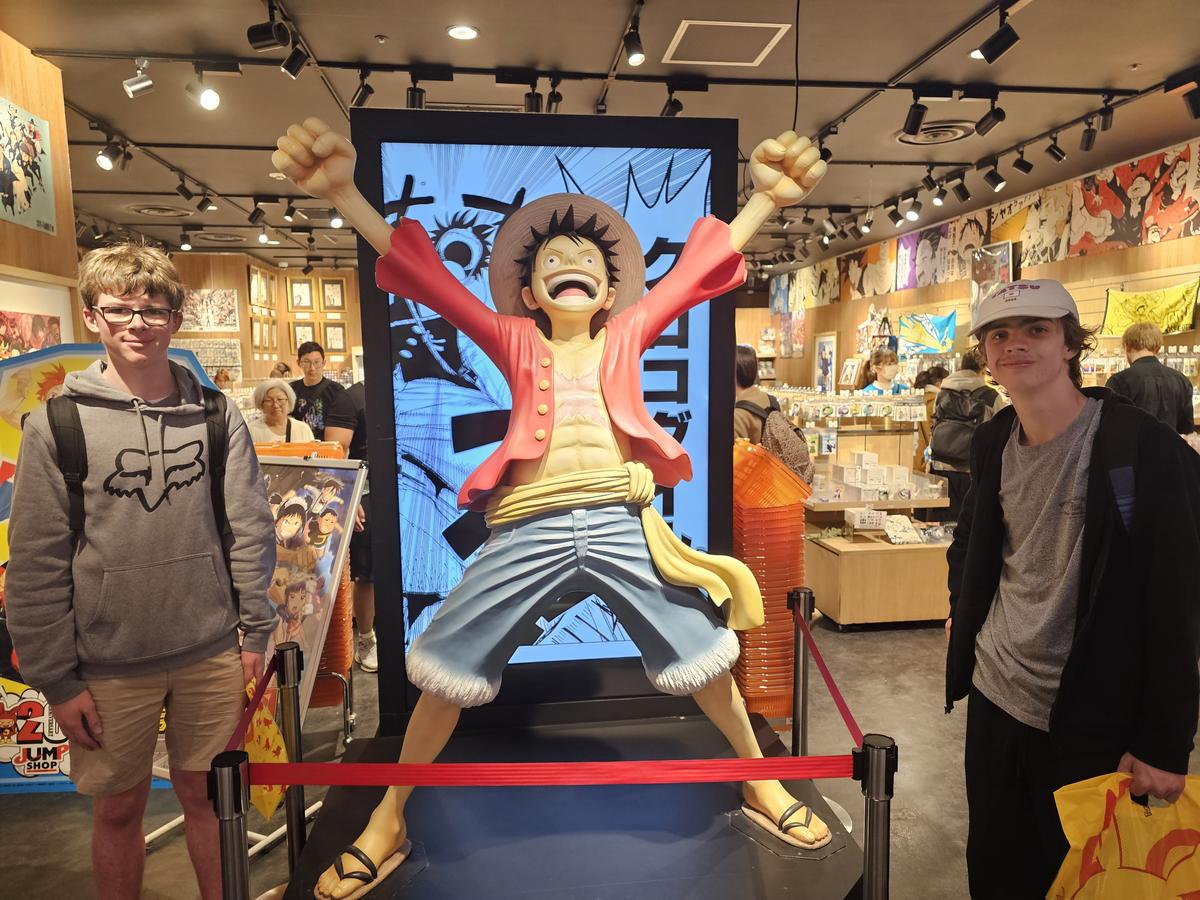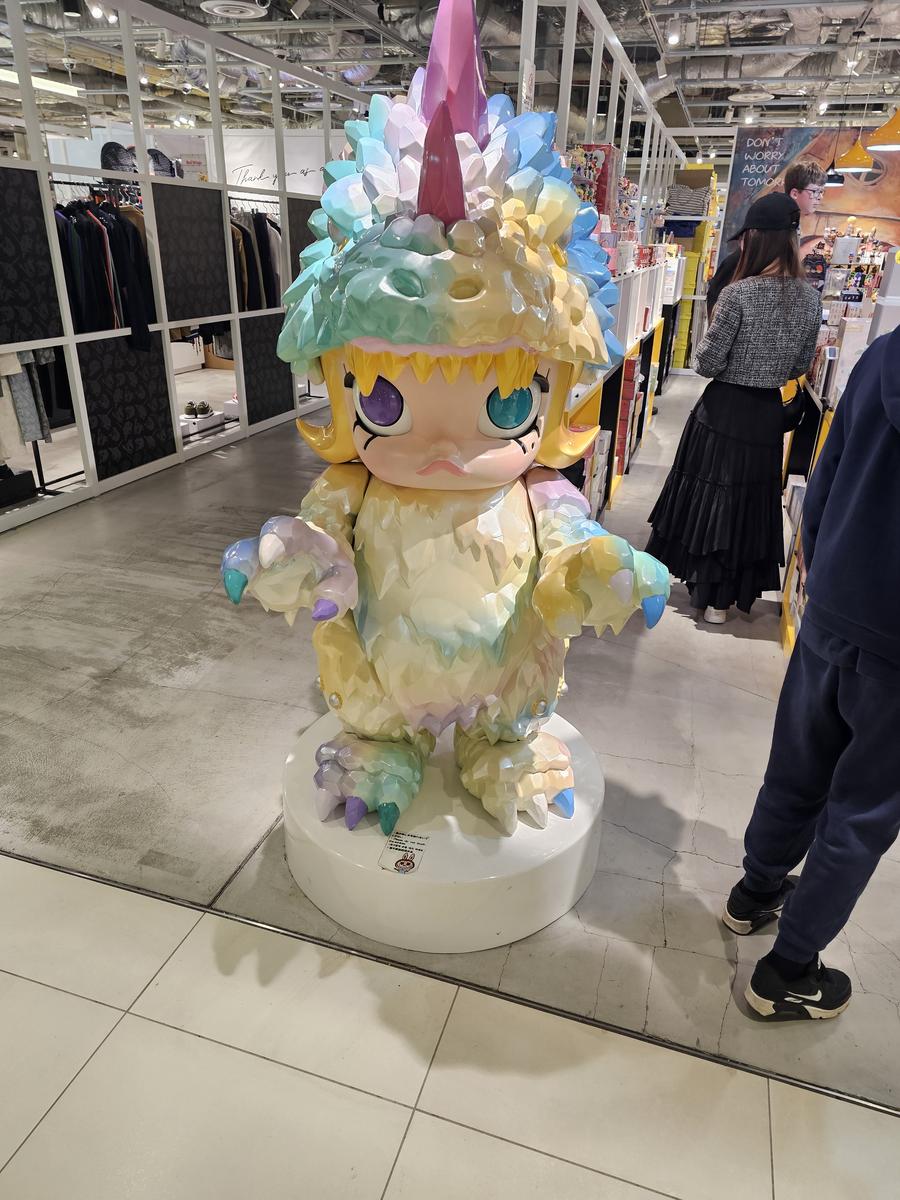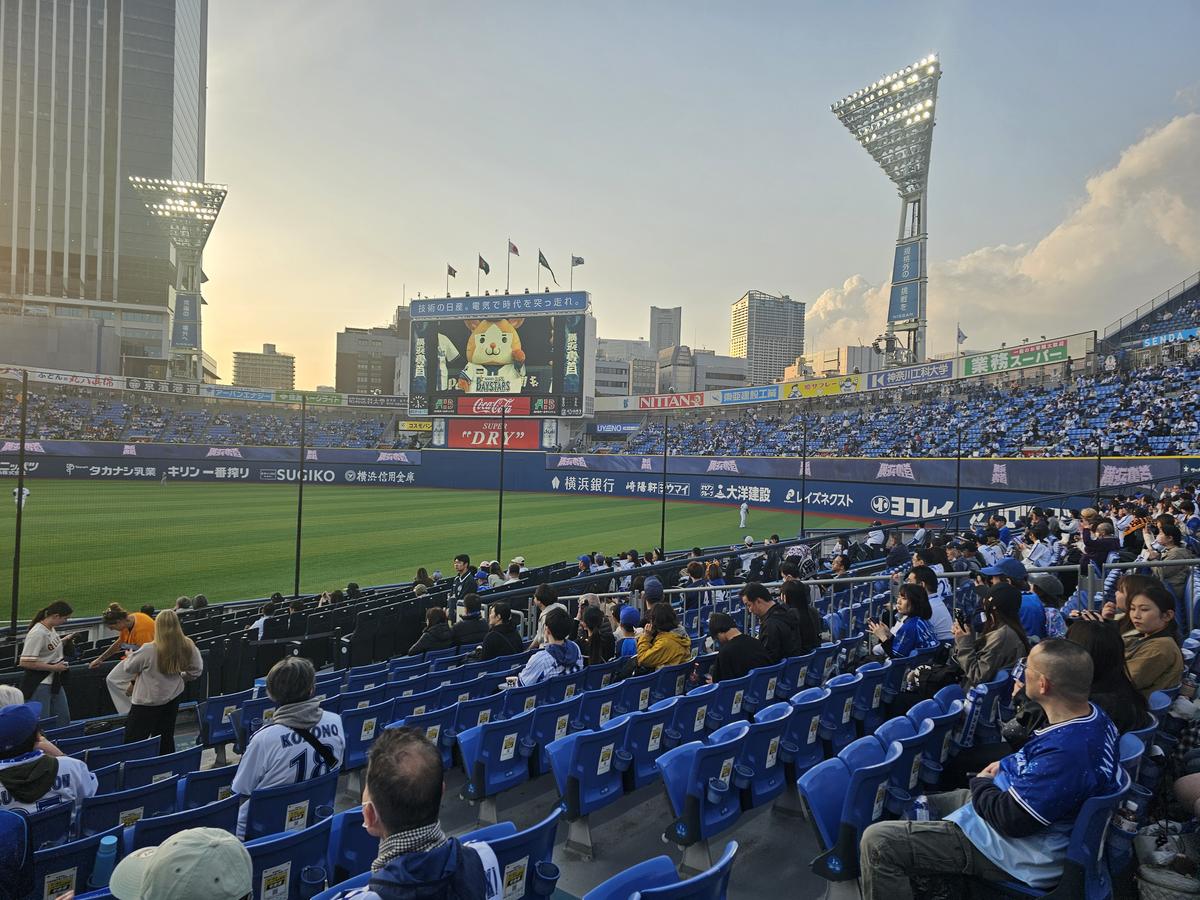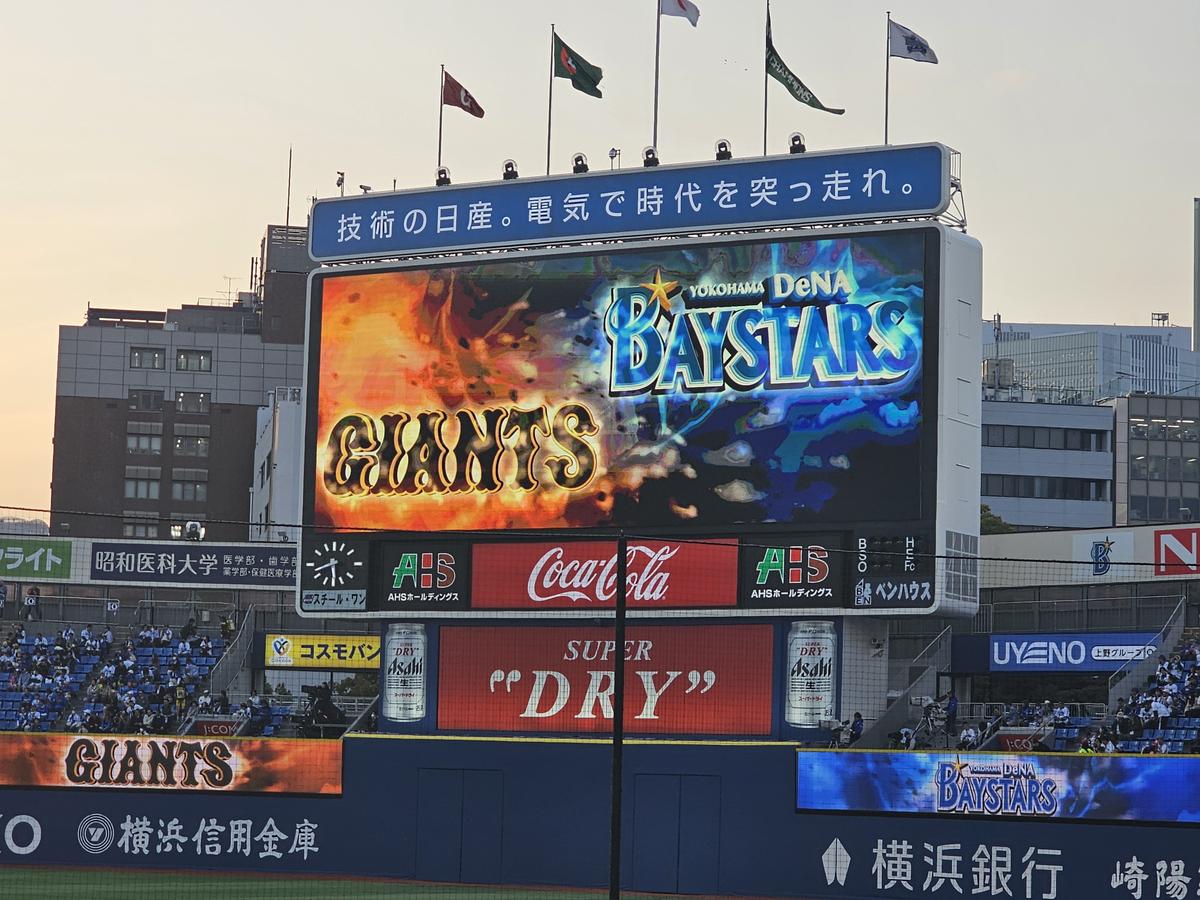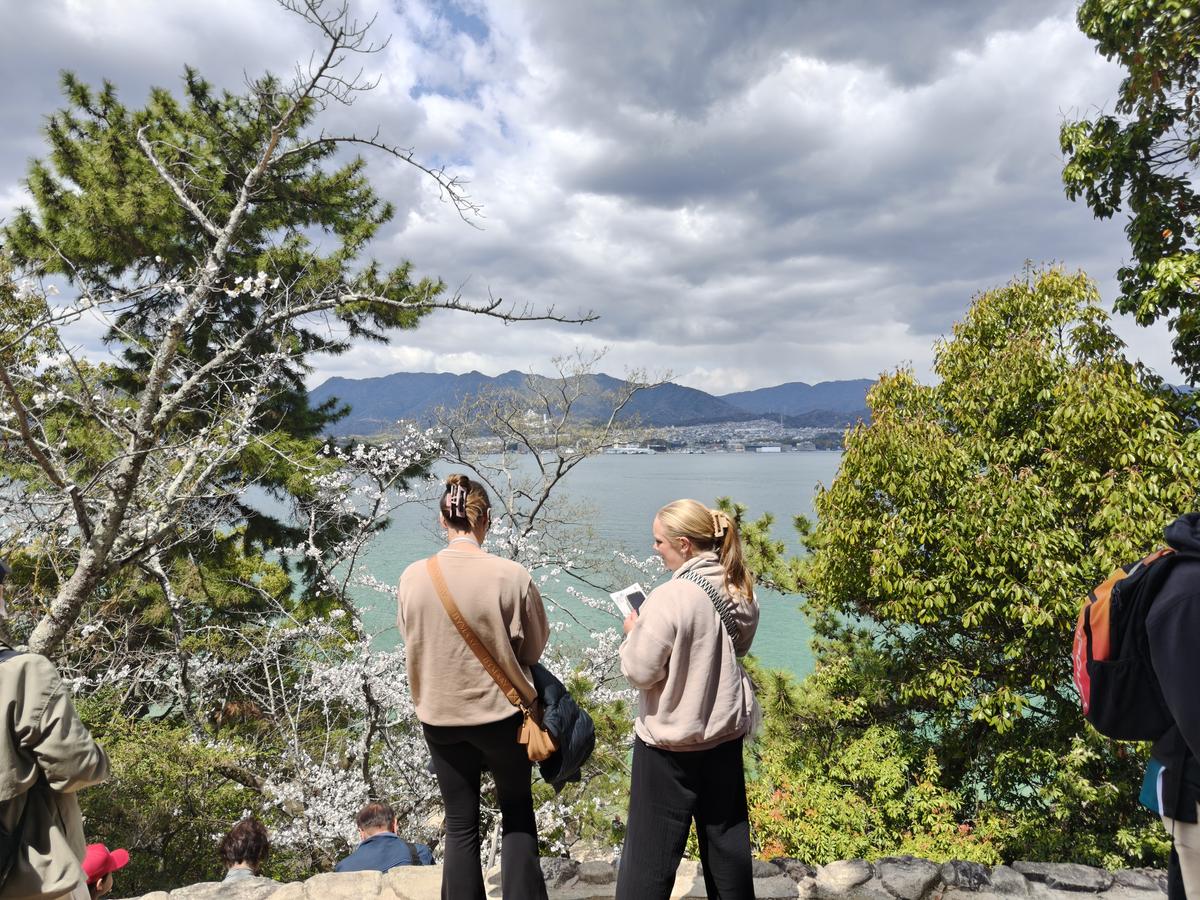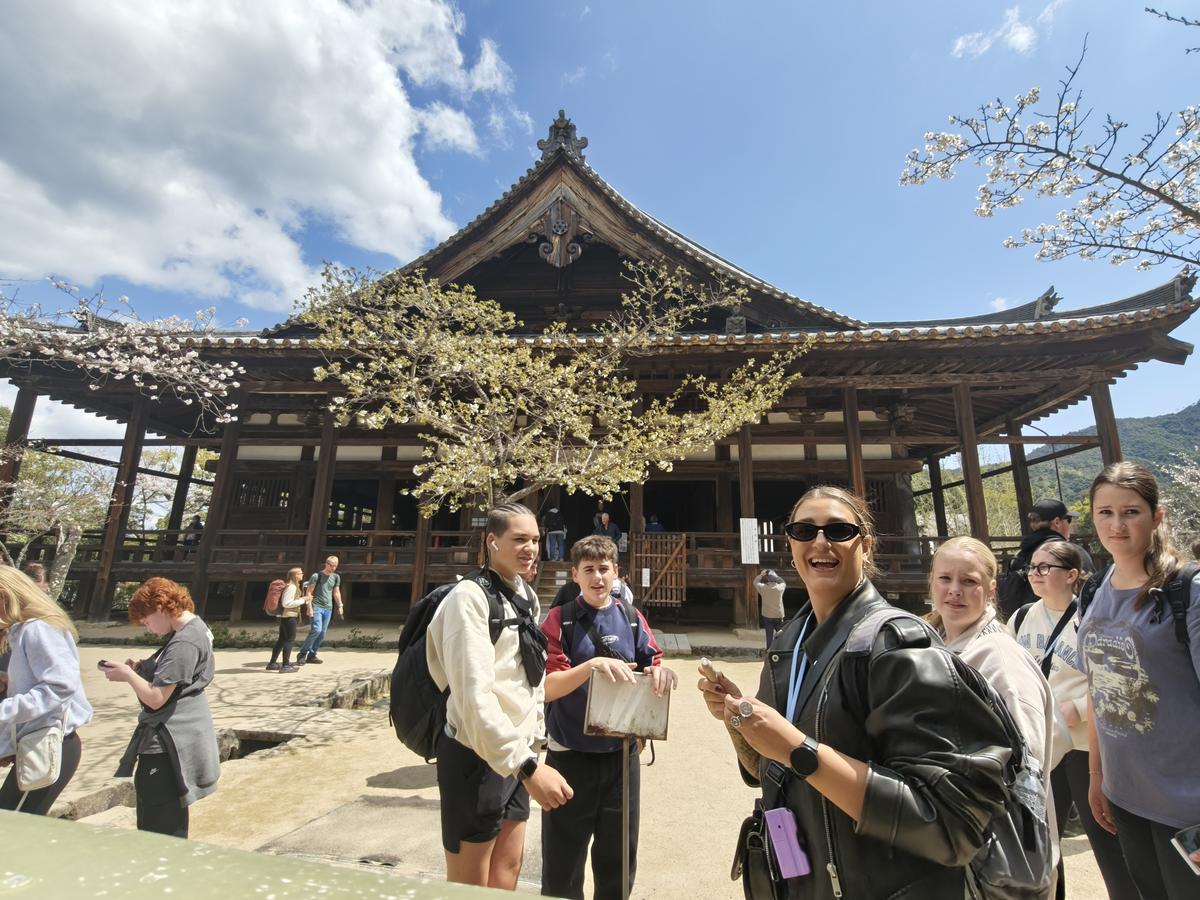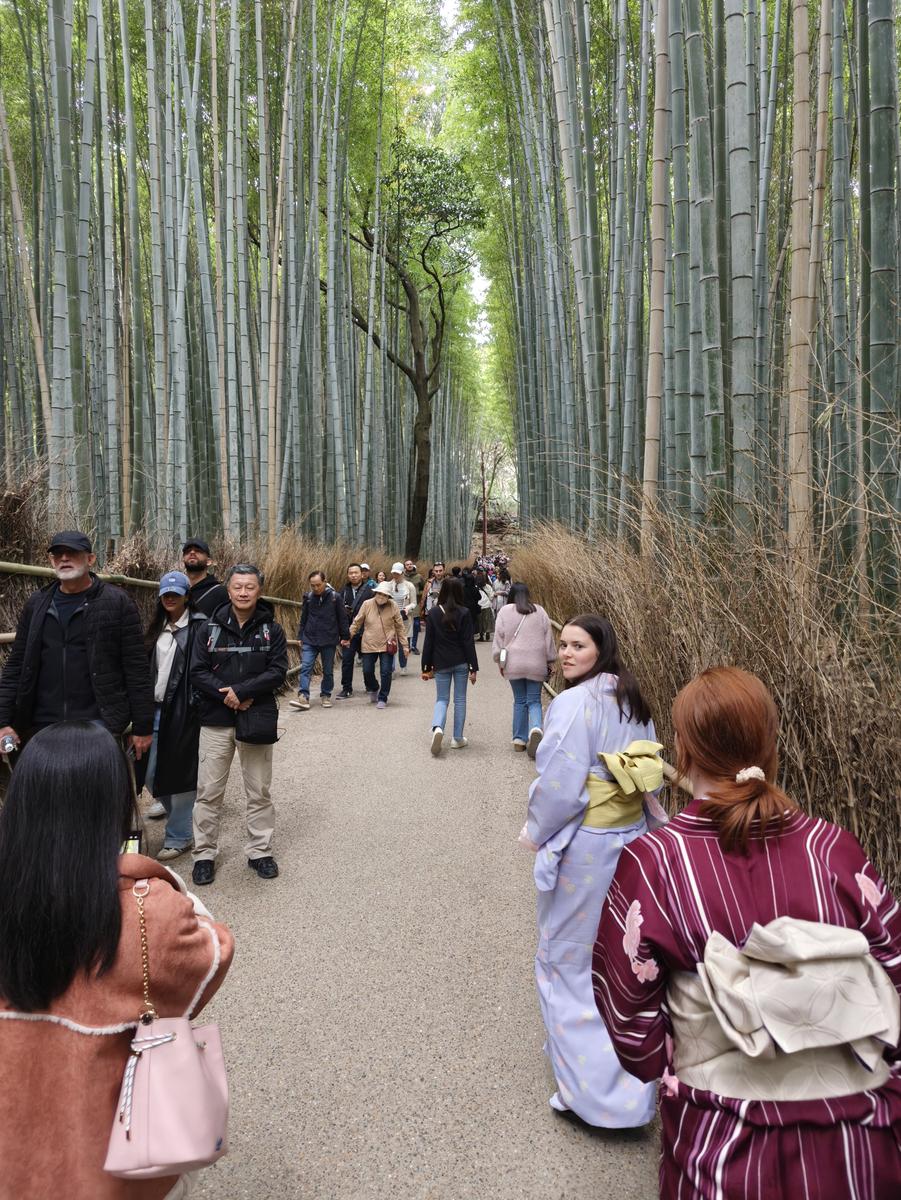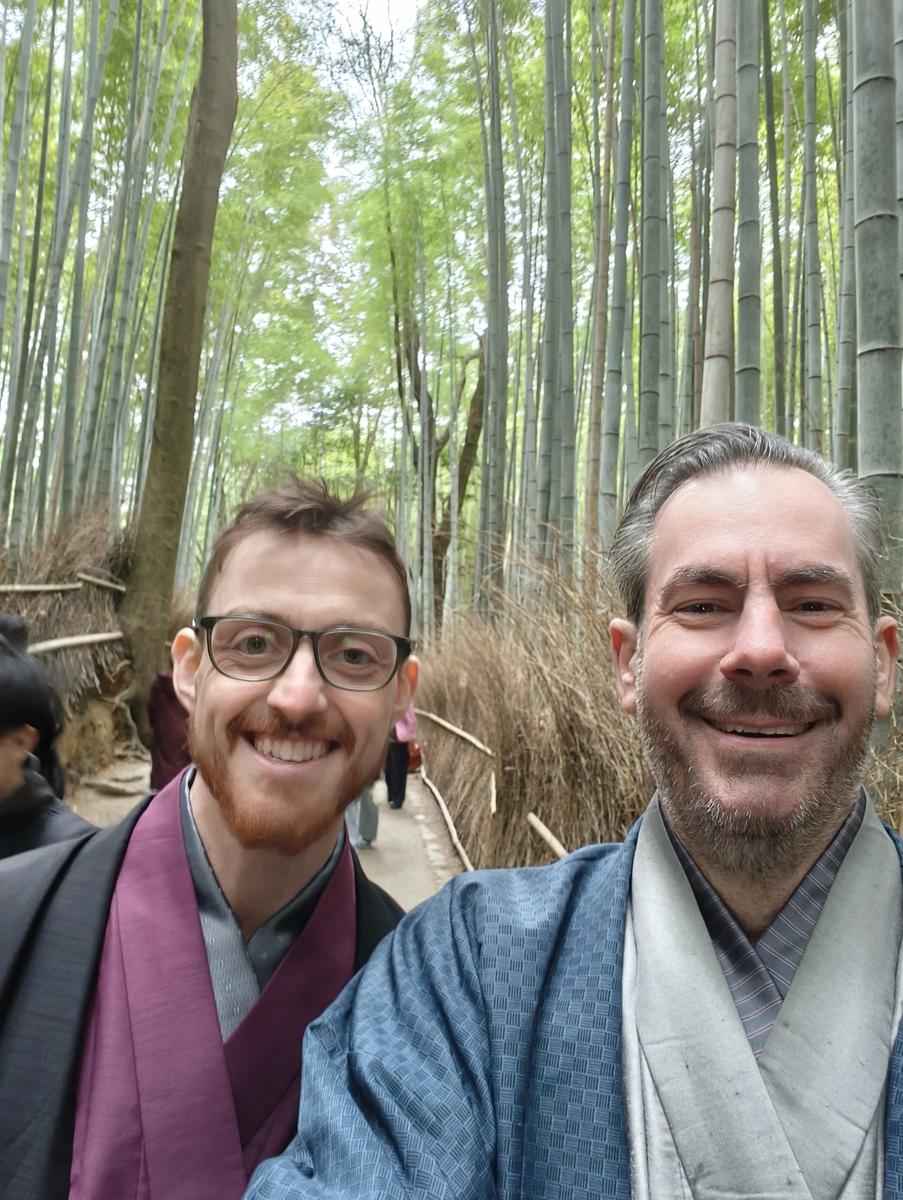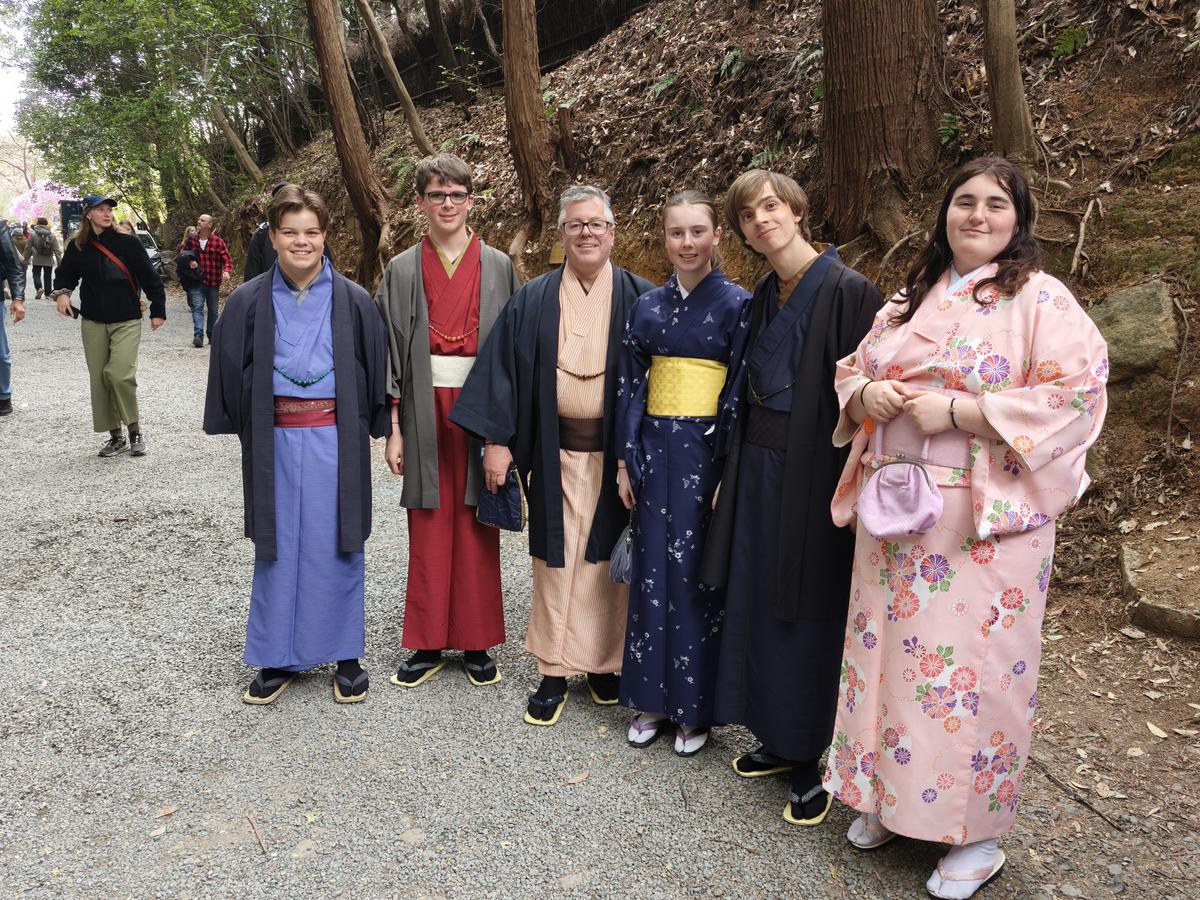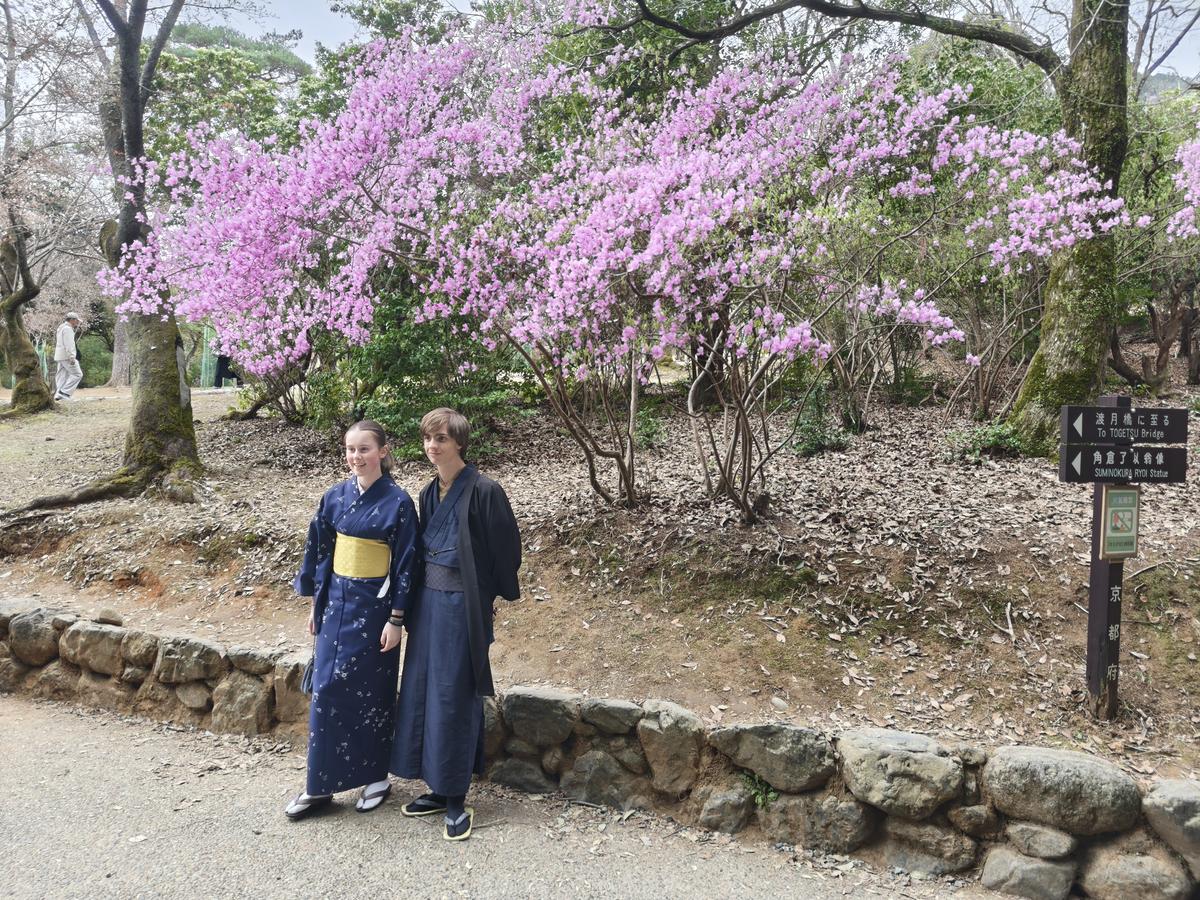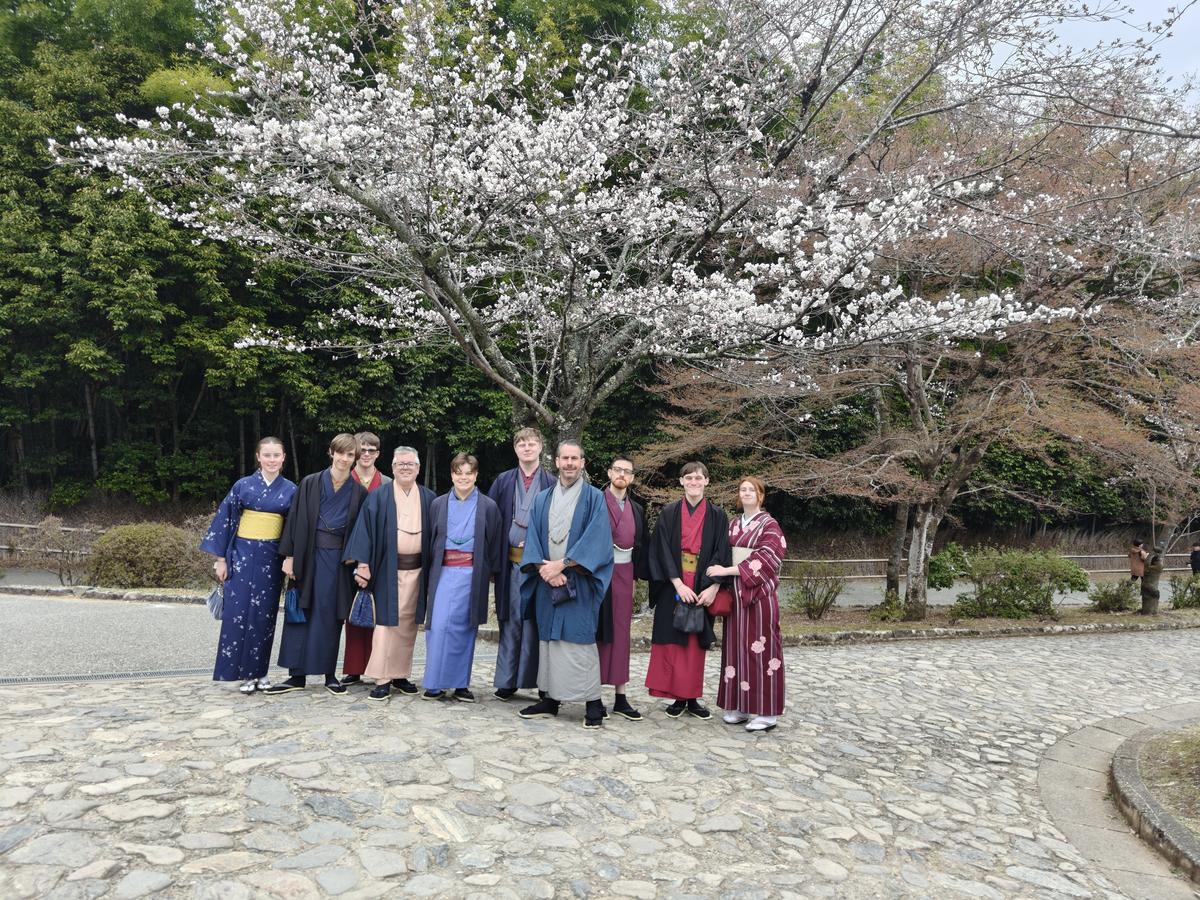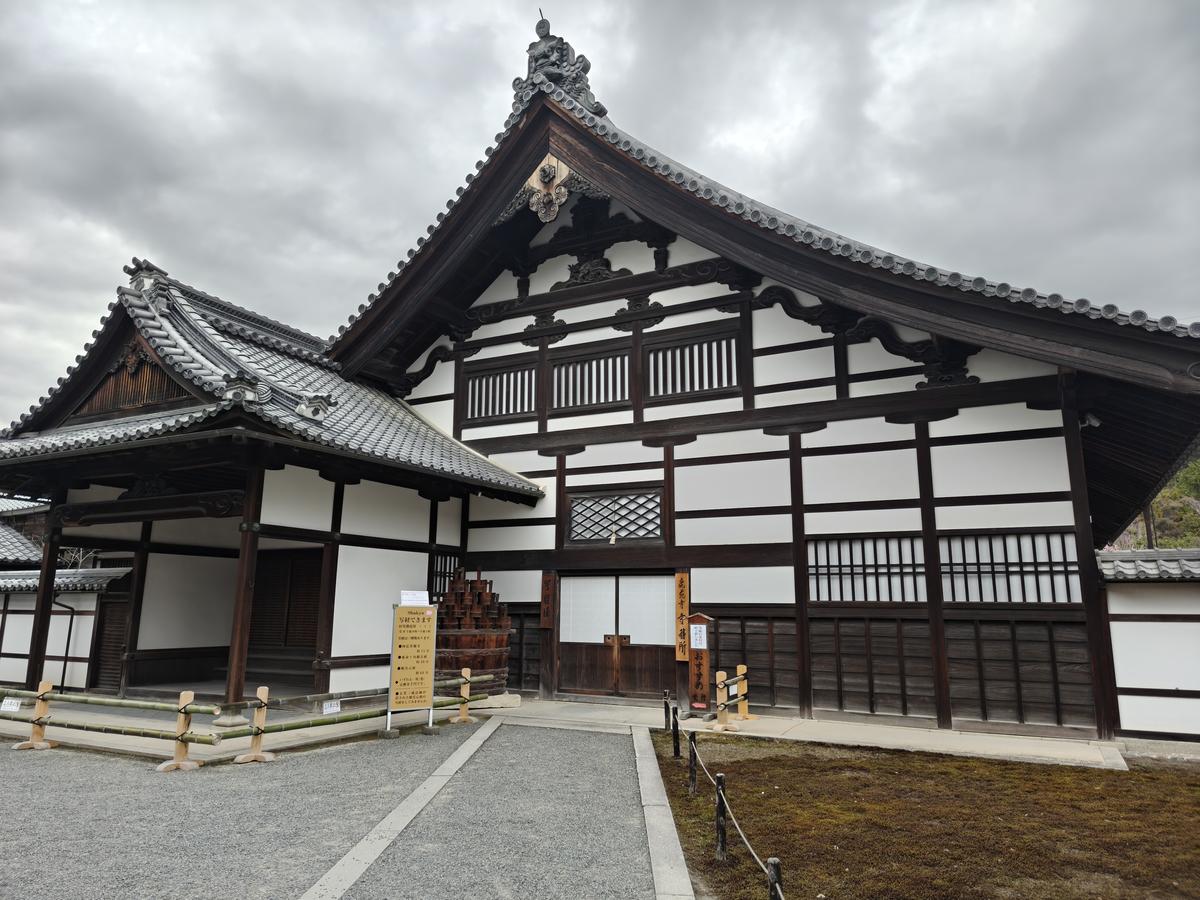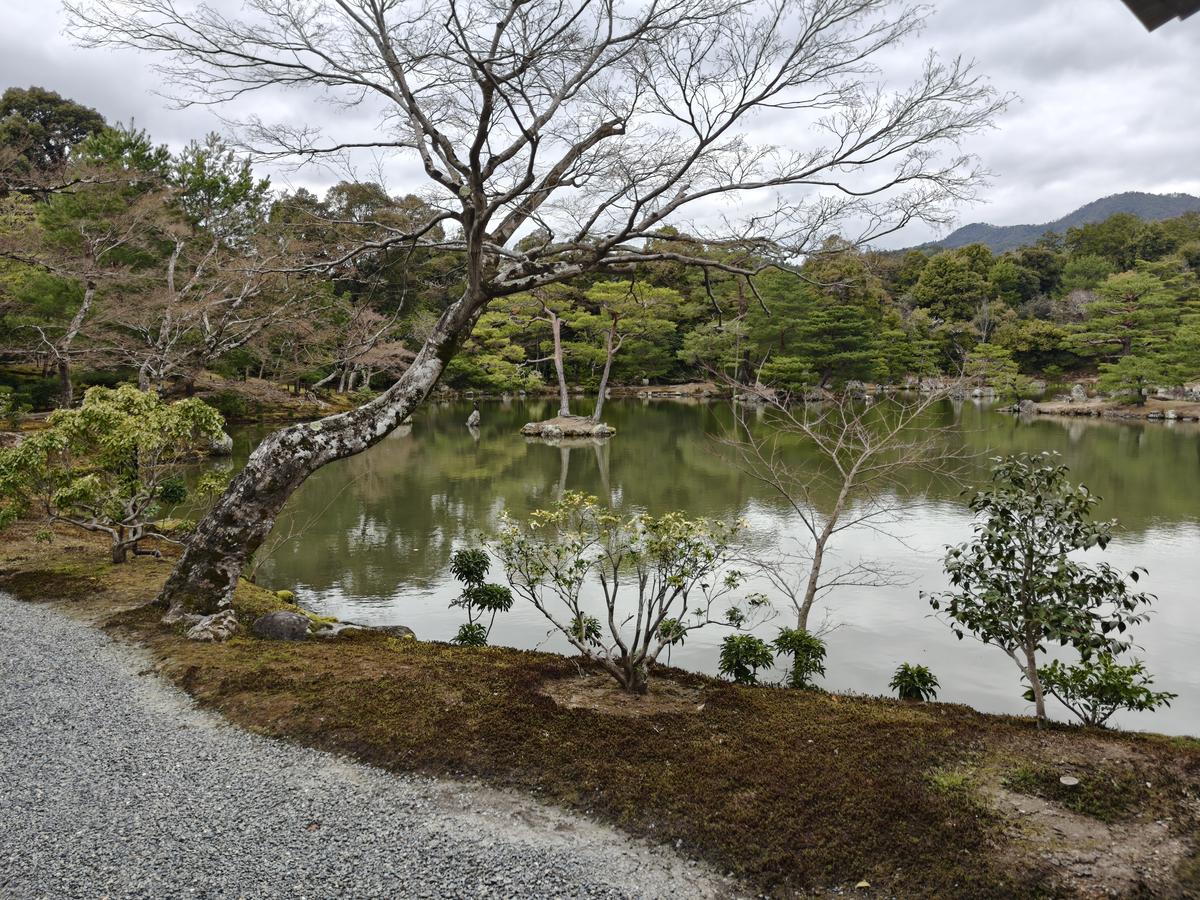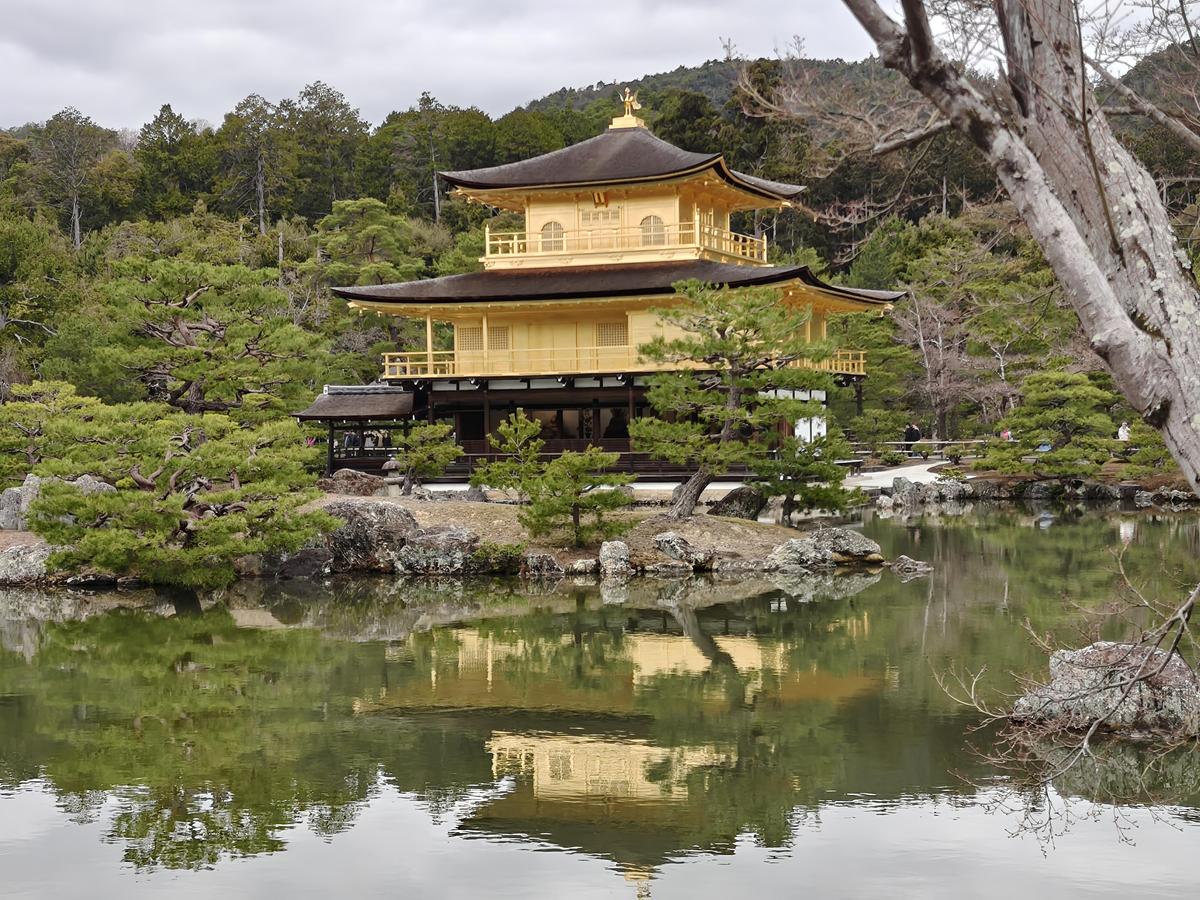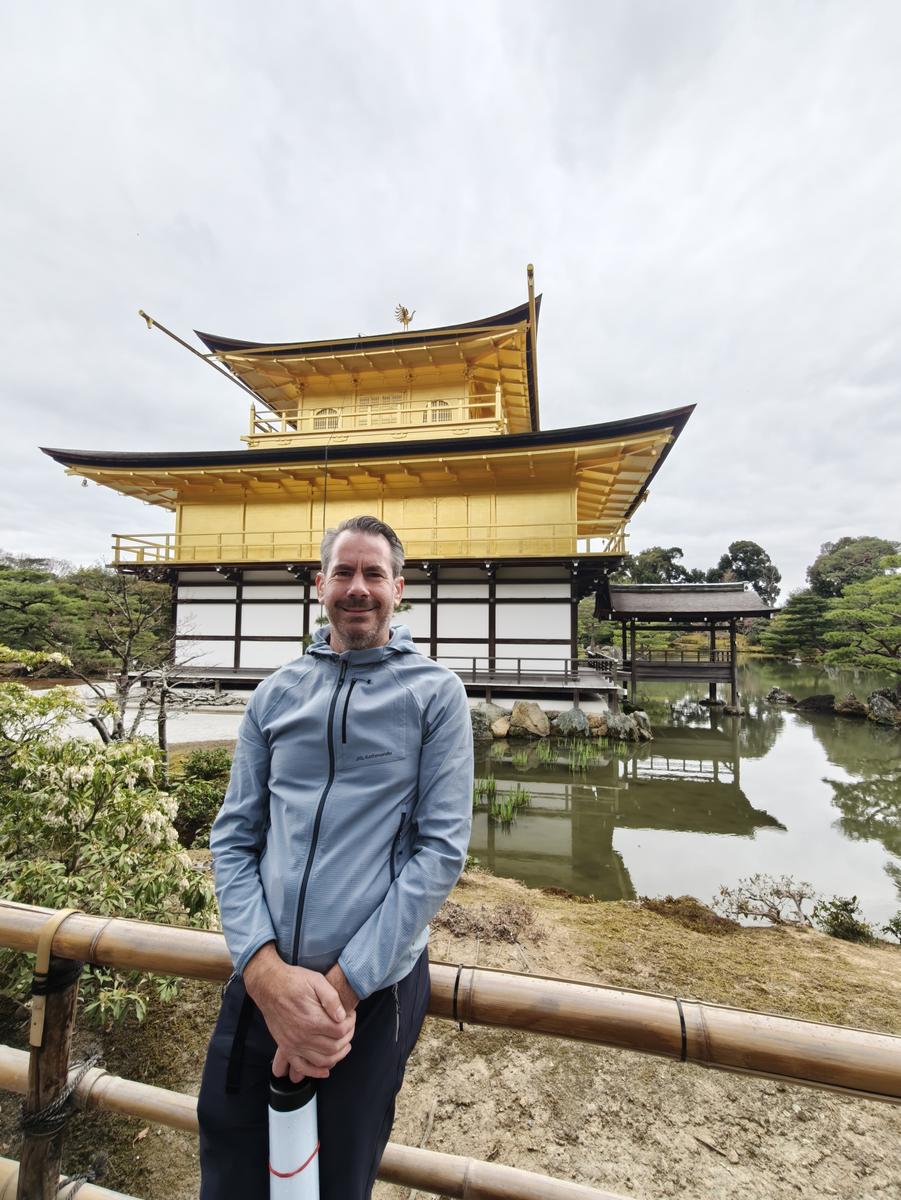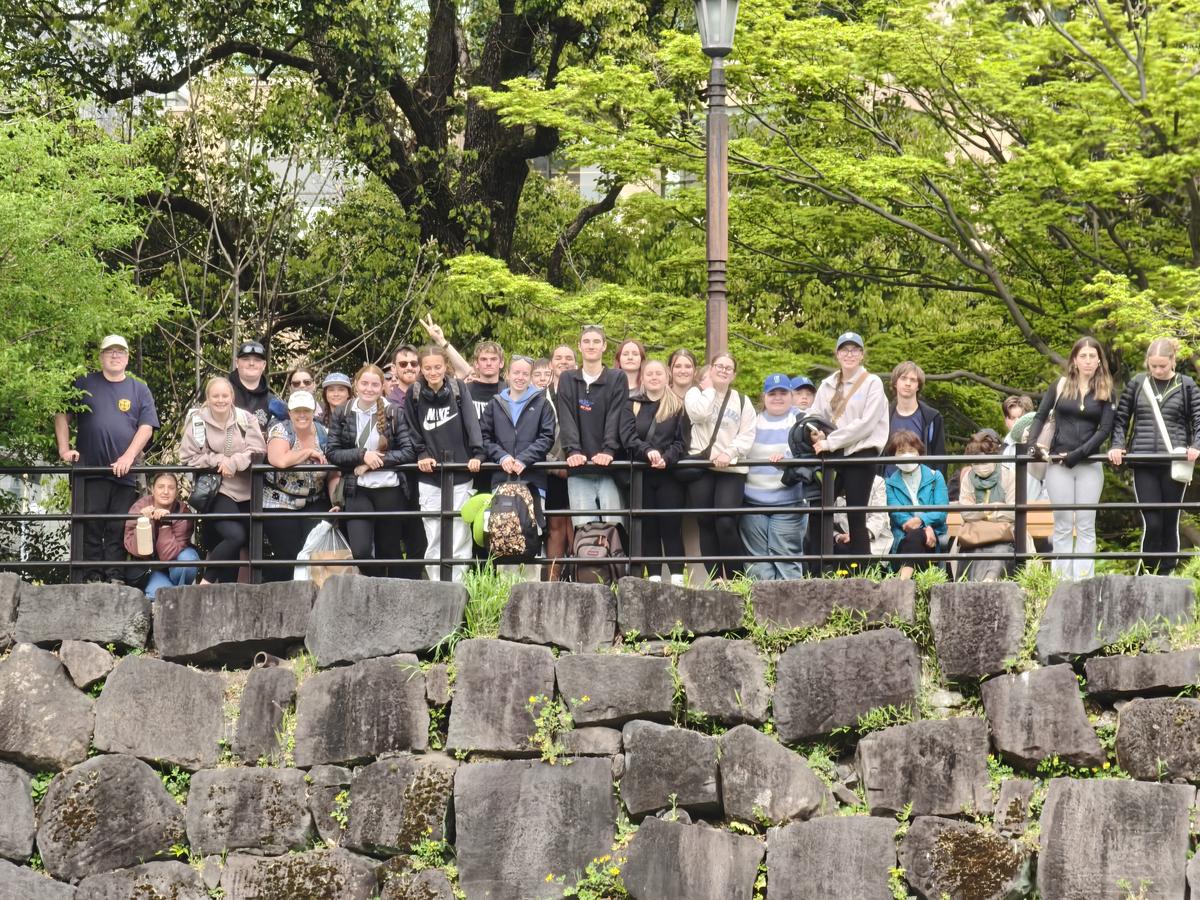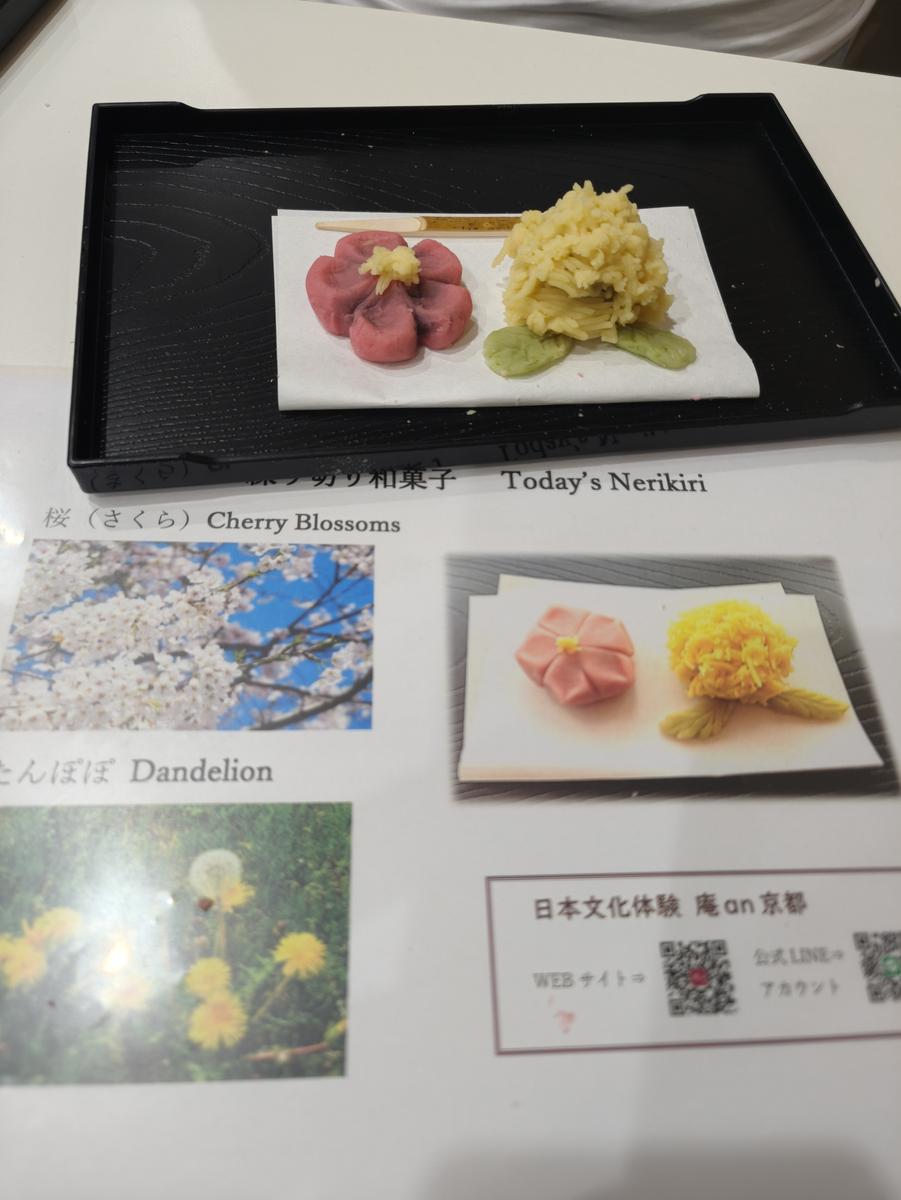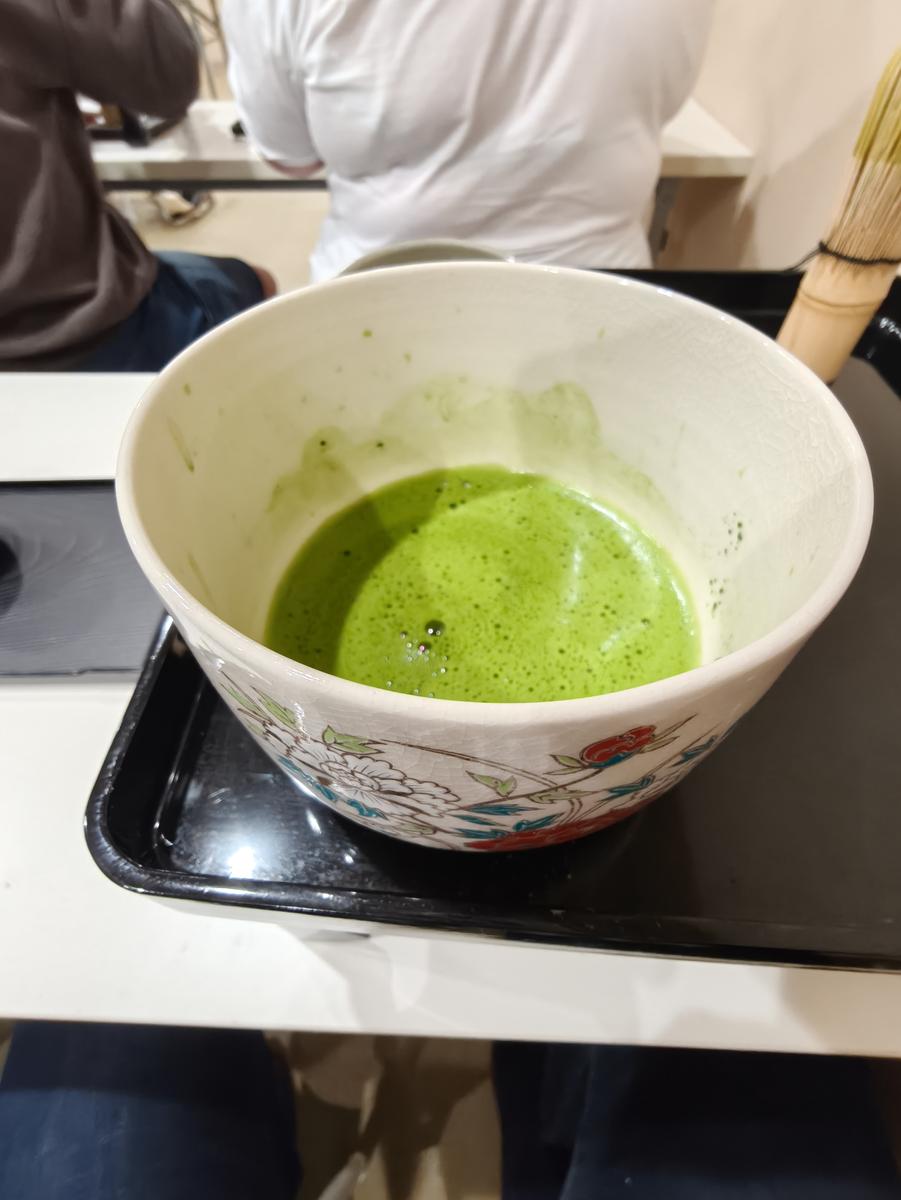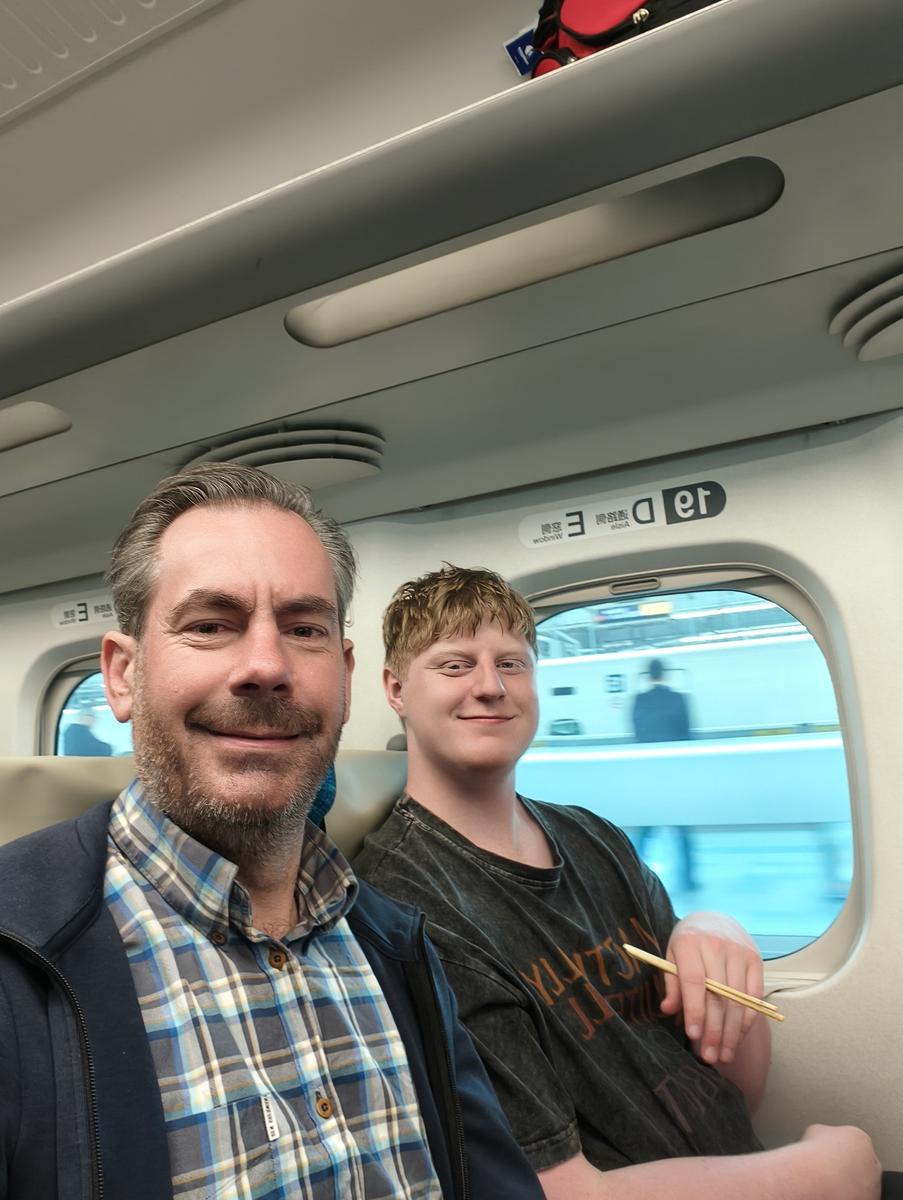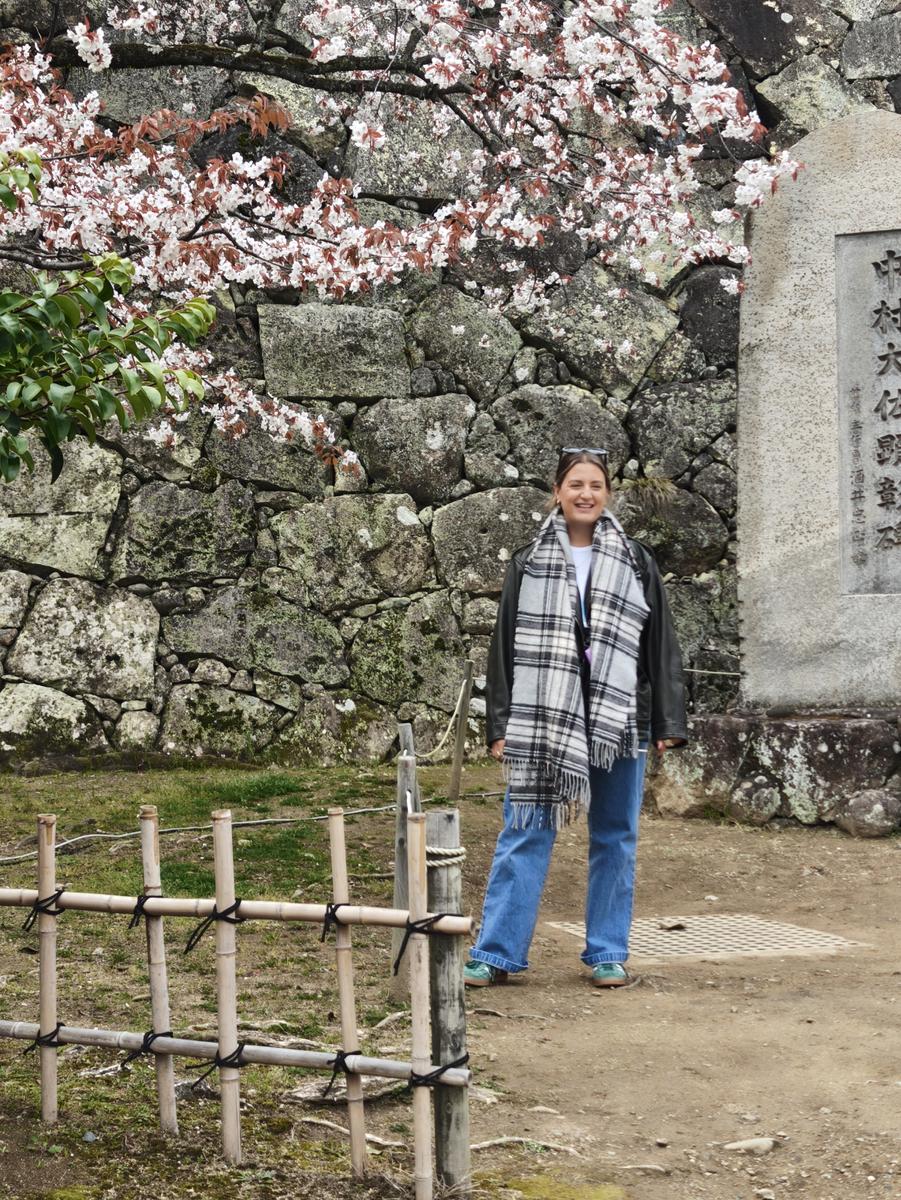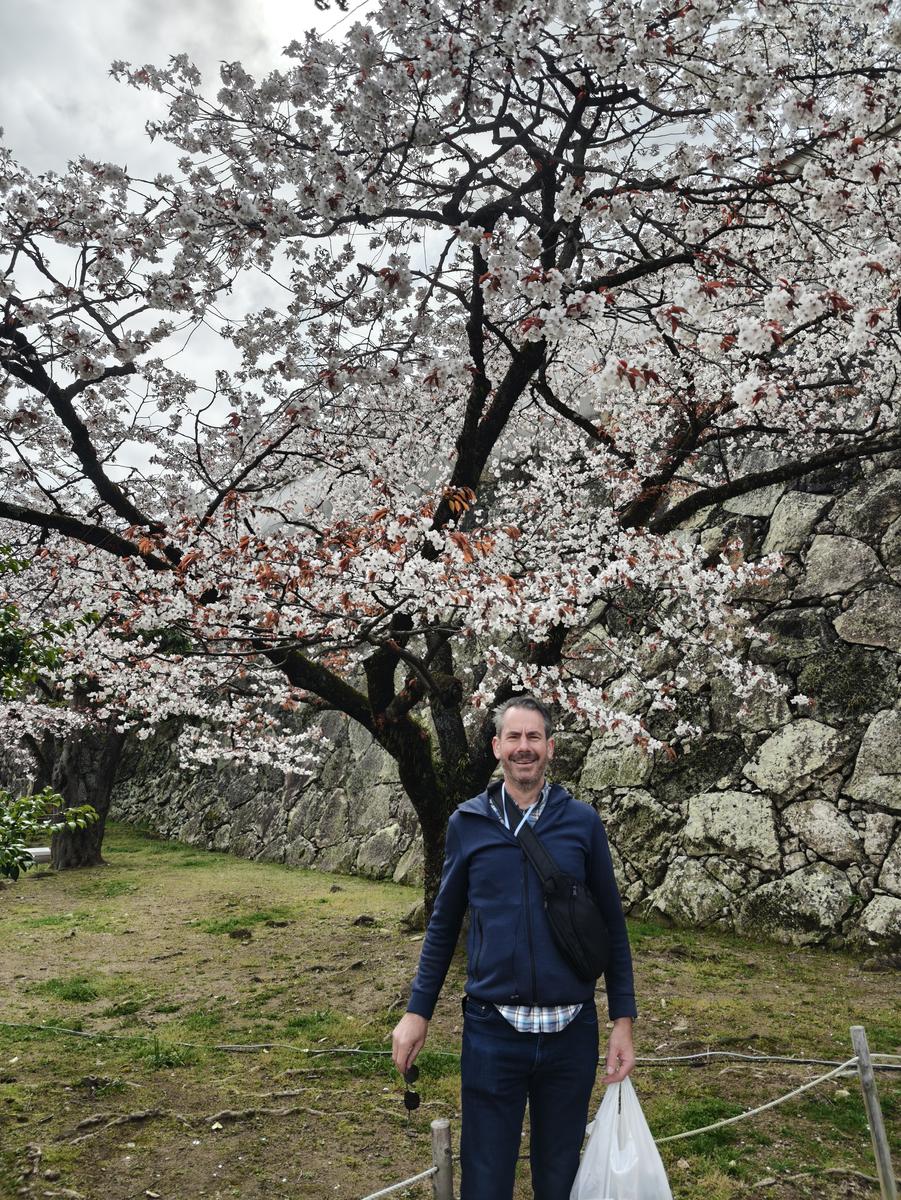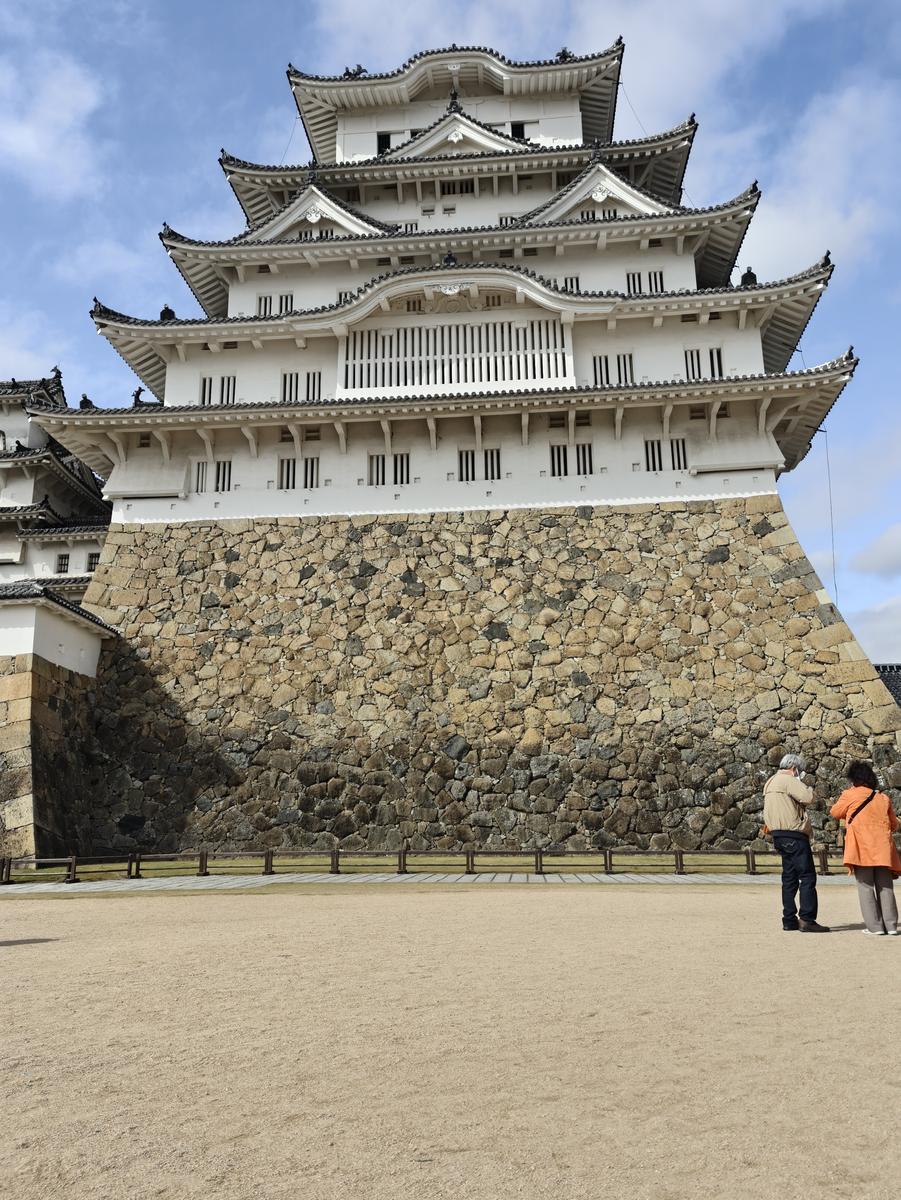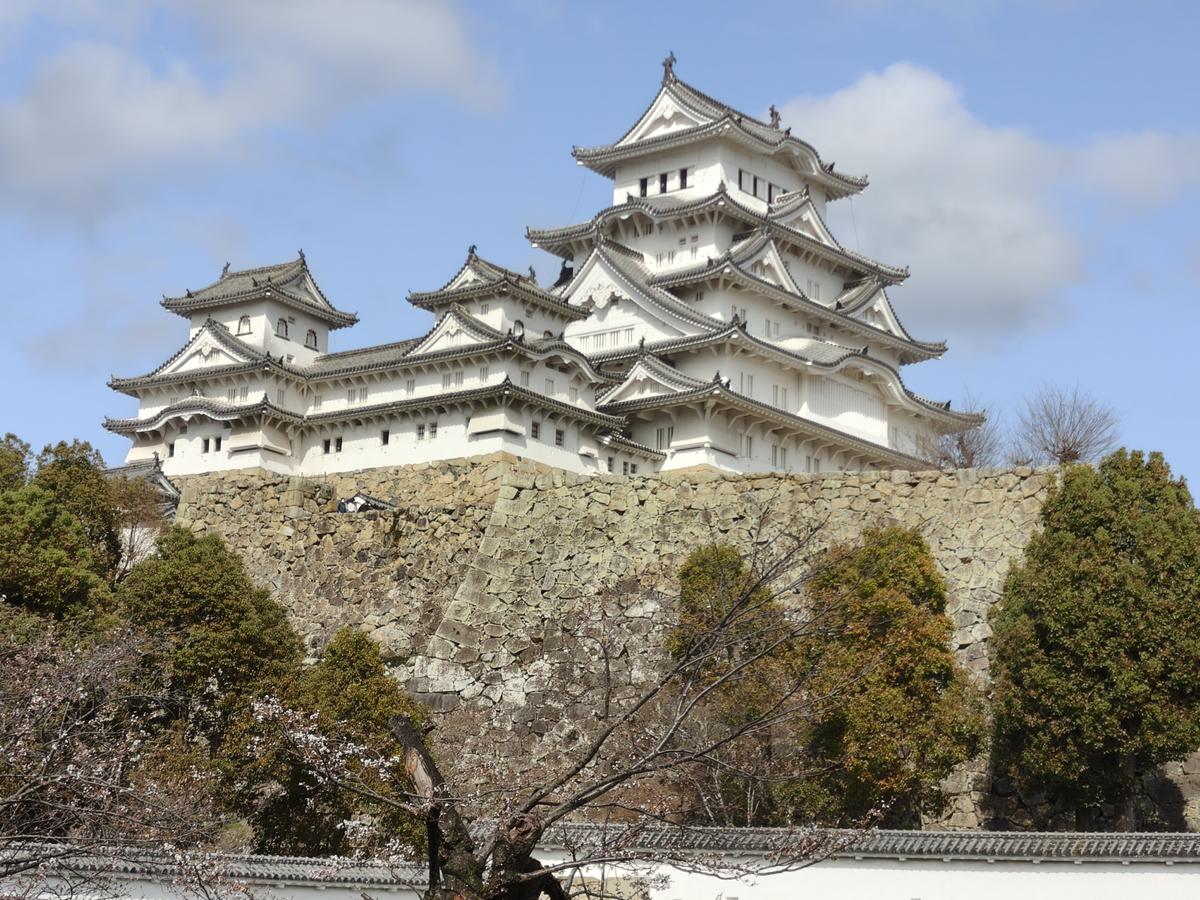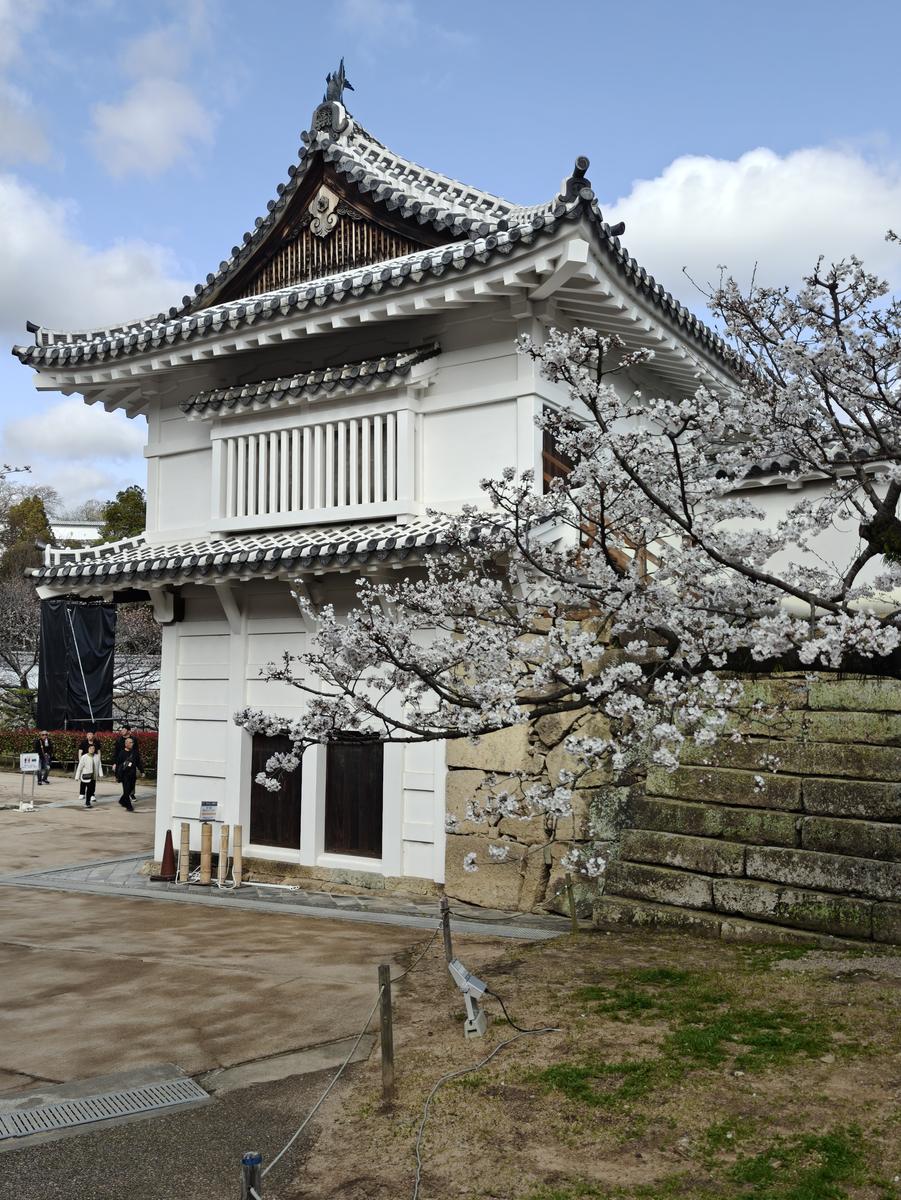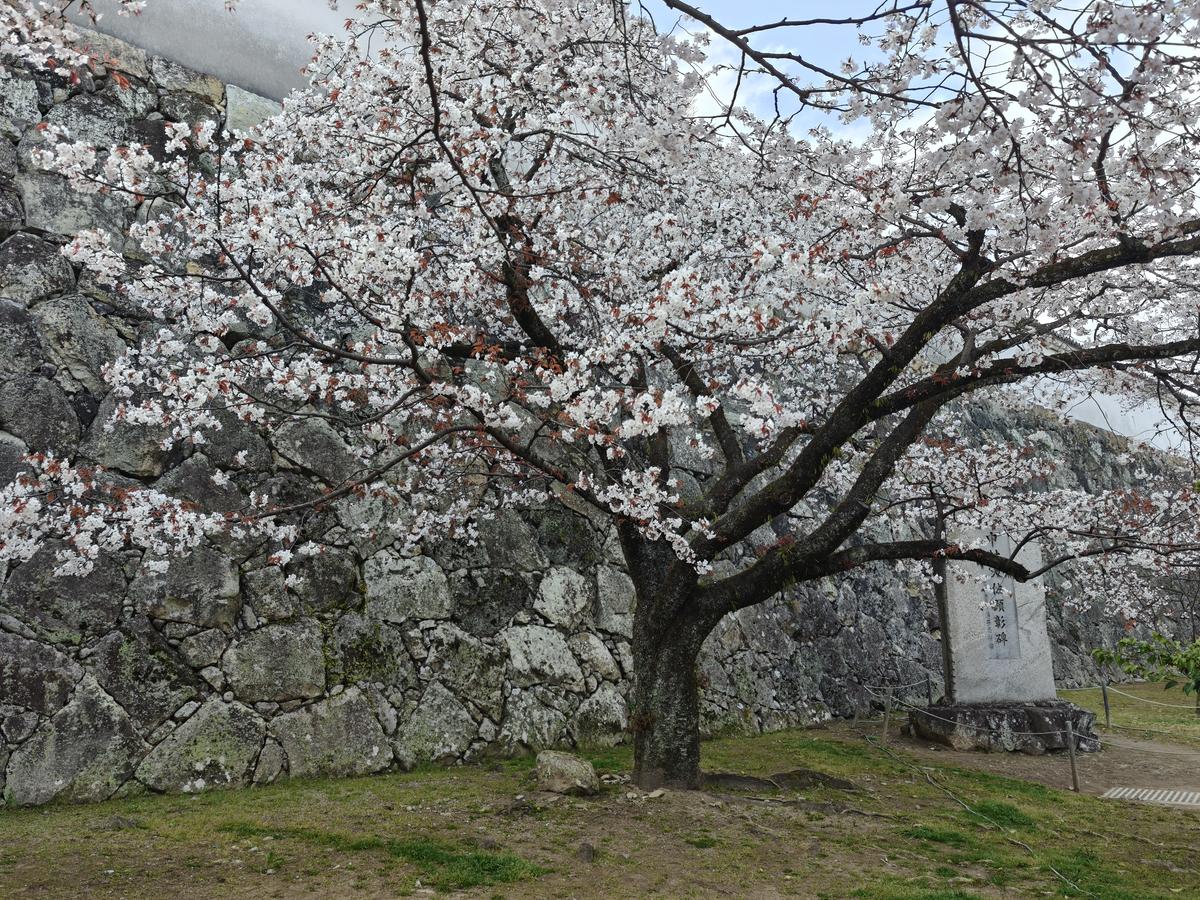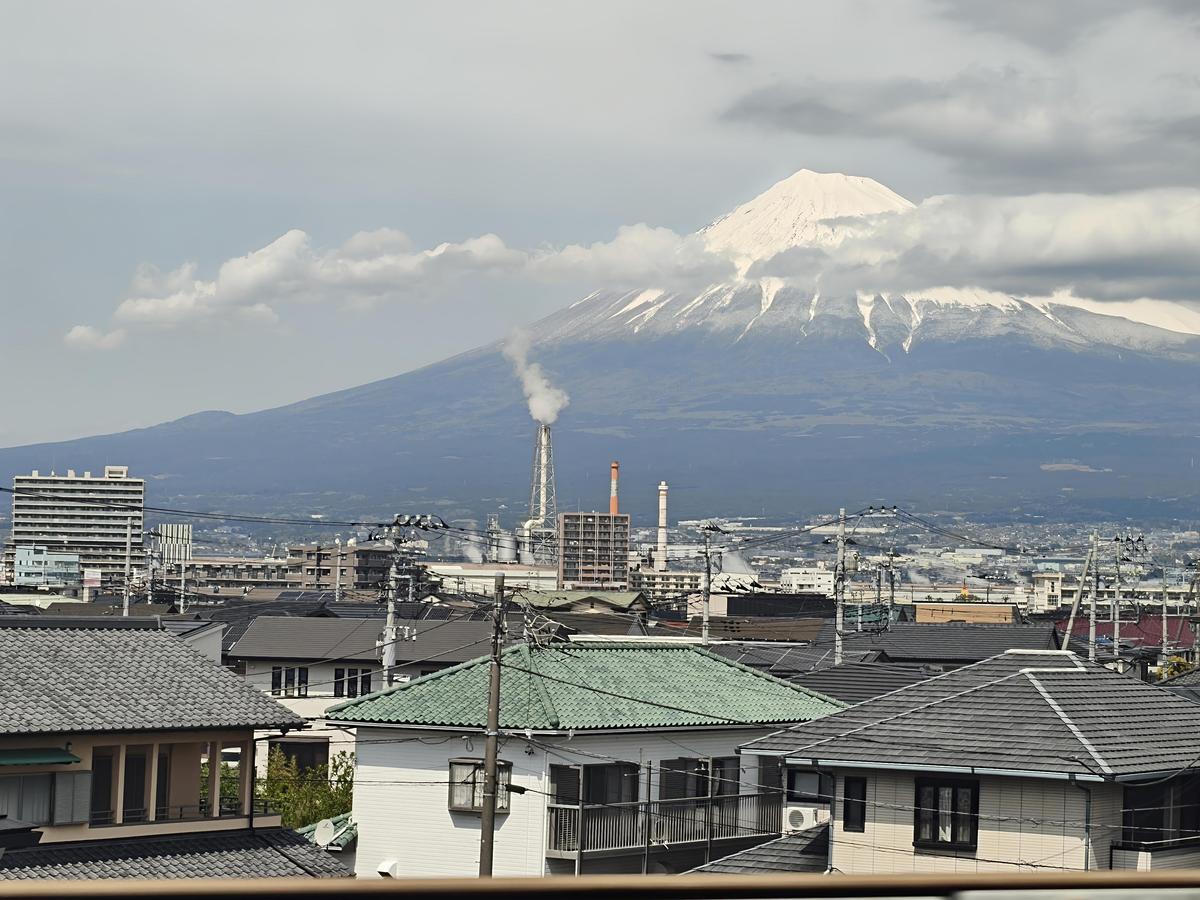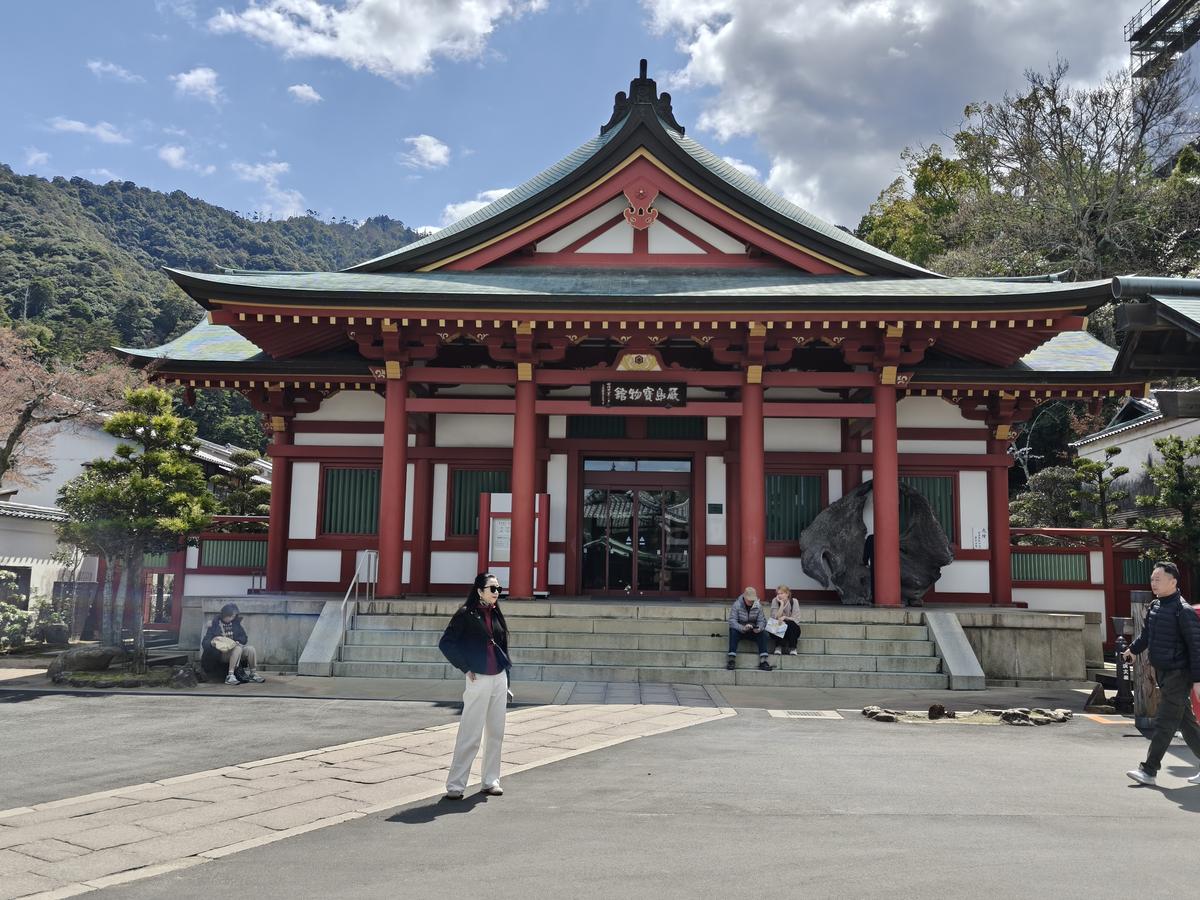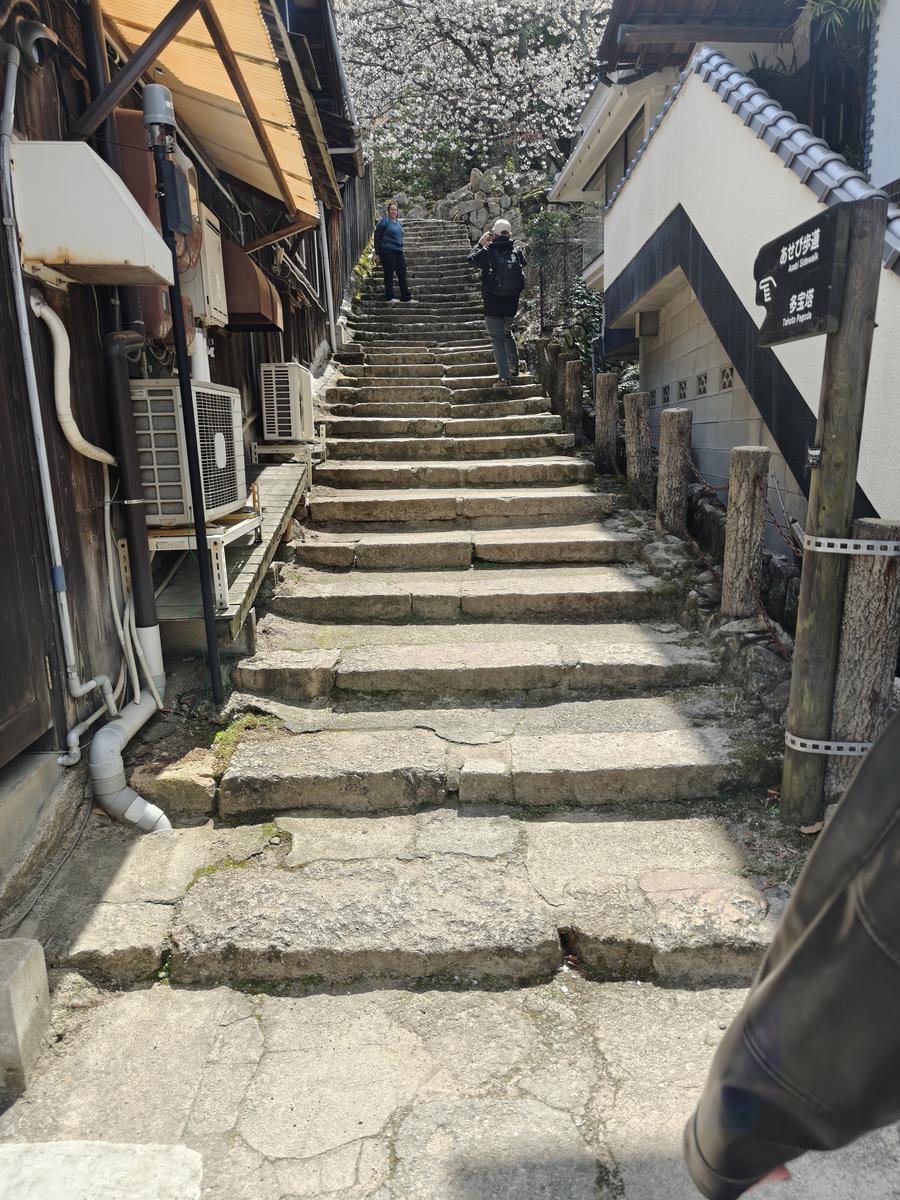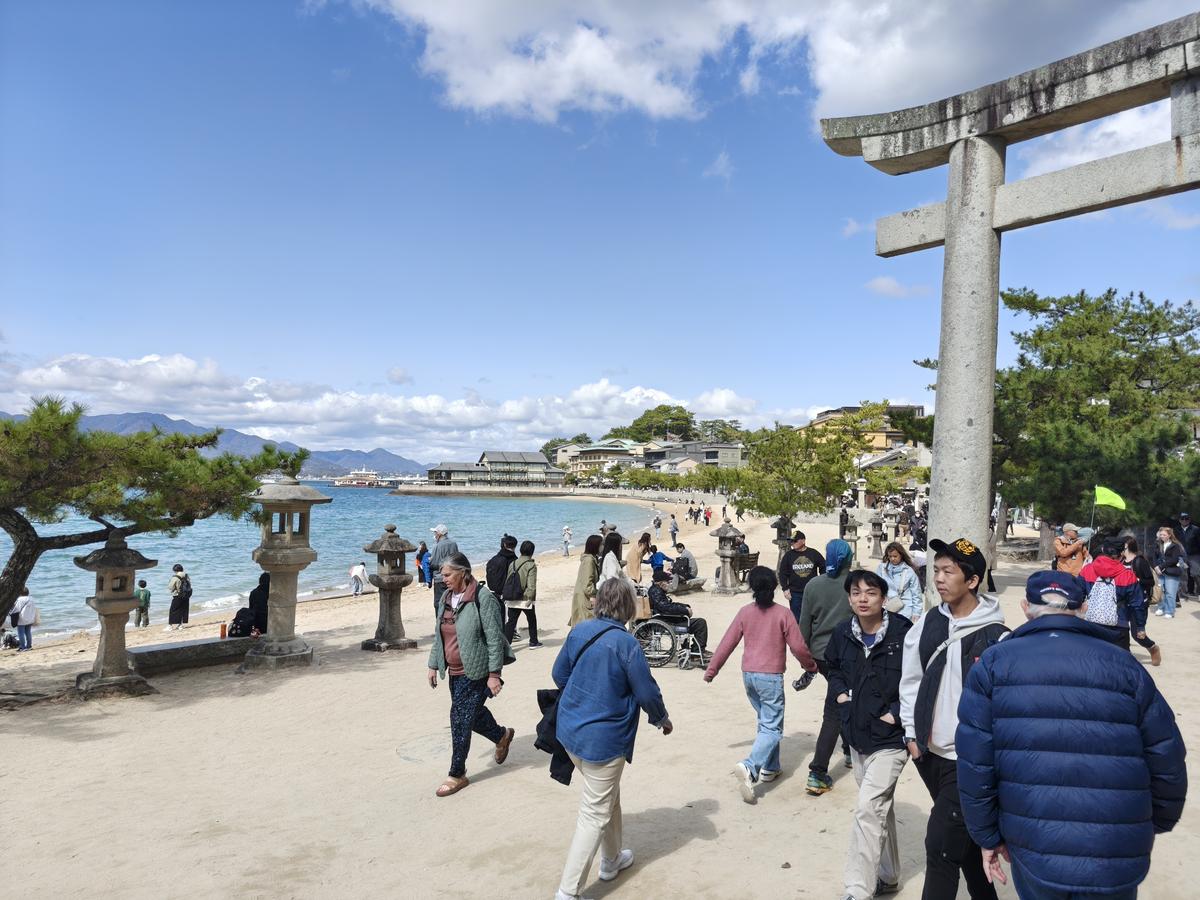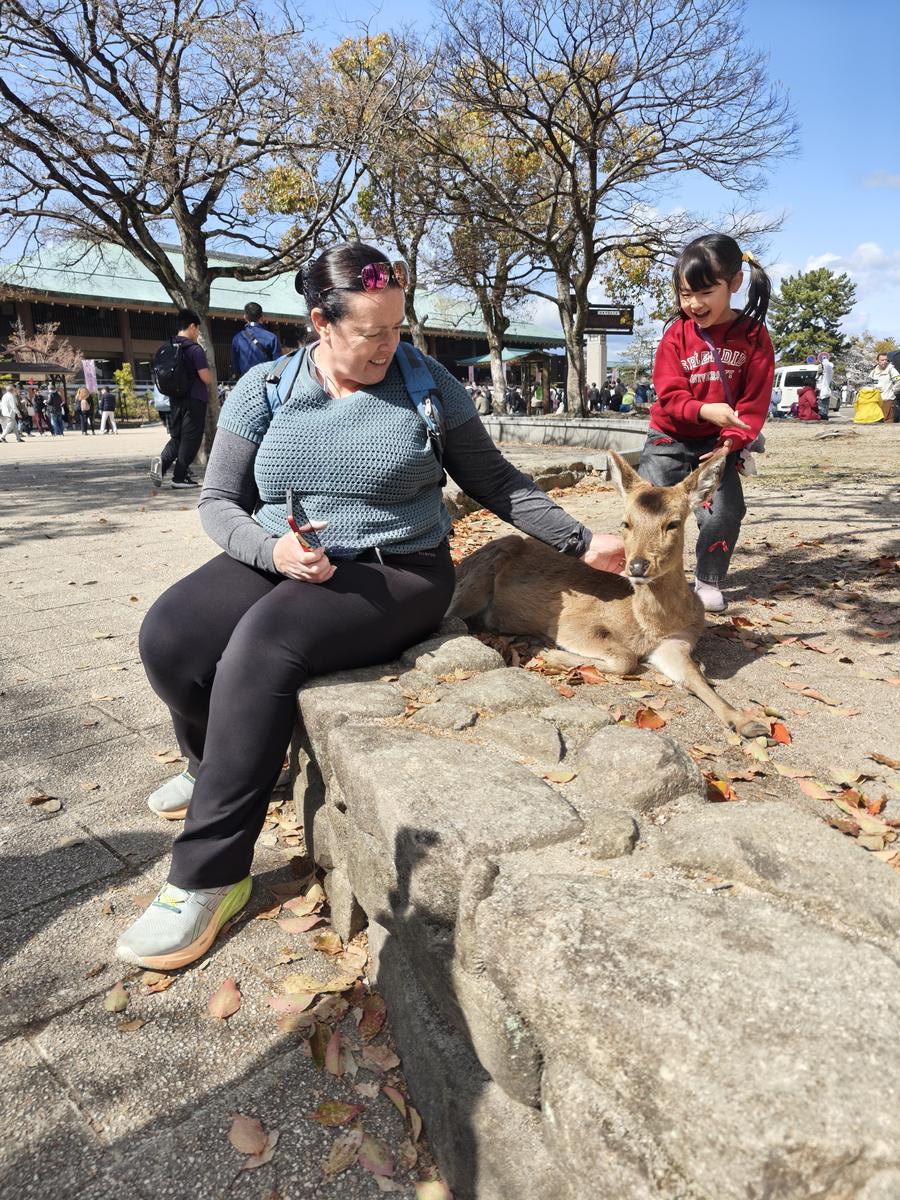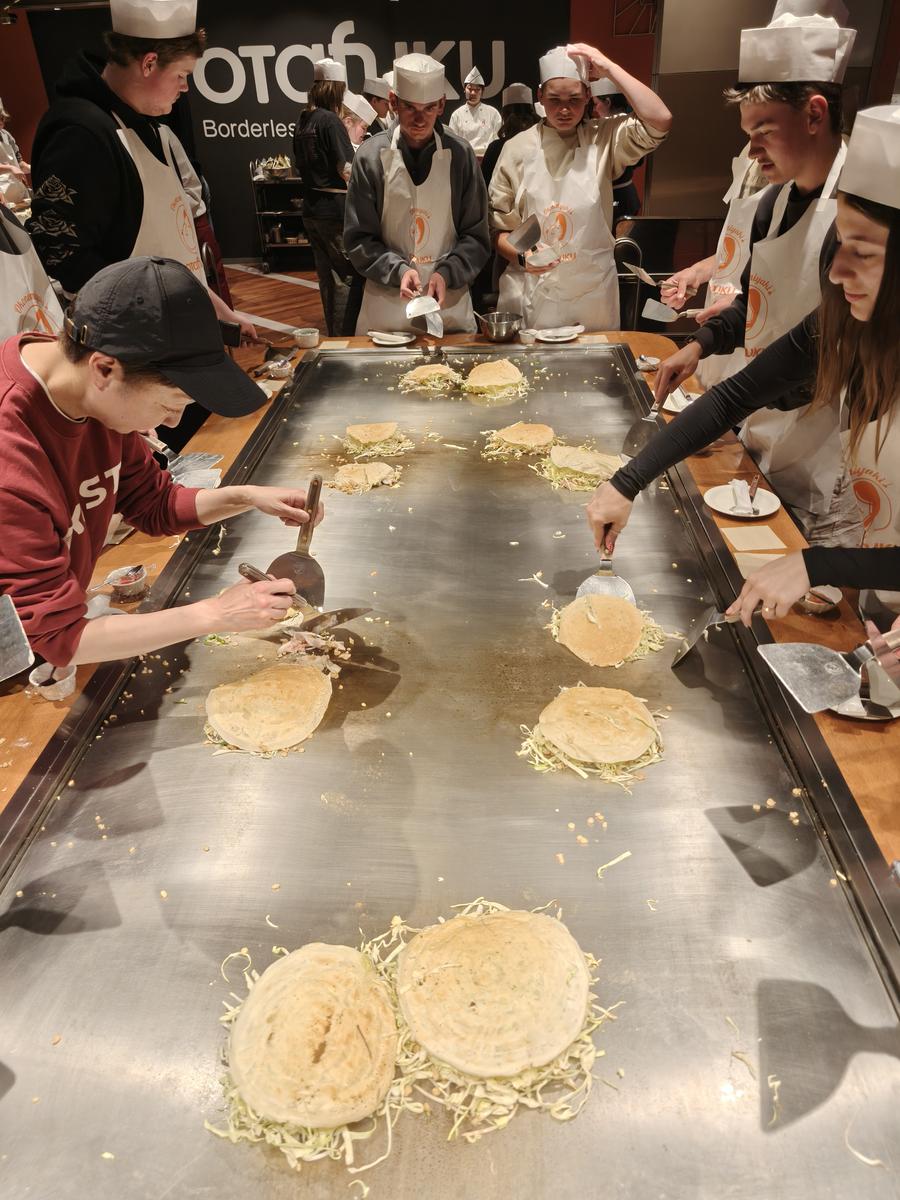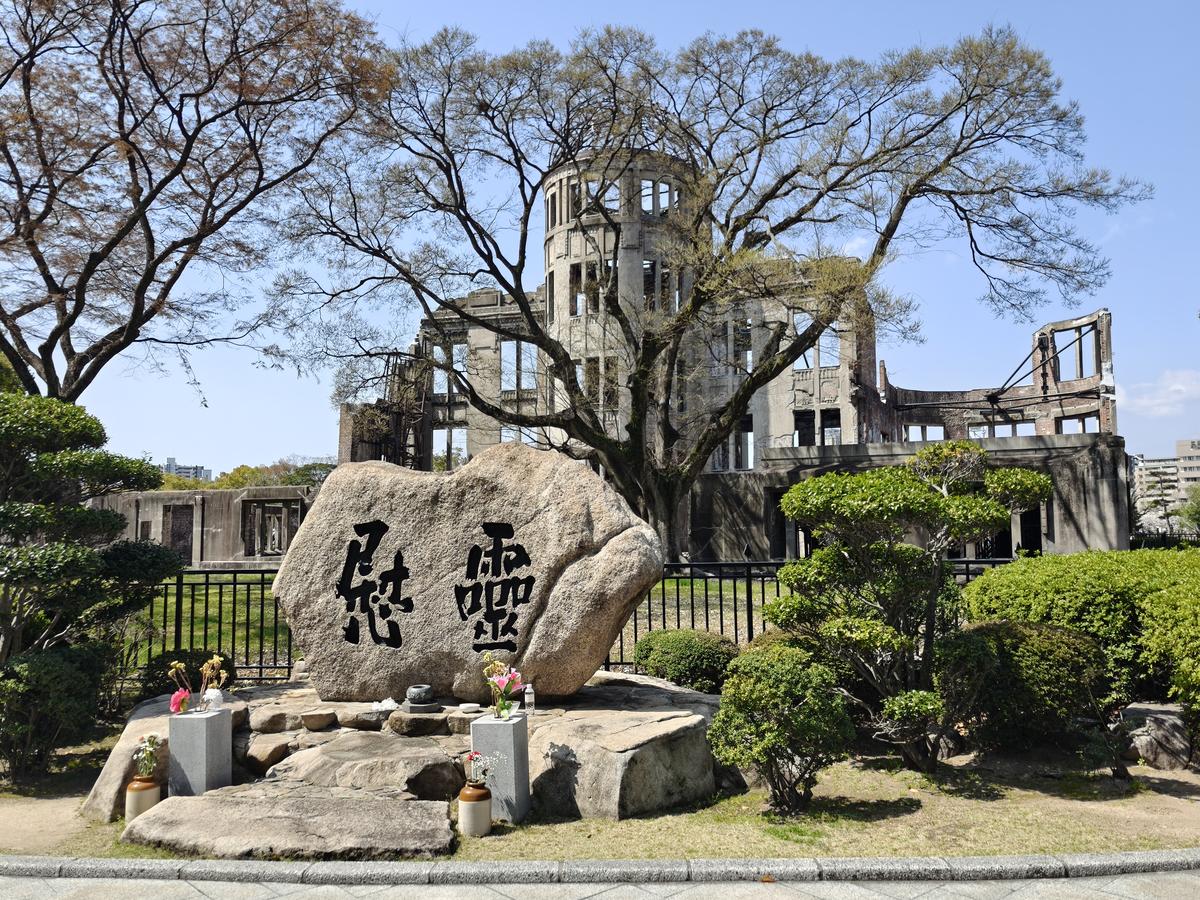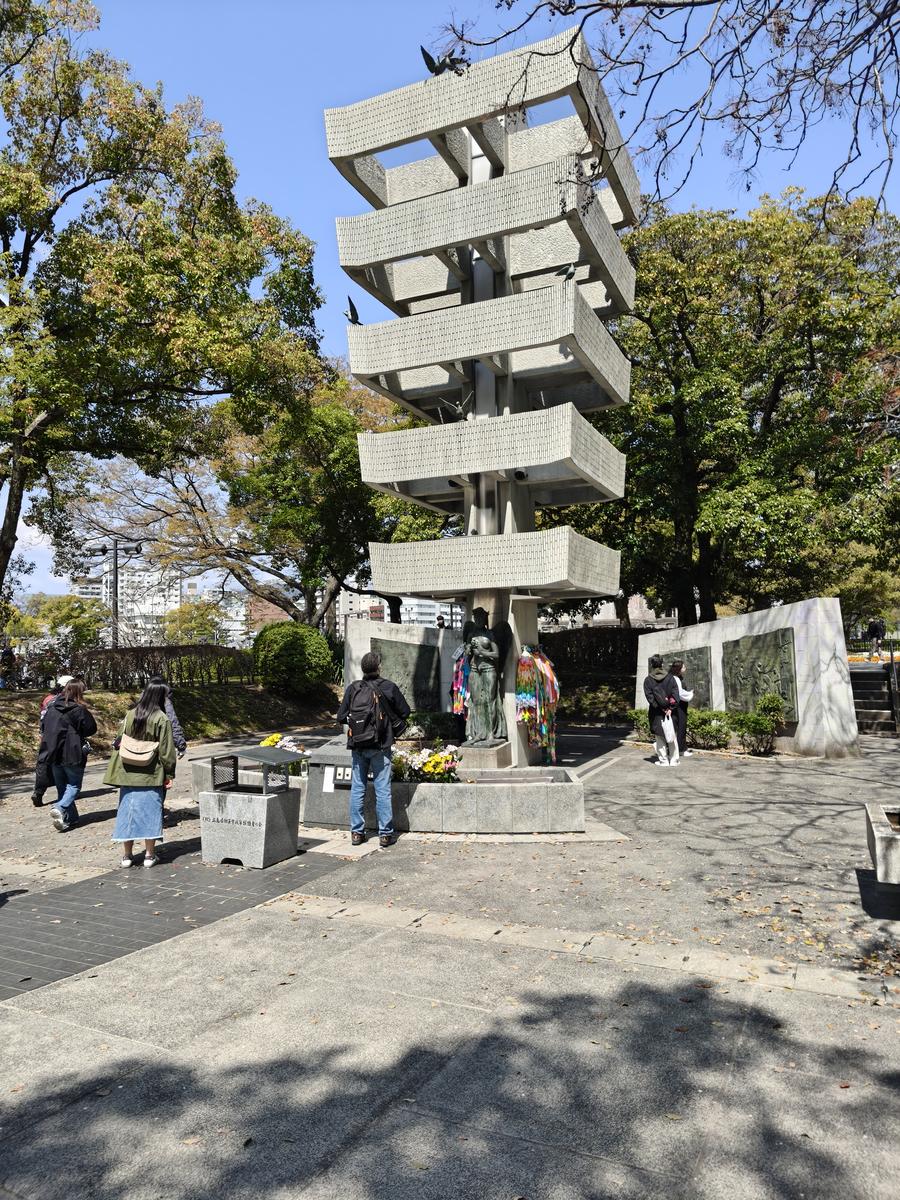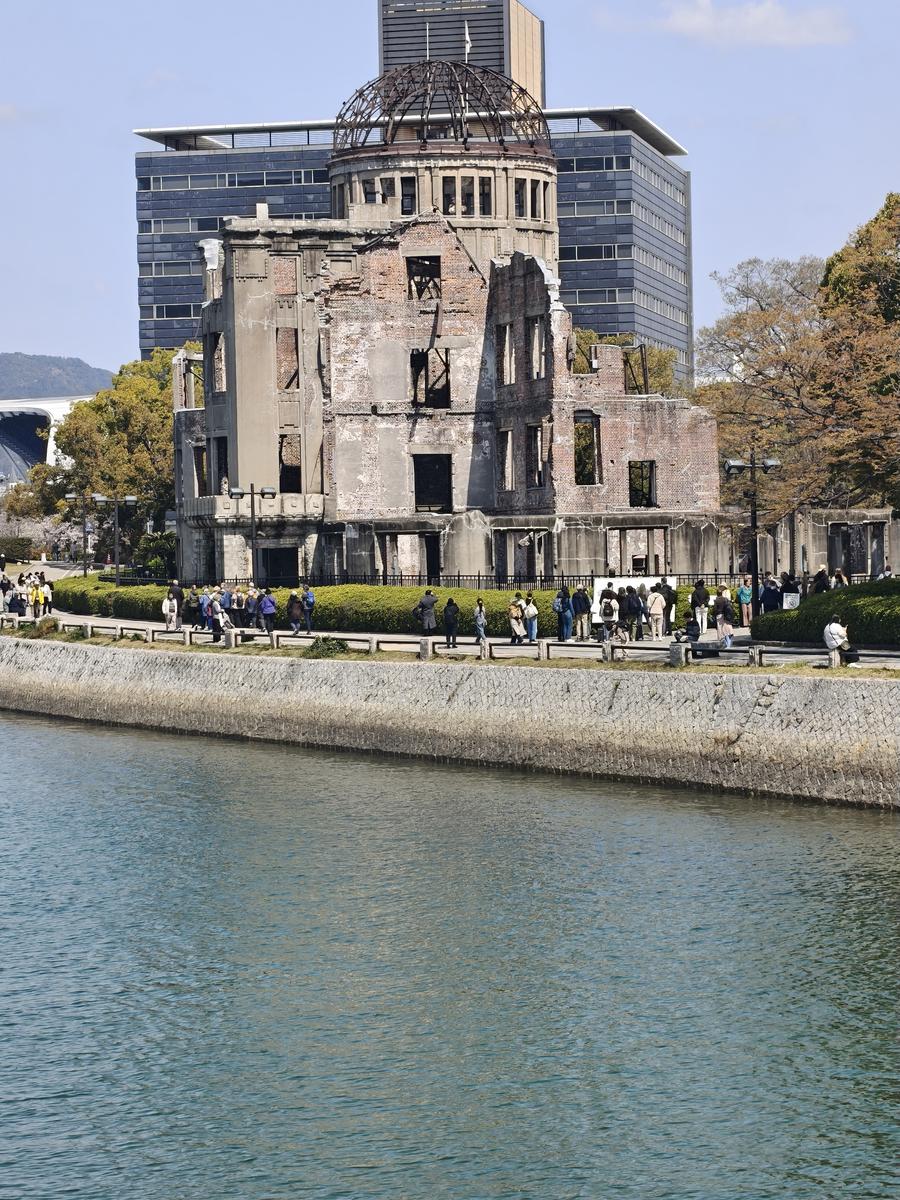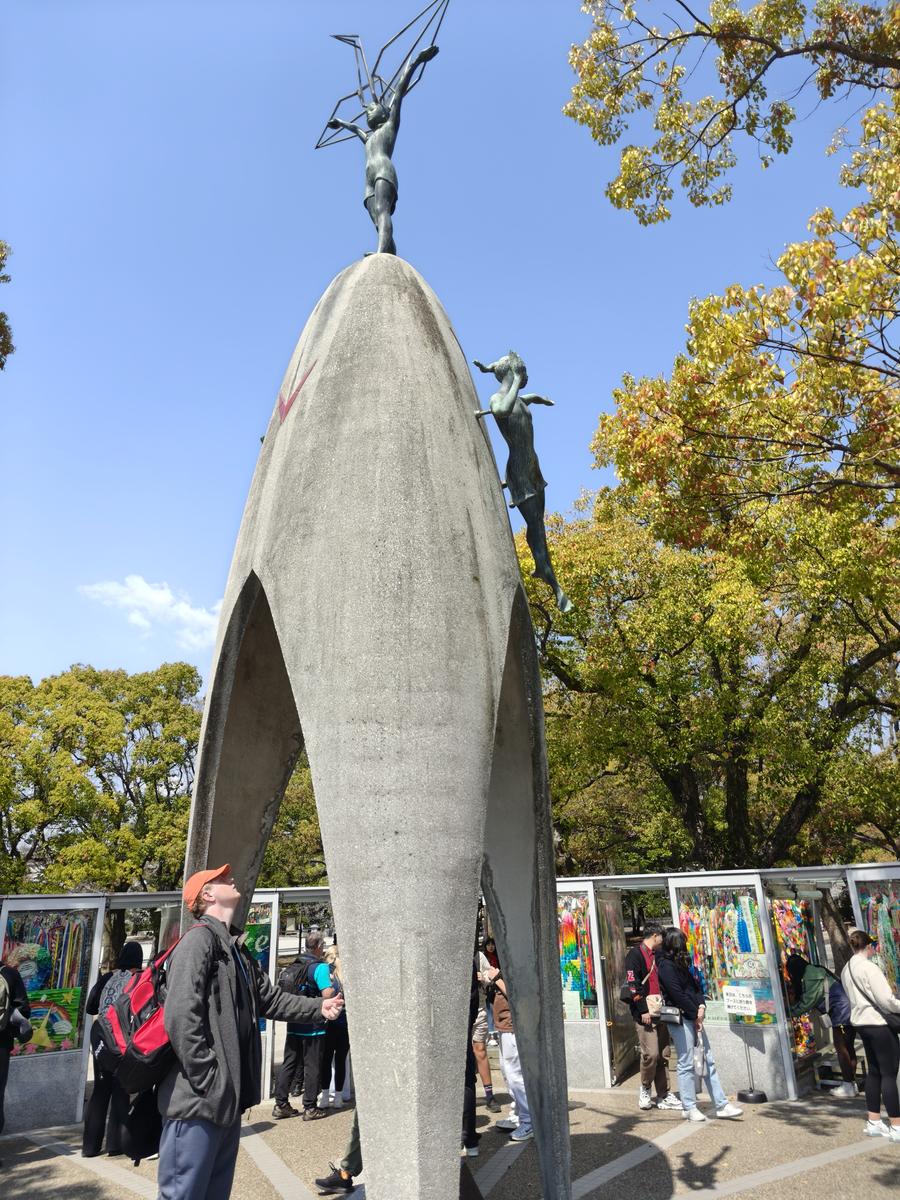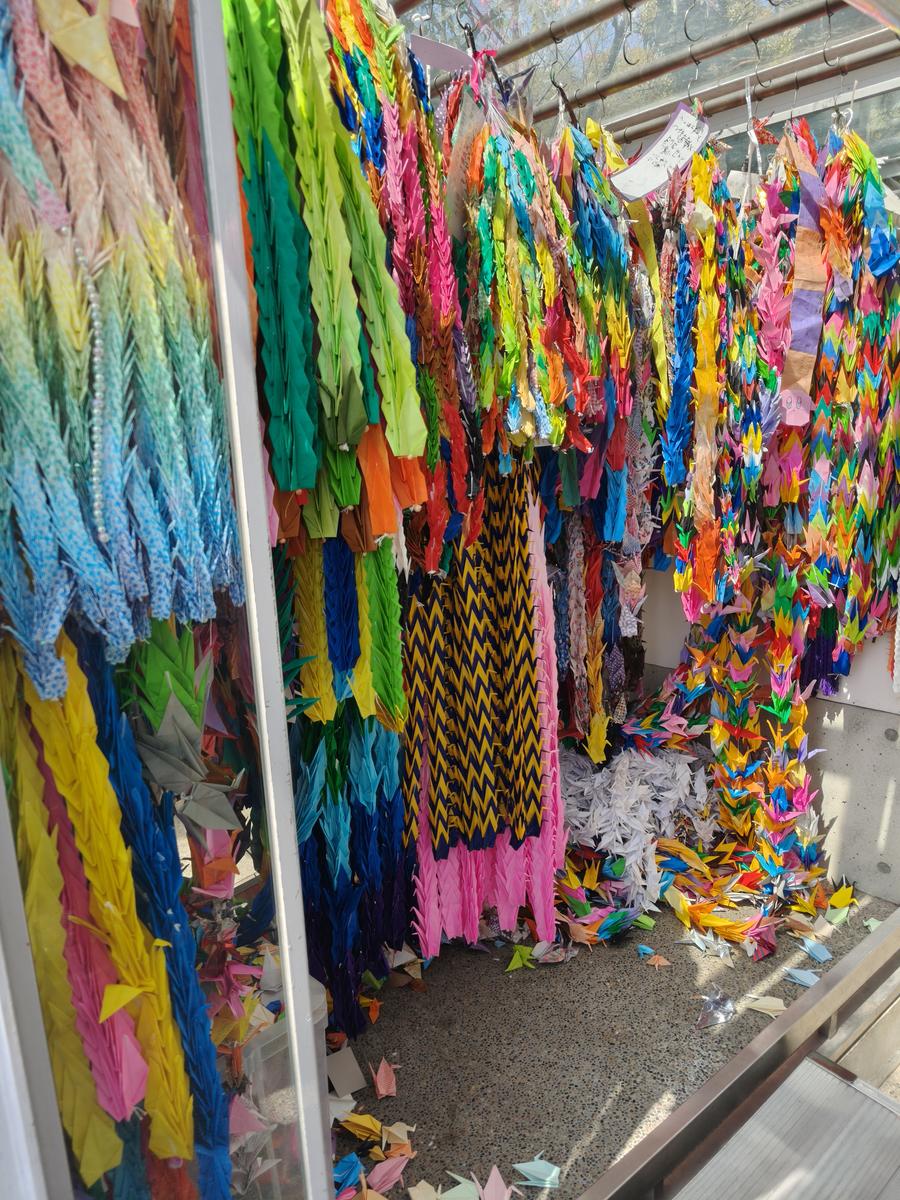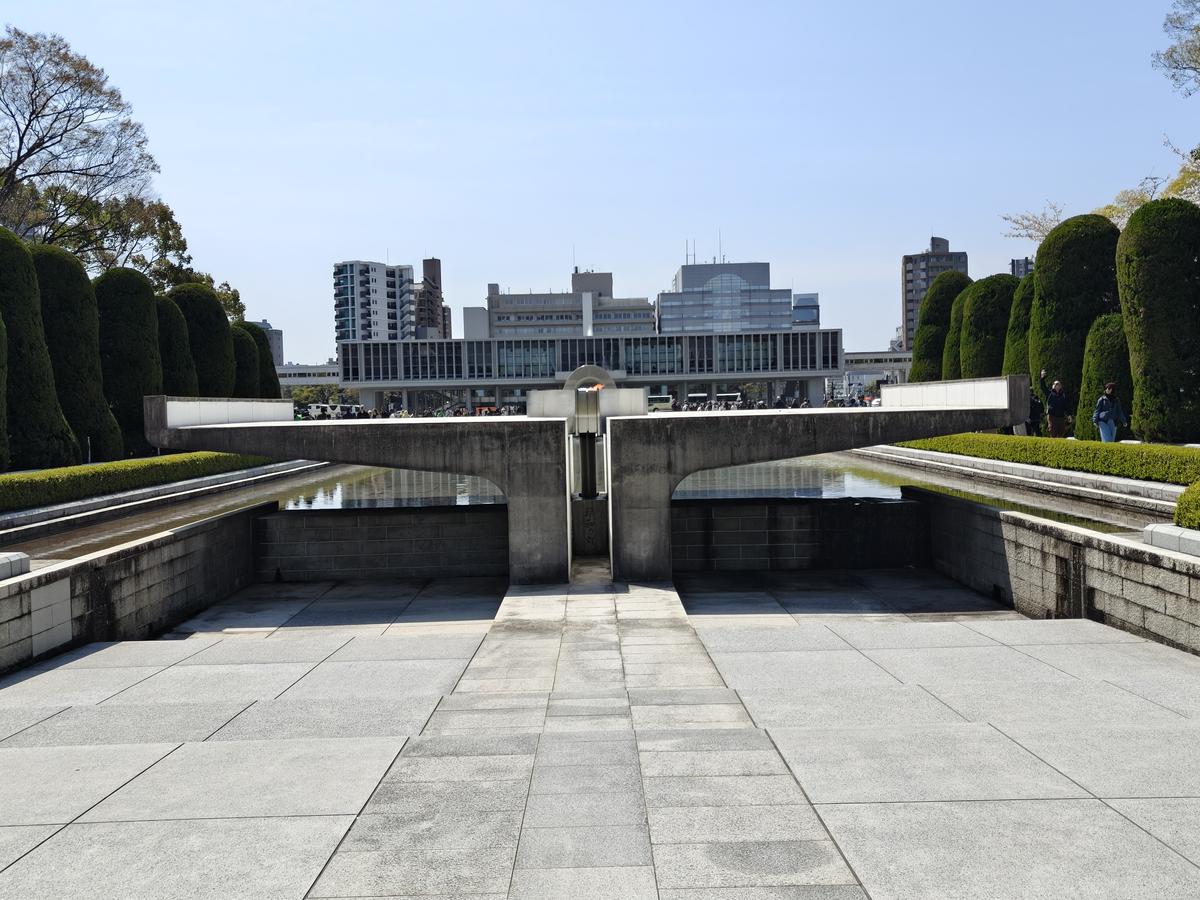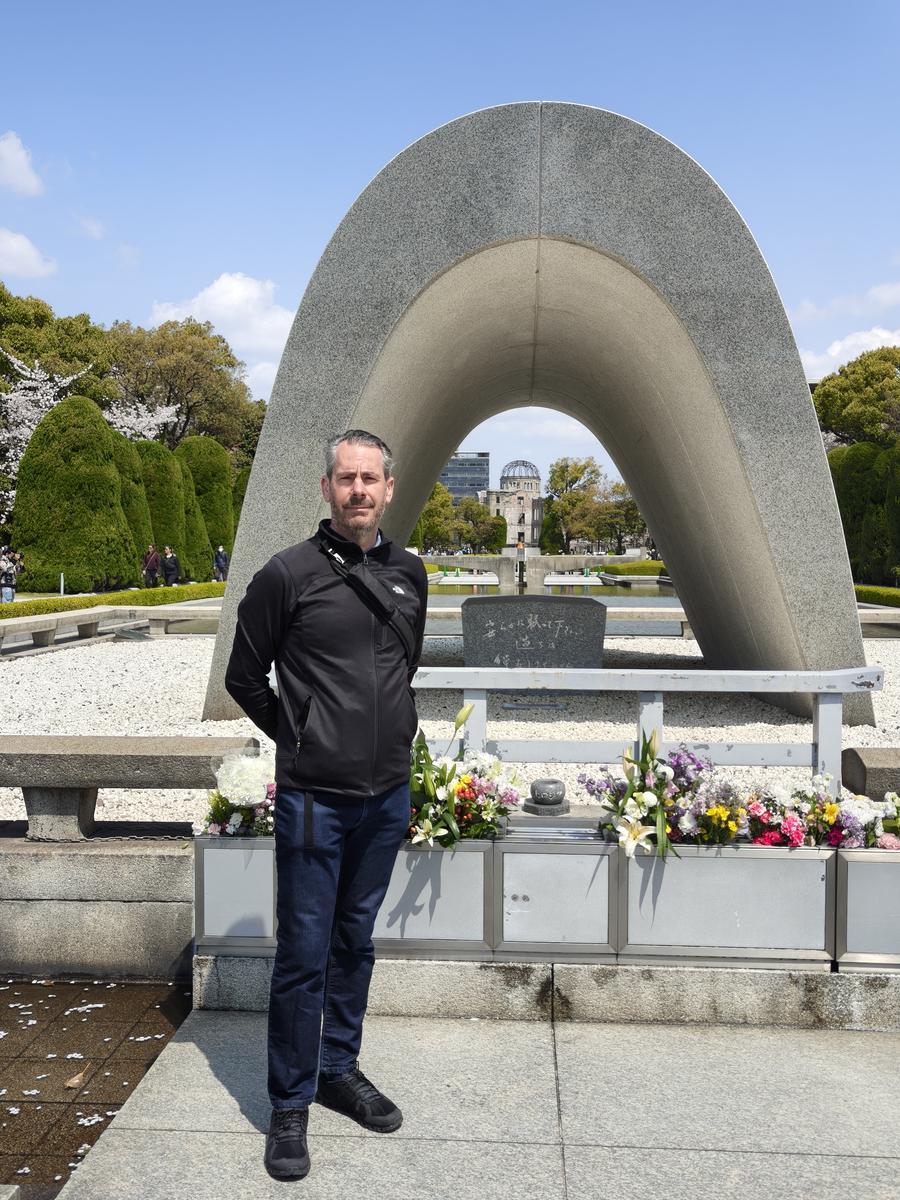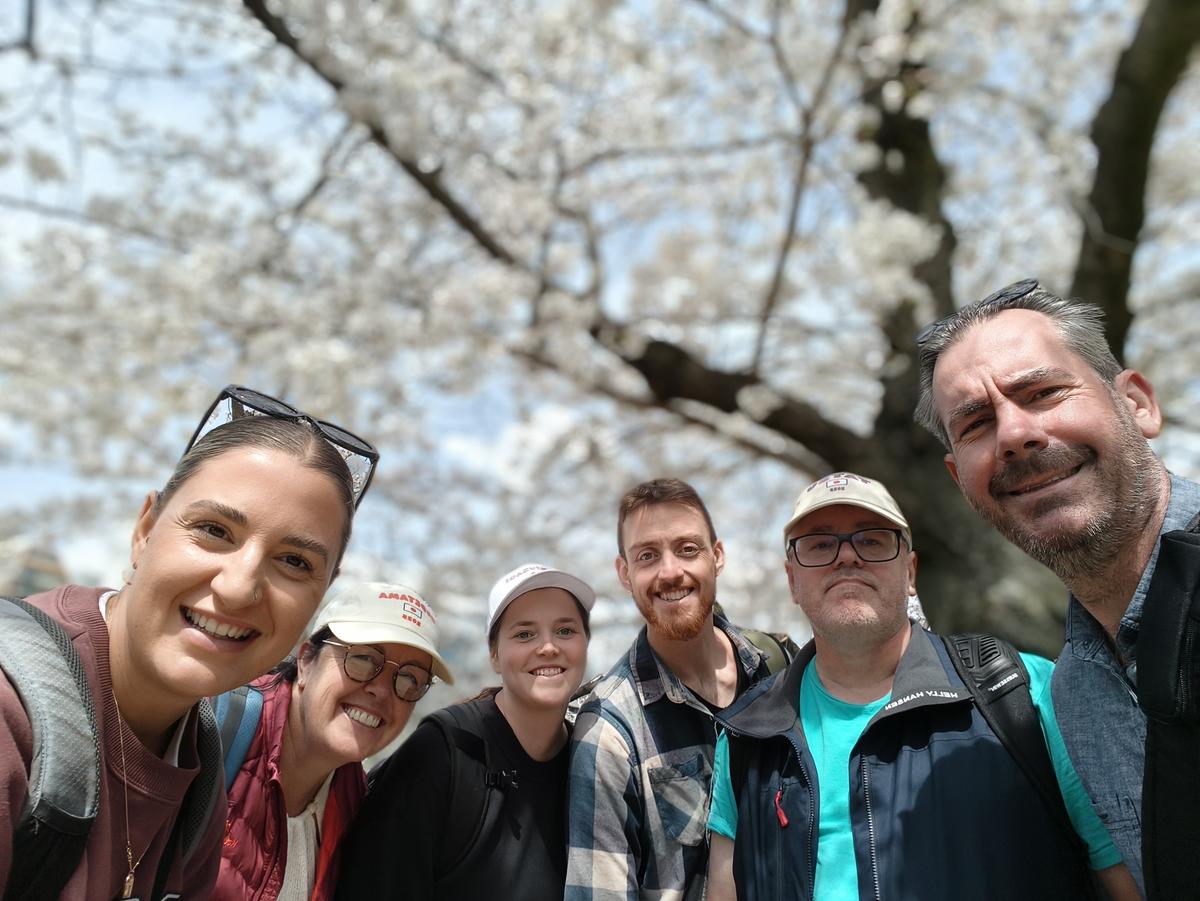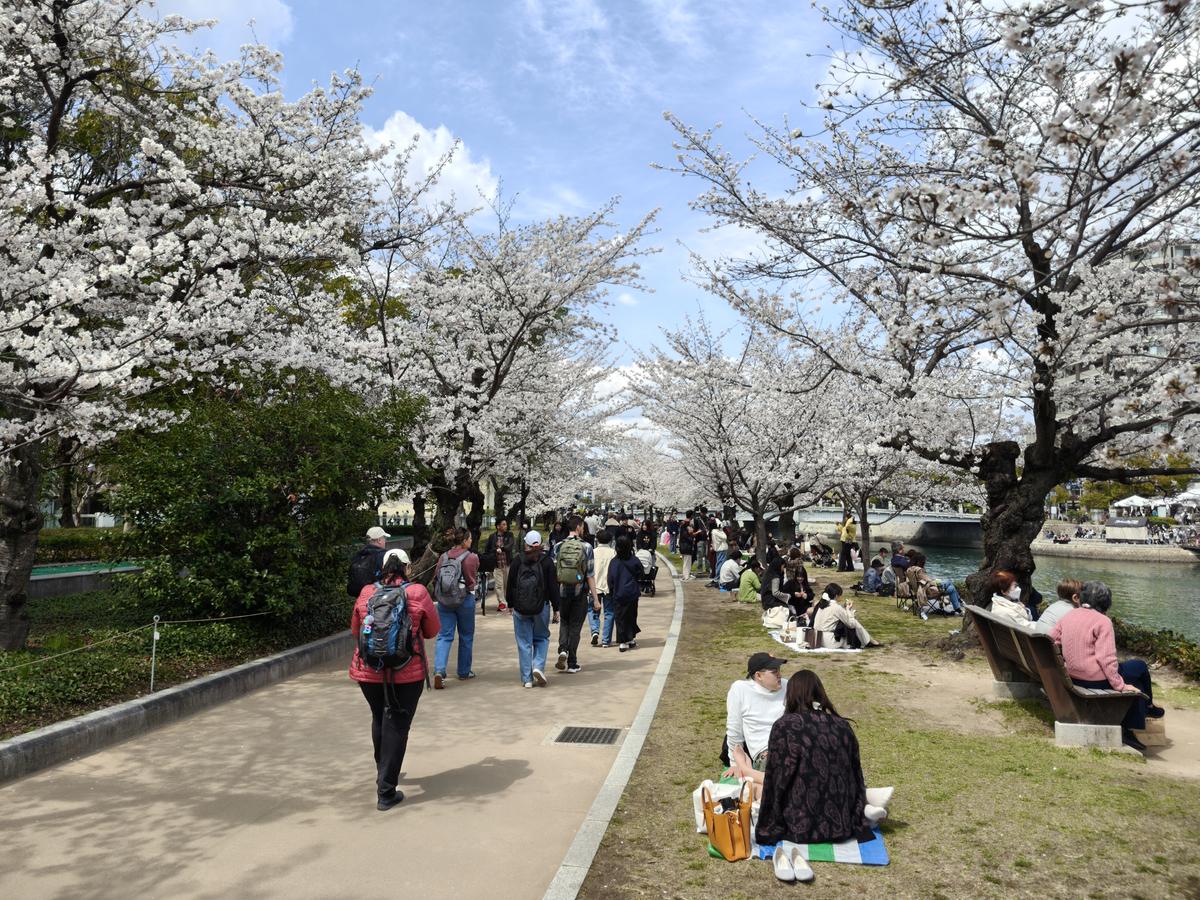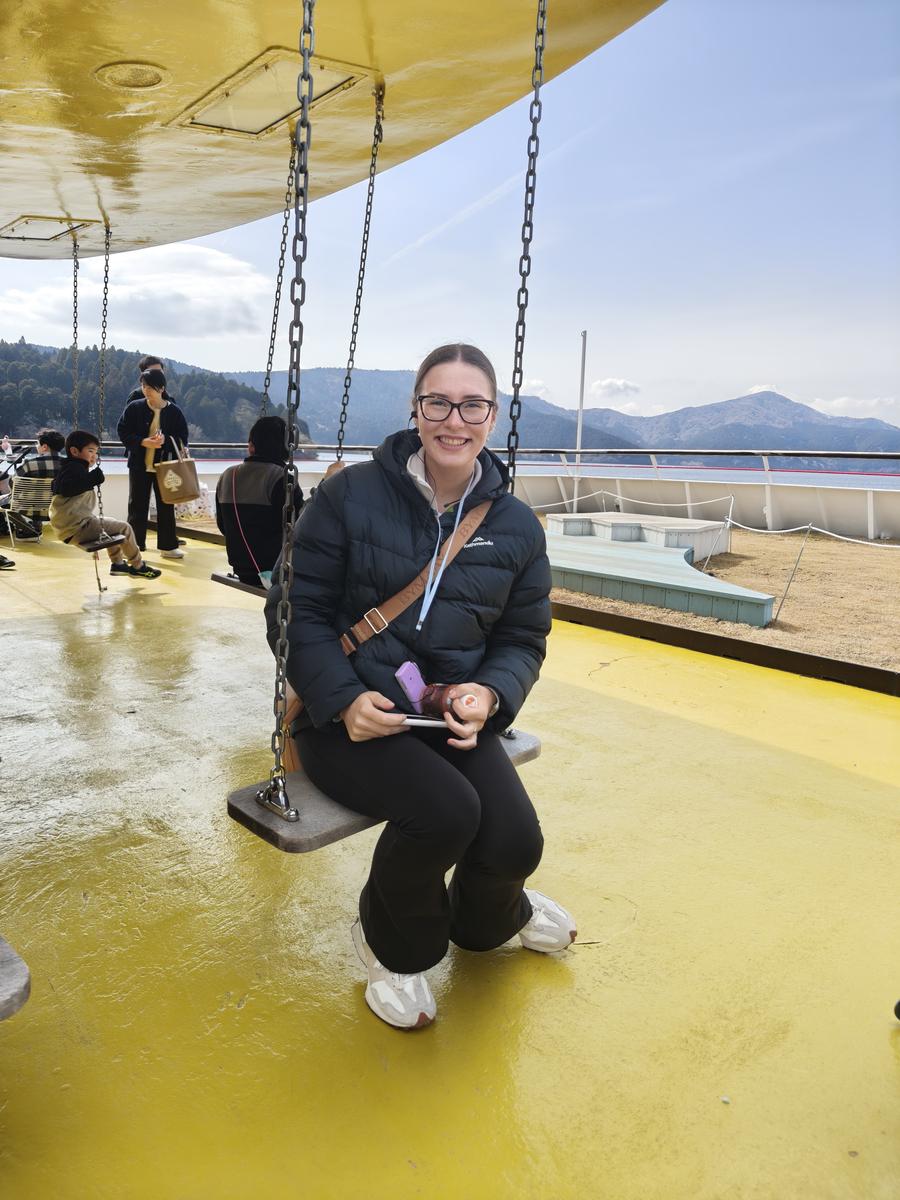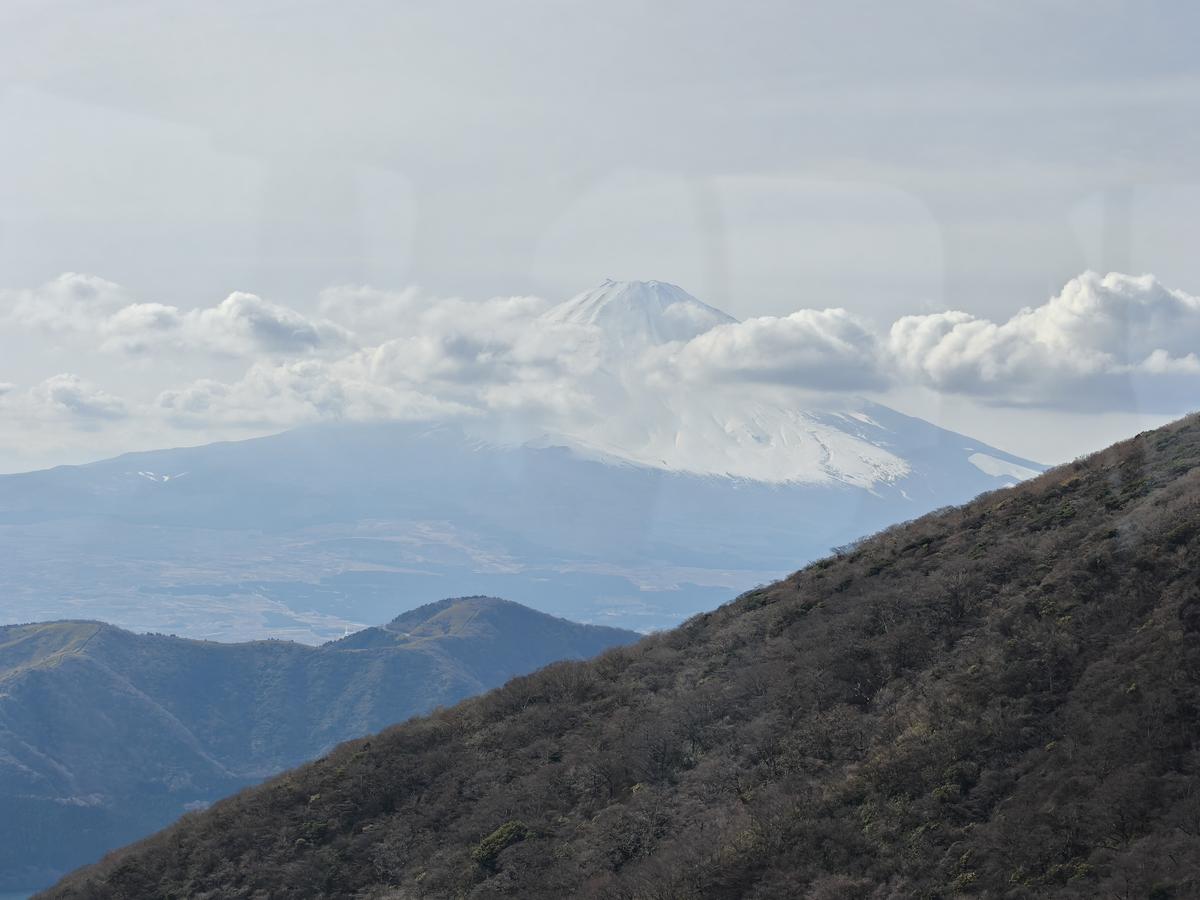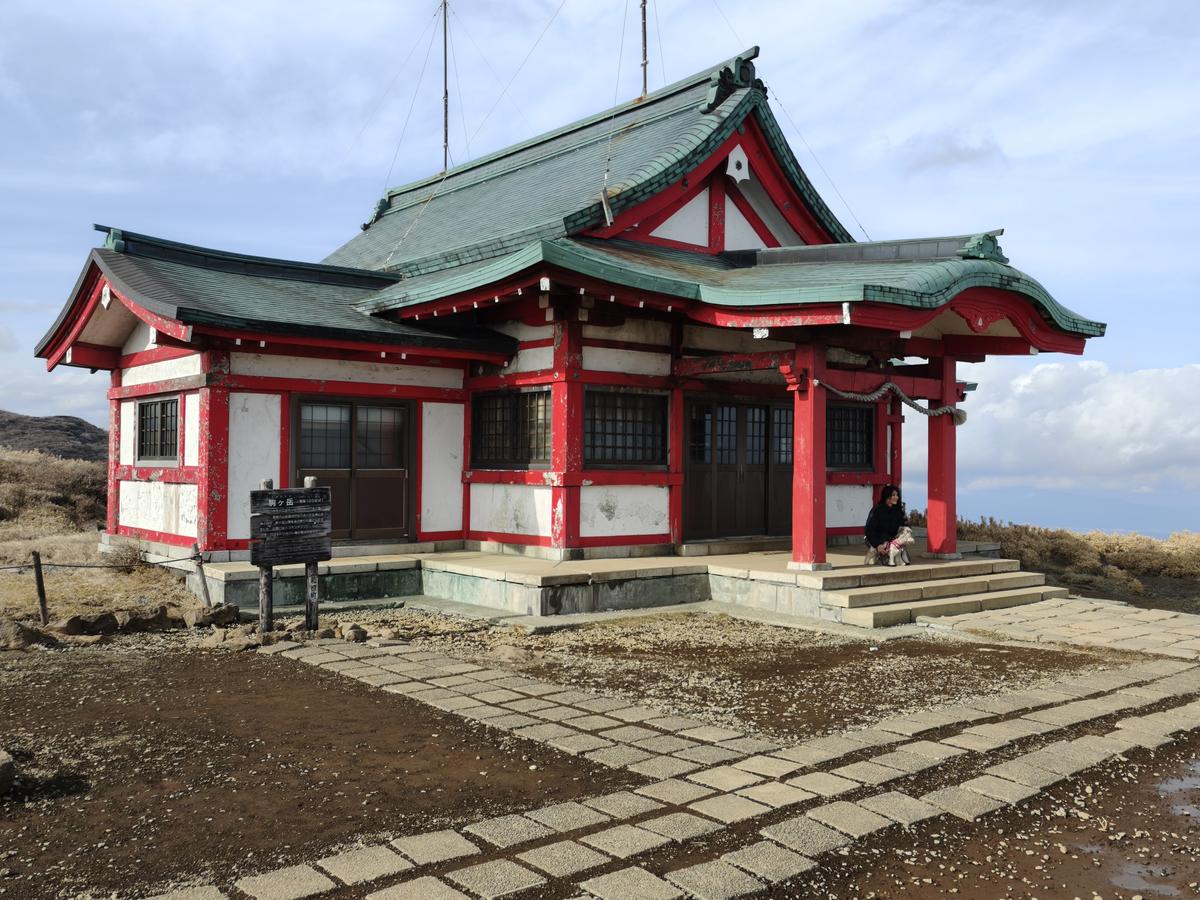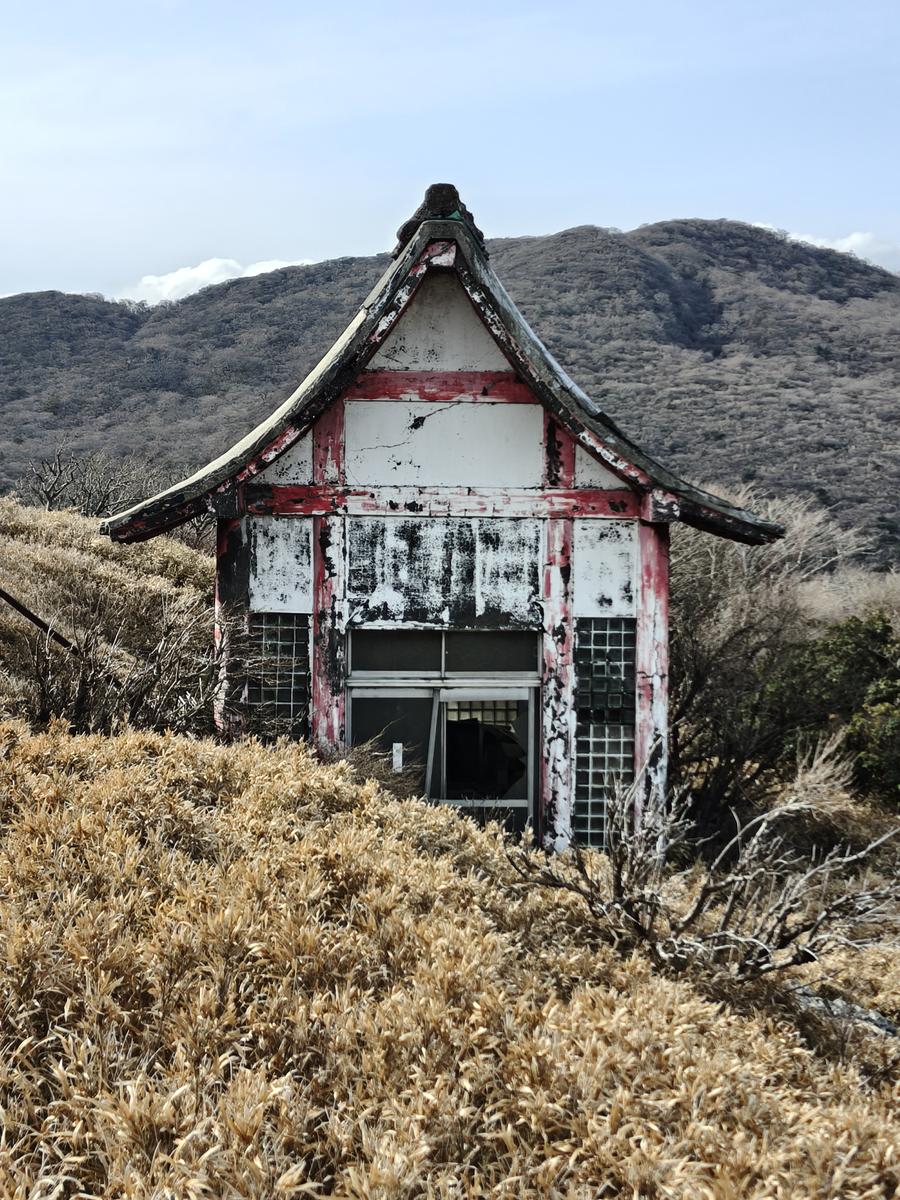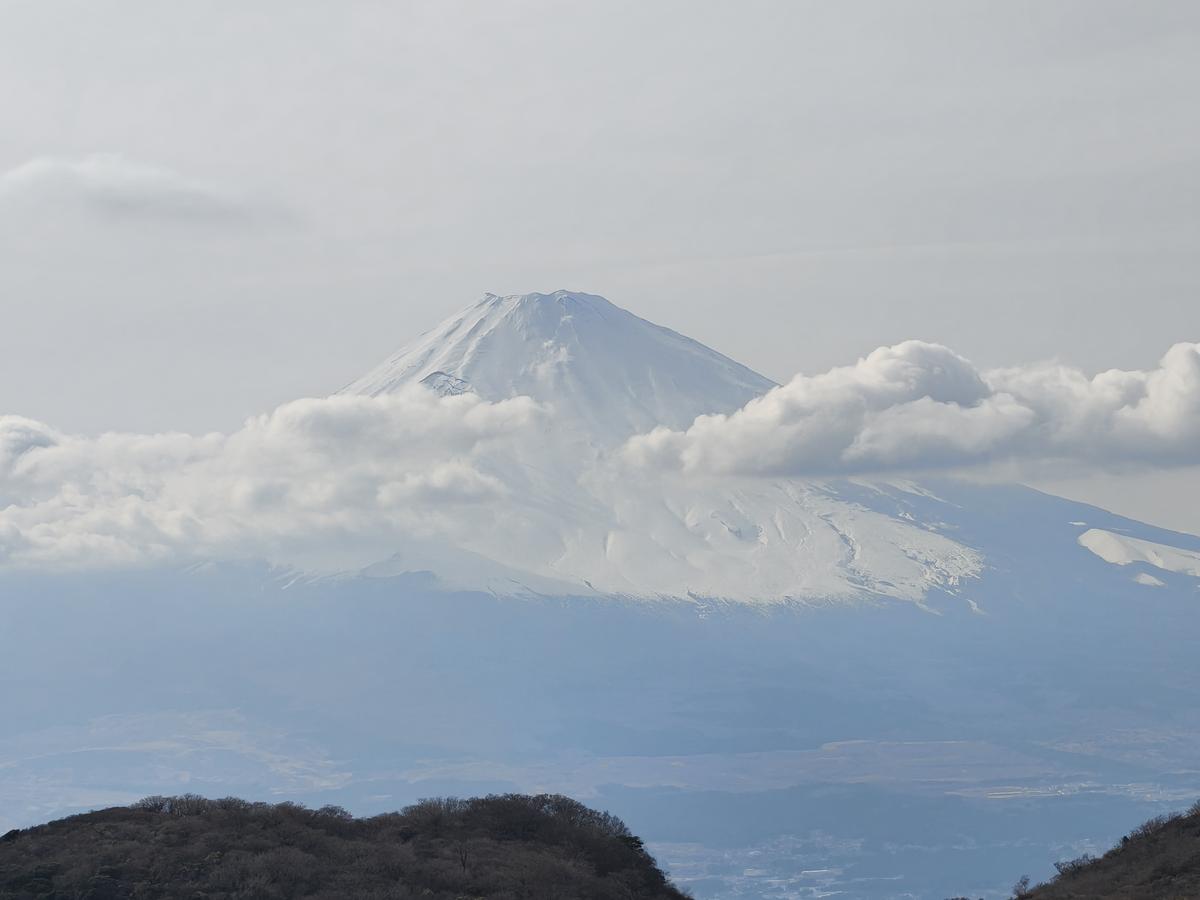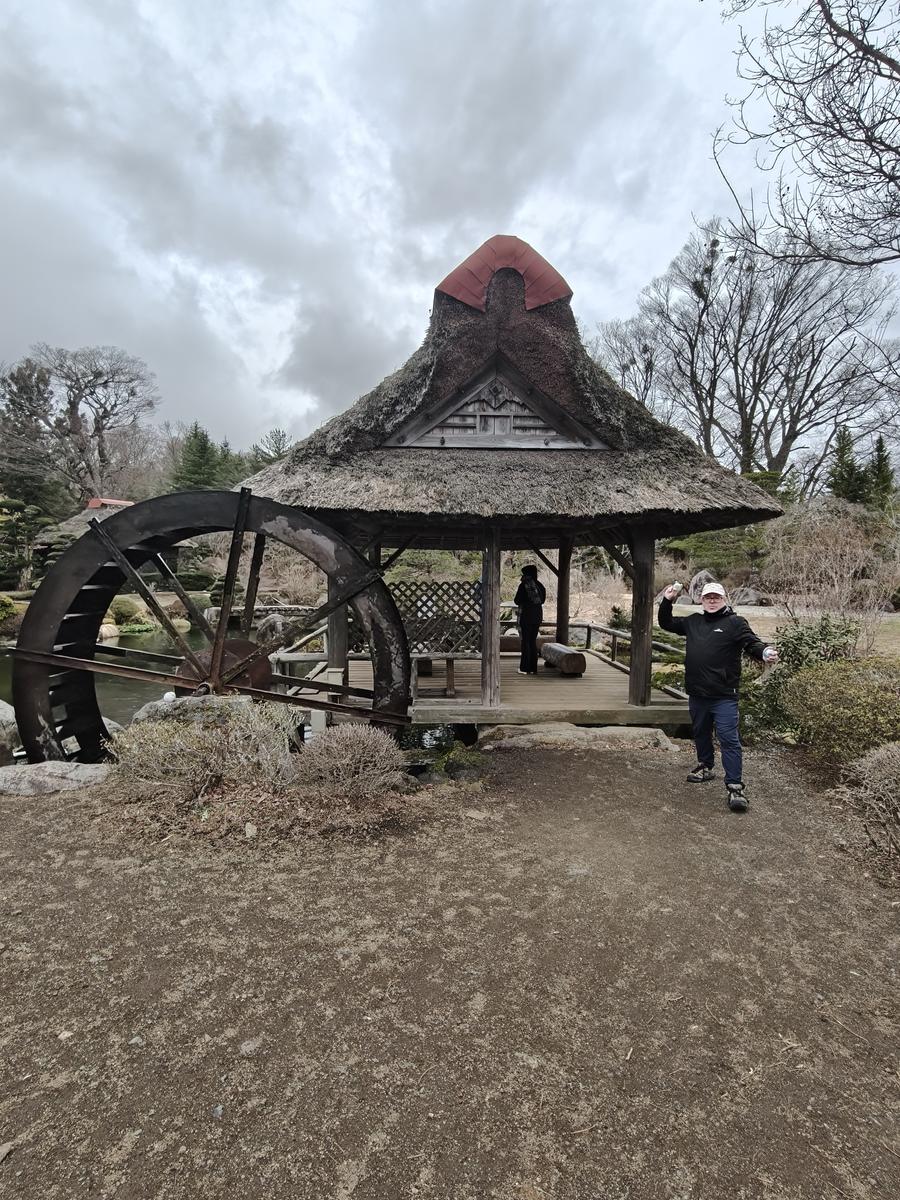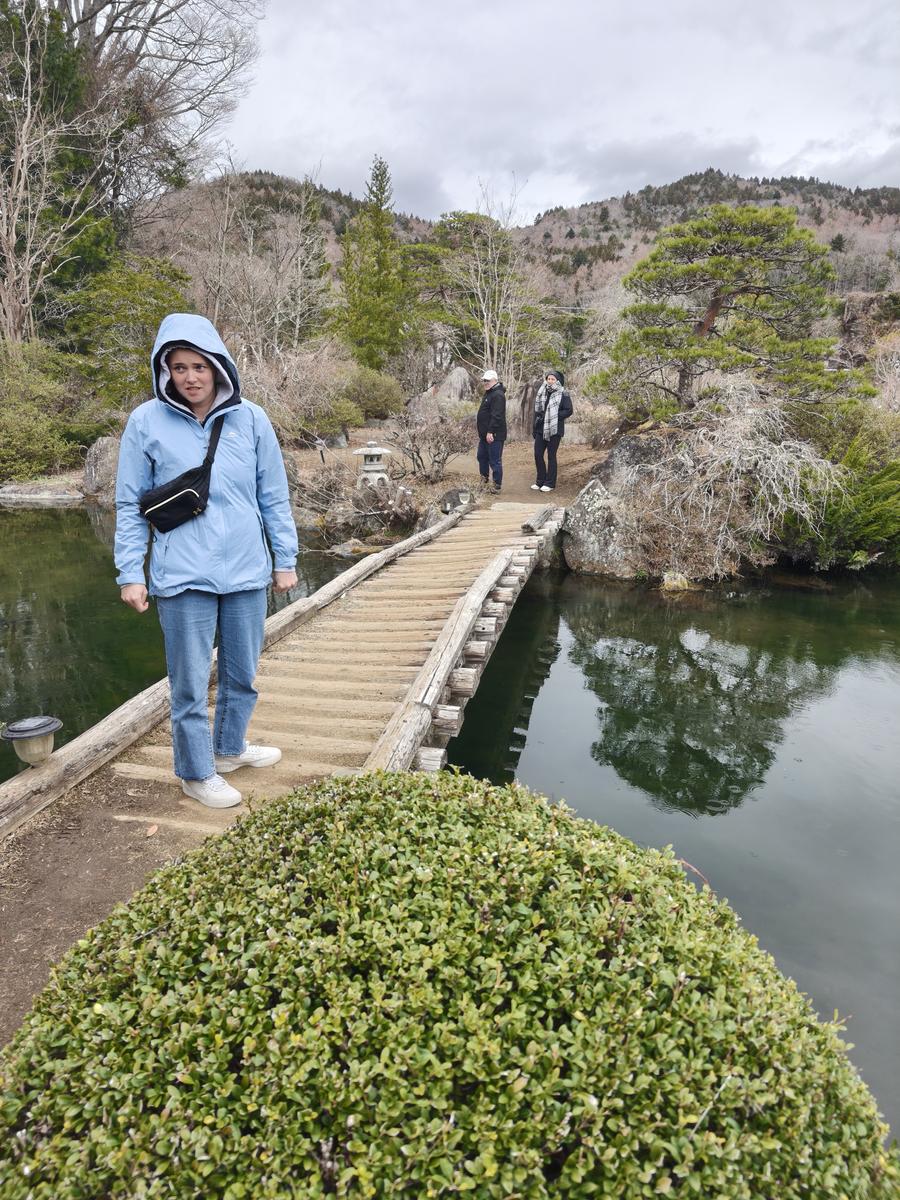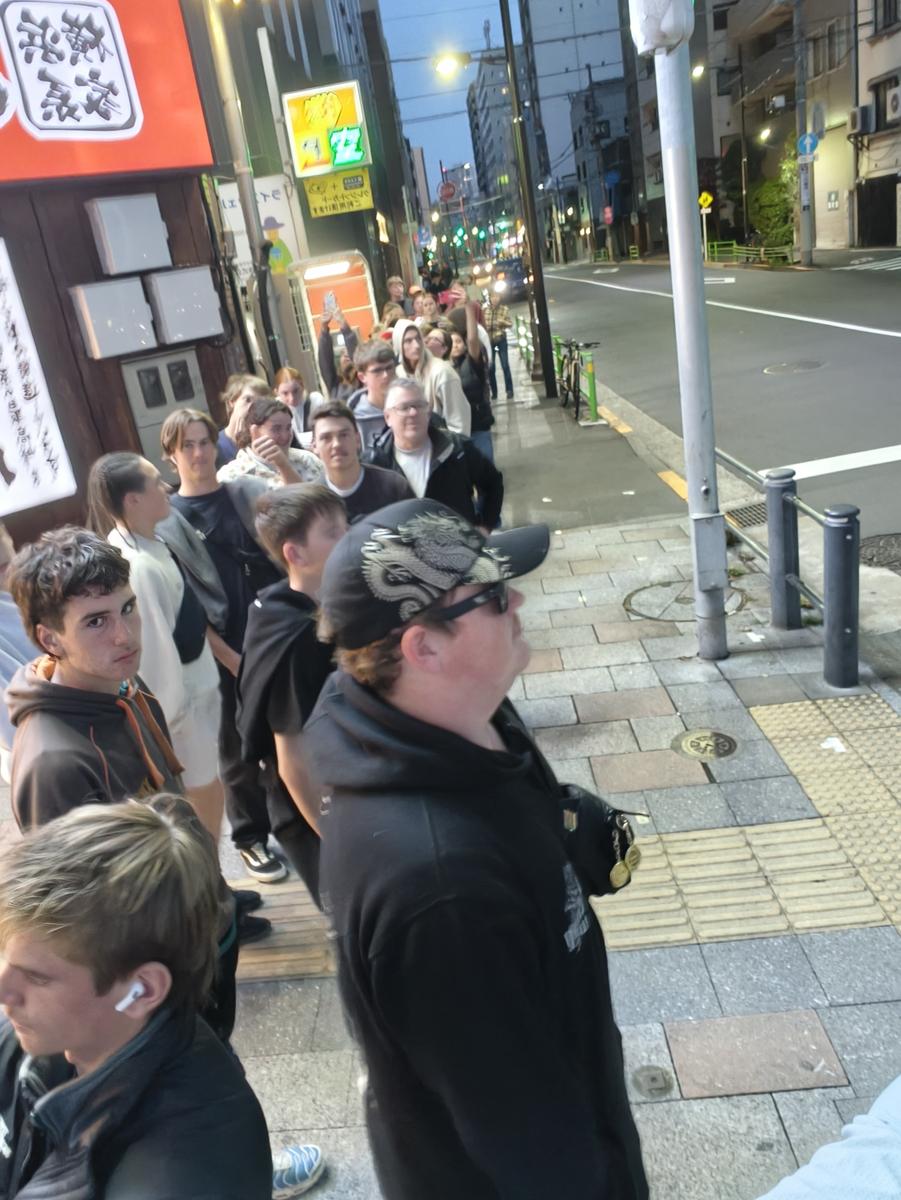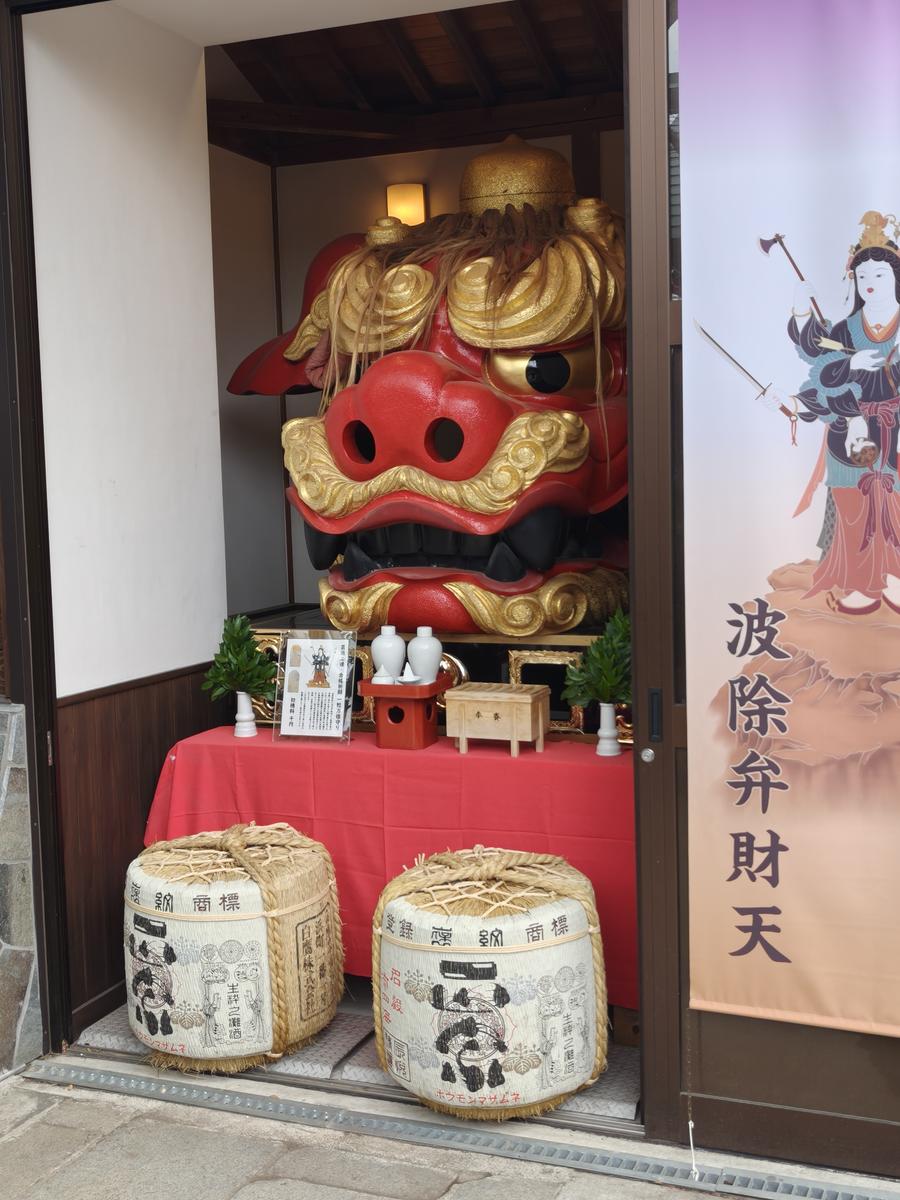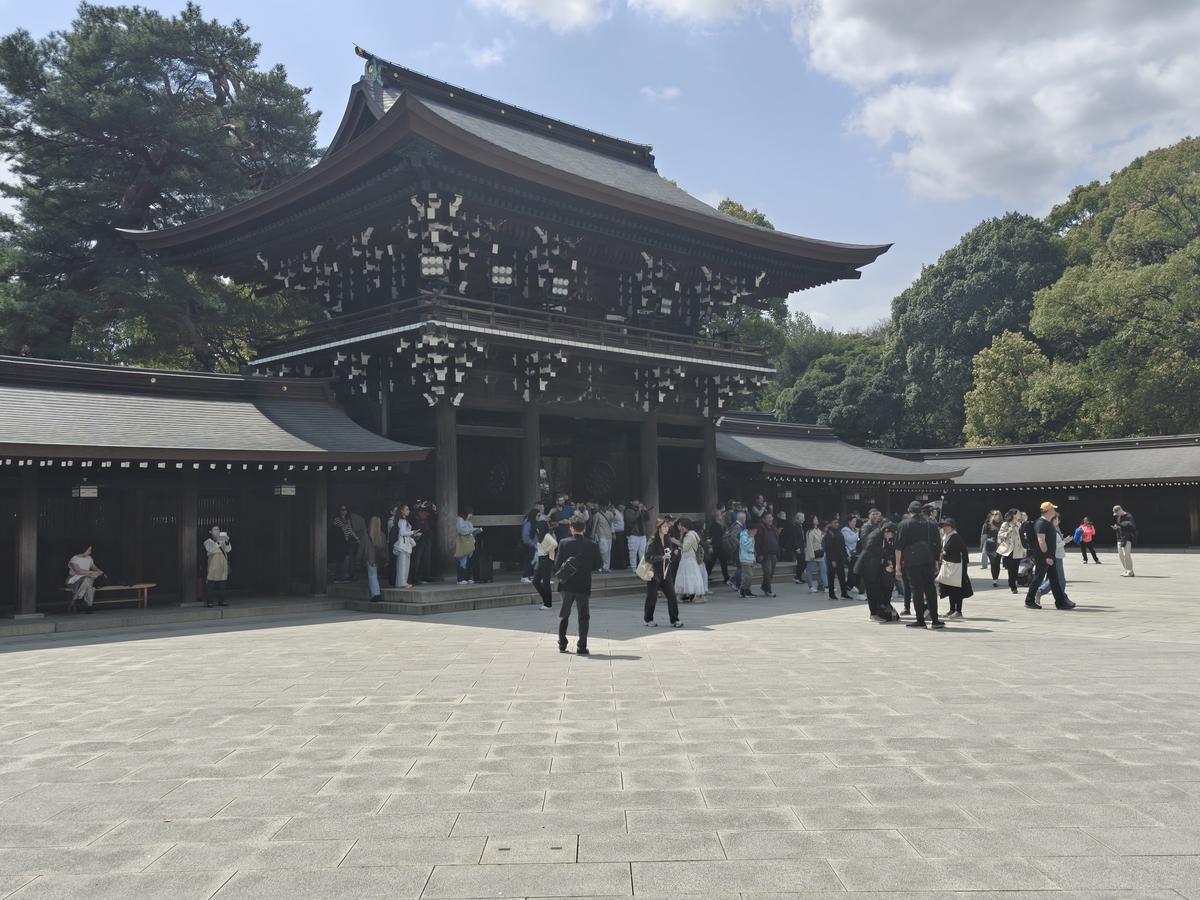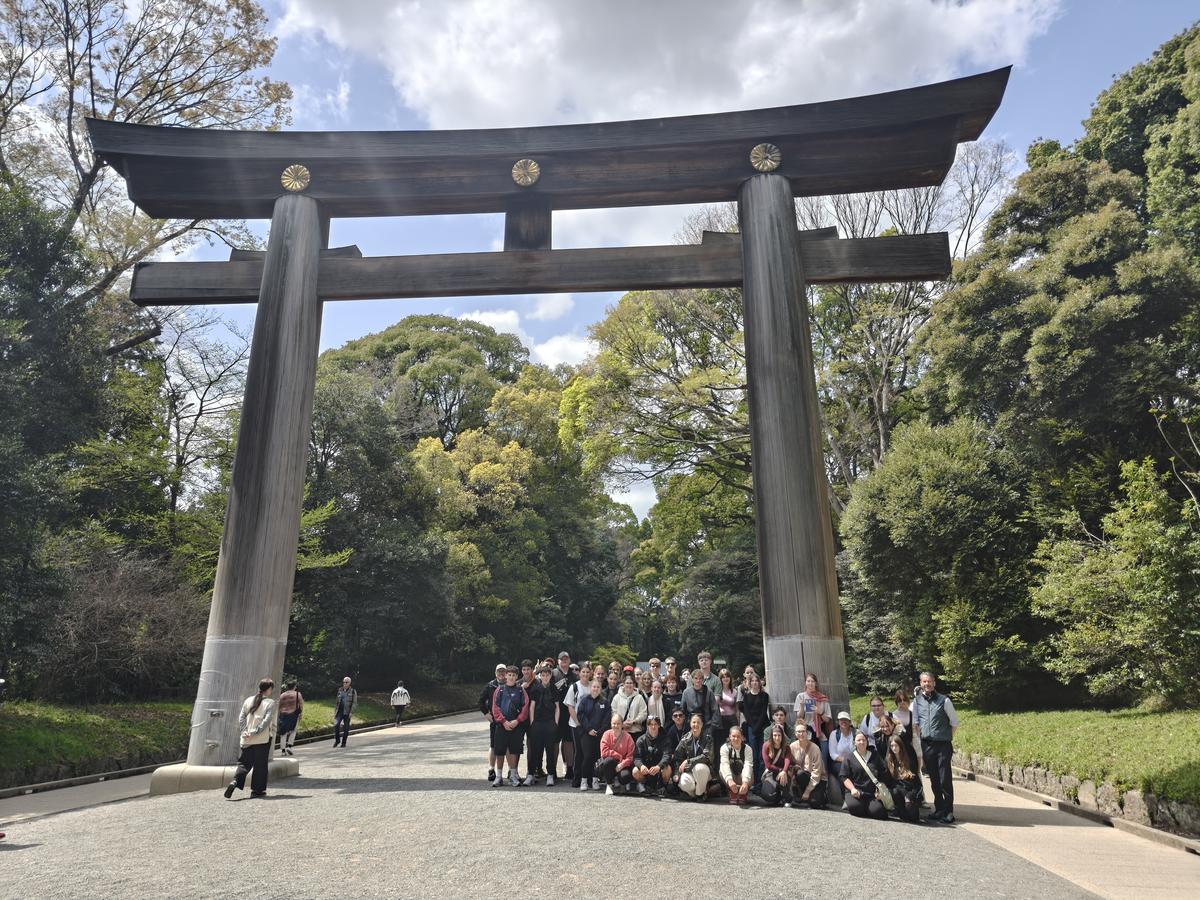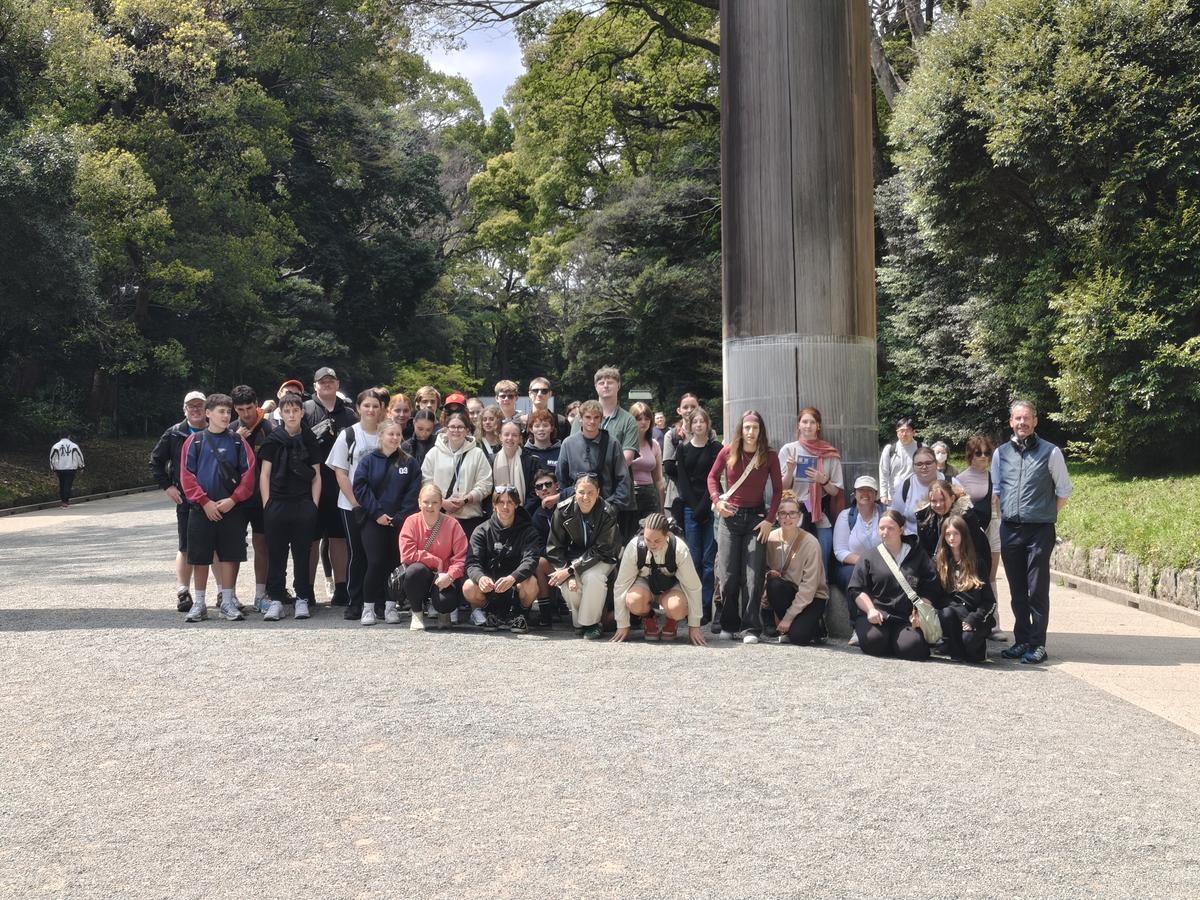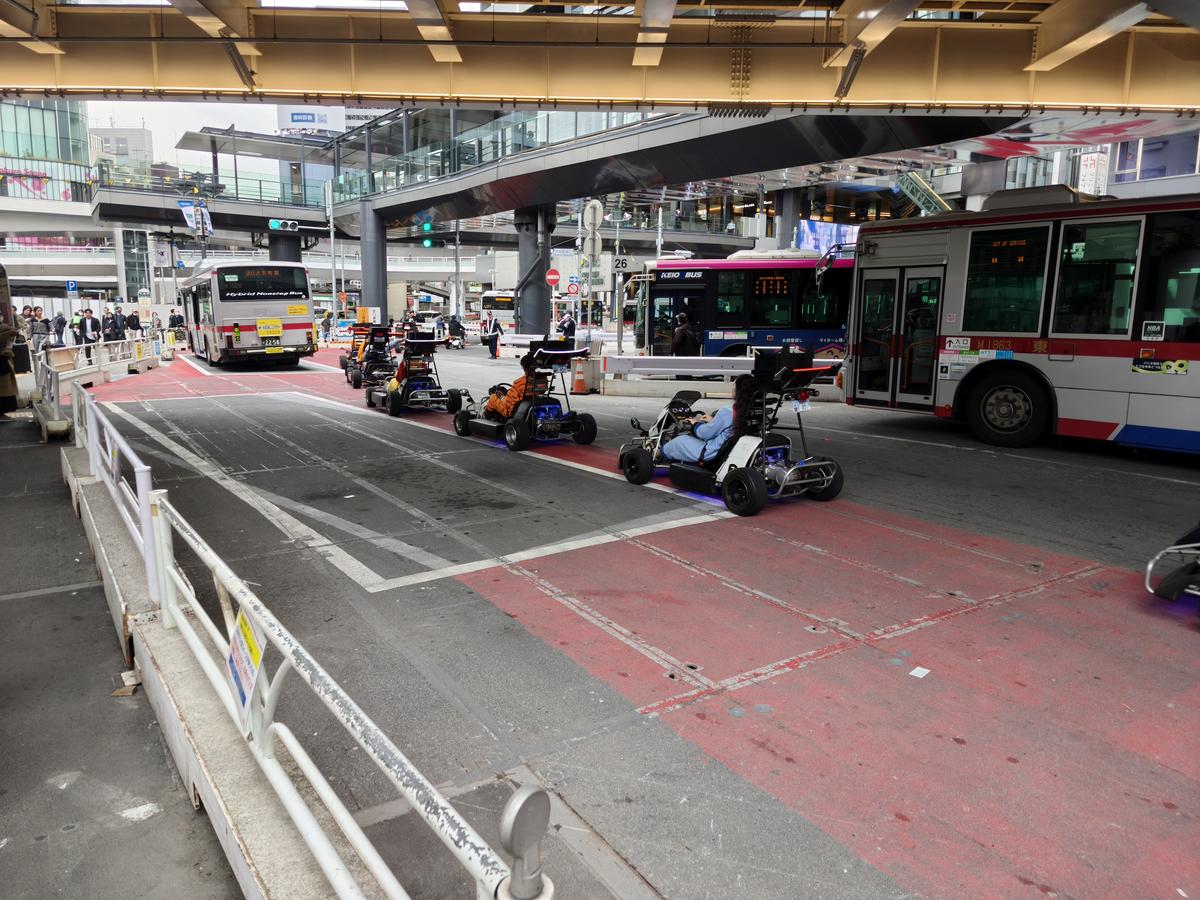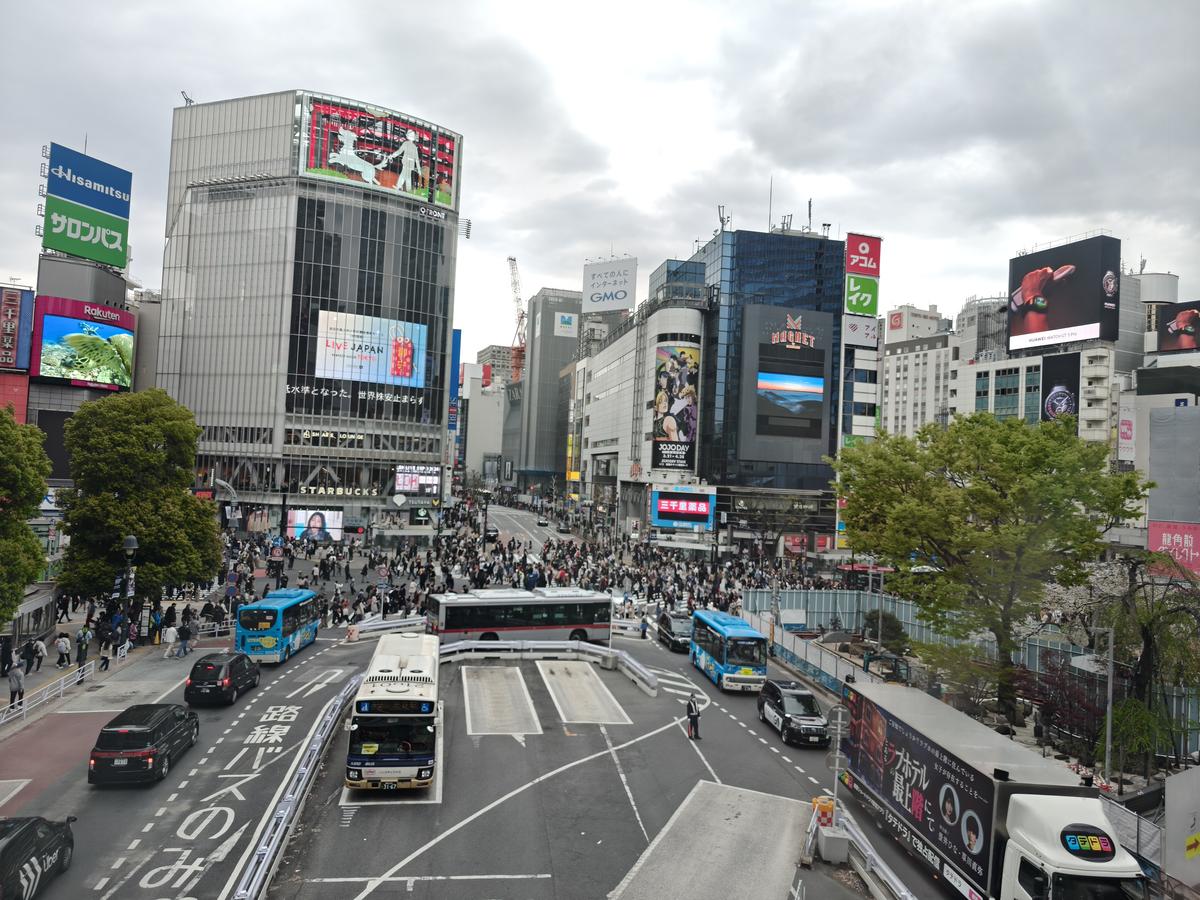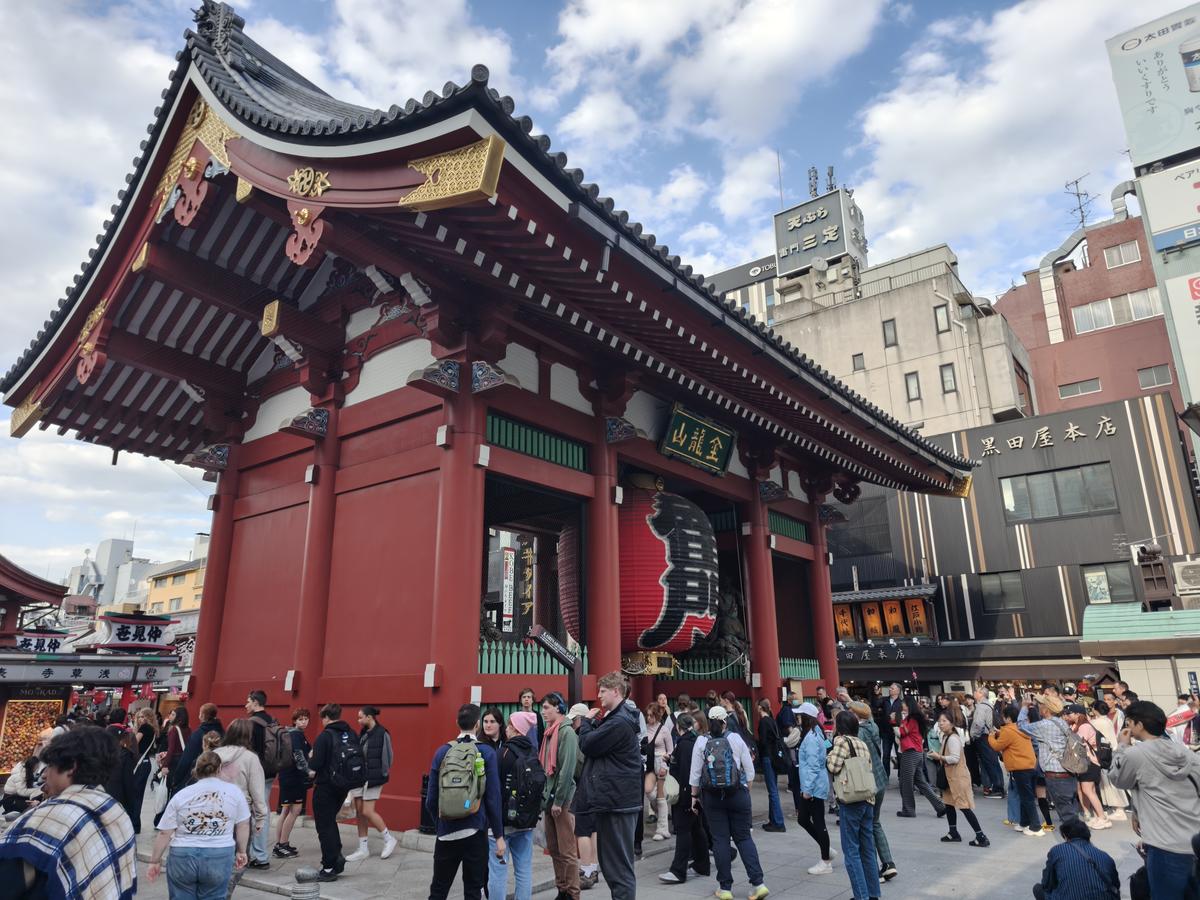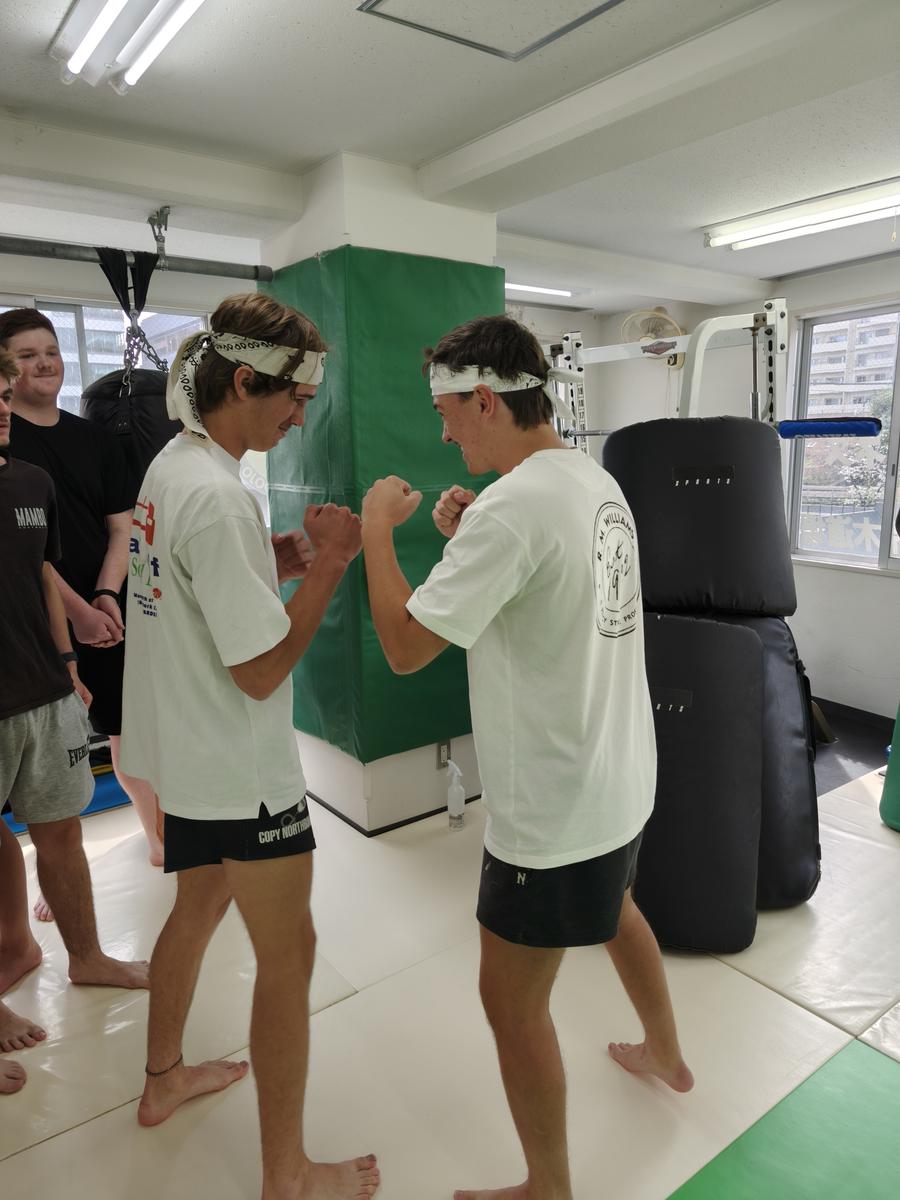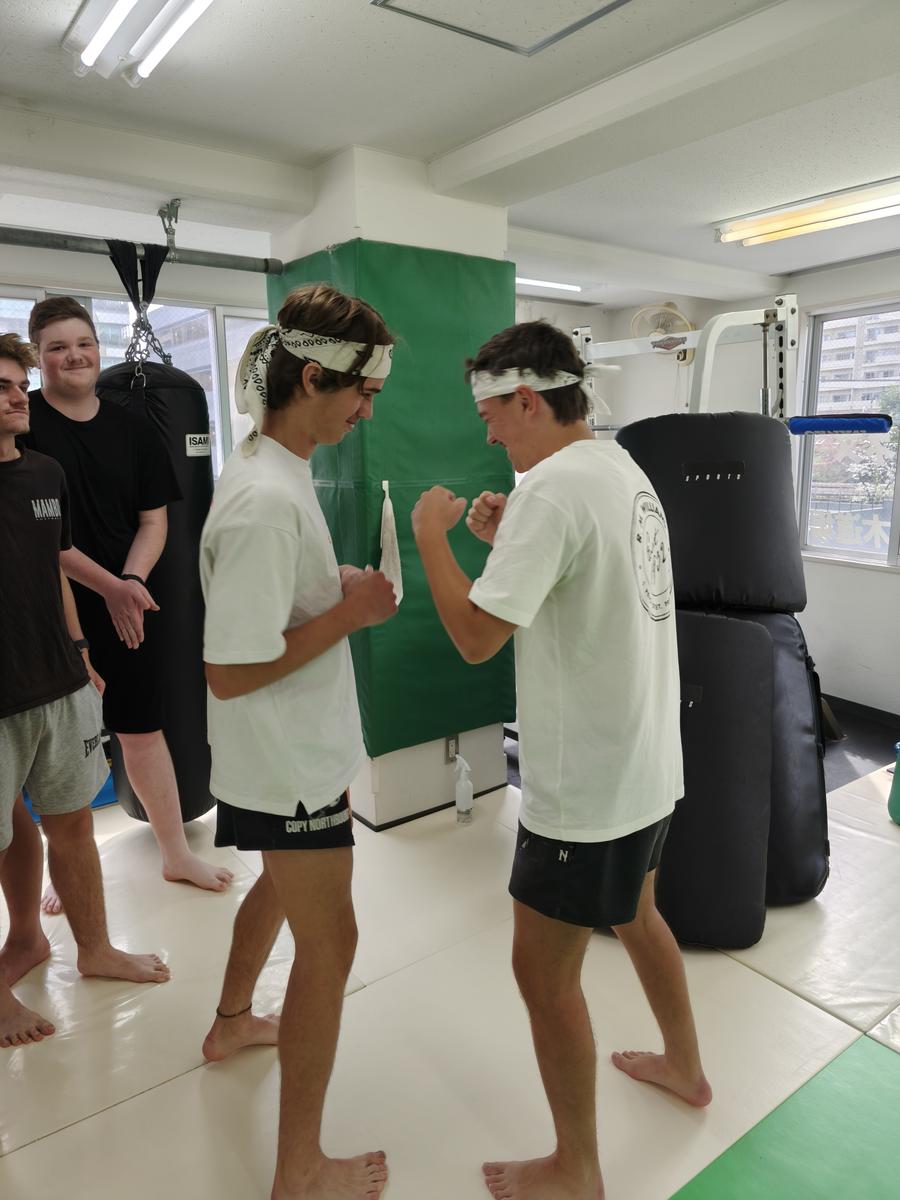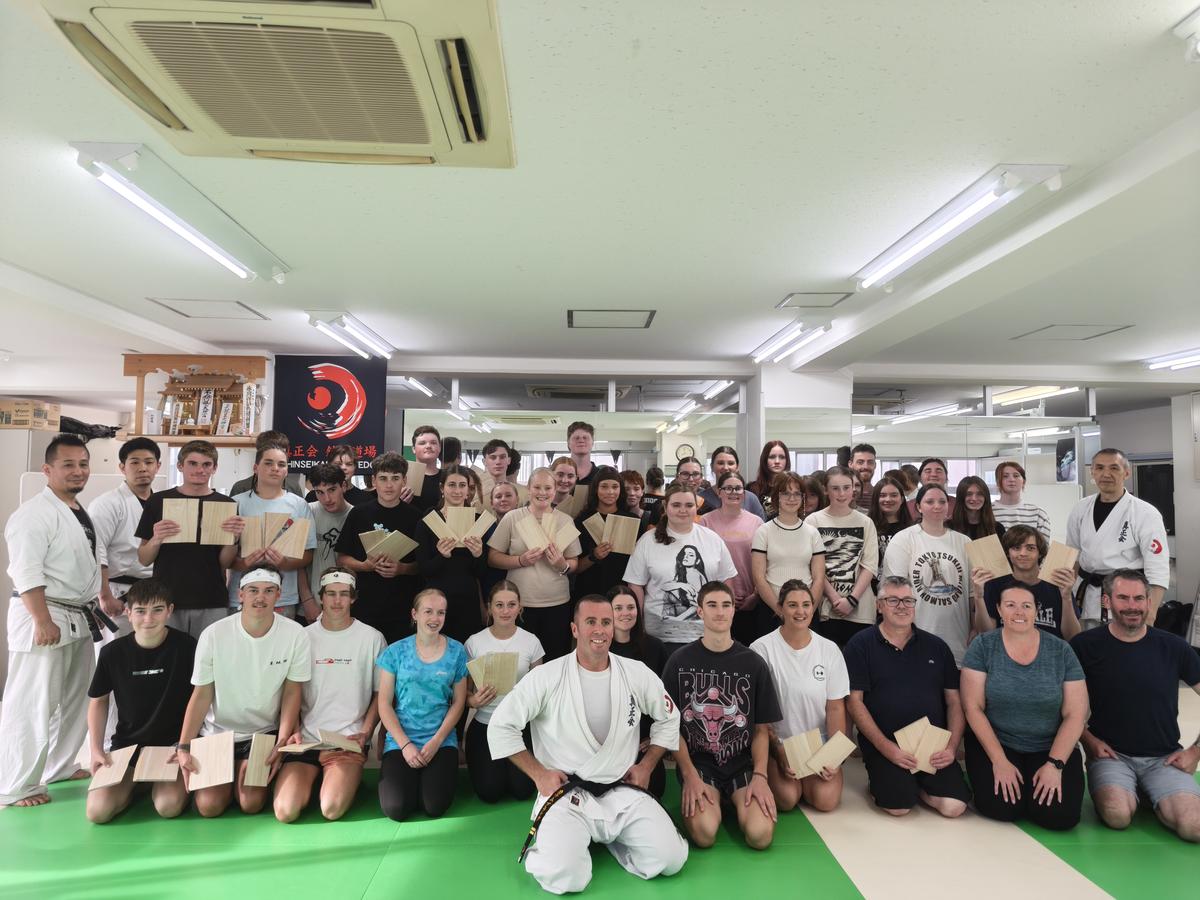JAPAN TRIP

A Journey Across Japan: Ten Days of Culture, Discovery and Connection
When the group from Korumburra Secondary College landed in Osaka, there was little time for jet lag. Excitement pulsed through the air as students and staff met their guide, Naomi-san, and boarded the tour bus that would become a second home over the coming days. Their journey across Japan had begun.
Their first destination was Kyoto—a city of traditions, temples, and timeless beauty. The group wandered through bustling markets, the scent of street food wafting through the air, and soon found themselves immersed in the past, donning elegant kimonos and Montsuki for a traditional dress-up experience. From there, they strolled through a bamboo grove that swayed gently above their heads and visited Kinkaku-ji, the Golden Pavilion, glowing in the late afternoon light.
At Fushimi Inari Taisha, thousands of red torii gates created tunnels of history and hope. The sun dipped below the horizon as lanterns flickered to life, casting a soft glow on the stone paths. Dinner that night was a well-earned meal of chicken katsu and prawn tempura before the group finally settled in for the night.
Day three brought new experiences: sweet-making and a matcha tea ceremony. The students worked with Nerikiri, a delicate bean paste, shaping it into flowers and seasonal designs. Then came the thrill of their first bullet train—sleek and powerful—carrying them to Himeji Castle. Towering above the city, the 16th-century keep impressed all with its history and architecture.
By evening, they were in Hiroshima. A traditional Izakaya dinner introduced them to local cuisine, with dishes like edamame, fish cakes, and sweet potato desserts served around lively tables.
The fourth day saw them journey to Miyajima Island, famed for its tame deer and the floating Itsukushima Shrine. The students explored Senjokaku Pagoda and wandered through Ometesando Street, sampling foods and buying keepsakes. That evening, they prepared their own okonomiyaki—Japanese savoury pancakes—at a cooking studio. Hats, aprons, sizzling griddles, and laughter made the night unforgettable.
Hiroshima’s Peace Memorial Museum, visited on Day Five, offered a sobering counterpoint to the trip’s earlier joys. The Atomic Dome and the stories of those lost in the bombing left a deep impression. Many students left the museum quiet, carrying the weight of the city’s painful past with newfound understanding. Later, the city’s vibrant food scene lifted their spirits again, and a Western-style dinner at Nick Stock offered familiar comfort with a Japanese twist.
Day six took the group into the hills of Hakone, via Shinkansen once again. The change in scenery—from urban bustle to rural tranquility—was a welcome contrast. They cruised across Lake Ashi on a ship shaped like an old sailing vessel, then ascended Mount Komagatake by ropeway for breathtaking views of Mount Fuji and the surrounding landscape. That night, they stayed at a Ryokan, a traditional inn with tatami mats and futons, and feasted on the most visually stunning meal of the trip.
Though they were unable to use the onsen due to cultural differences, an impromptu trip to a retro bowling alley brought joy and competition. Without flashy lights or electronic scoring, students cheered each other on with every strike and spare, including their PE teacher who used the kiddie ramp to score points and laughter.
The group set out the next day hoping to visit Mount Fuji’s 5th Station, but icy conditions rerouted them to the picturesque town of Oshino Hakkai. There, they discovered ponds fed by snowmelt filtered through volcanic rock, waterwheels, and traditional houses. Rain didn’t dampen their spirits as they enjoyed sponge cakes, Taiyaki, and ramen before continuing on to Tokyo.
In Tokyo, the skyline seemed endless from the 45th-floor observation deck of the Tokyo Metropolitan Government Building. The neon buzz of Shinjuku streets and the looming figure of a Godzilla statue made it clear—this was a city like no other. Dinner was Japanese hot pot, and the students’ chopstick skills were tested and celebrated.
Day eight was packed with spiritual and cultural experiences. At the Tsukiji Hongwanji Buddhist Temple and Namiyoke Inari Shrine, they learned about Buddhism and Shintoism side by side. Then it was on to Meiji Jingu Shrine, where peaceful forest paths made the chaos of Tokyo disappear. The students wandered Harajuku’s Takeshita Street, filled with crepes and capsule machines, and stood among the throngs at Shibuya Crossing—the busiest pedestrian intersection in the world.
Later, they visited the historic Asakusa Kannon Temple and shopped along Nakamise Street before enjoying a 150-year-old tempura restaurant. That evening, they said a heartfelt goodbye to their guide, Sato-san, whose warmth and knowledge had made the journey so memorable.
On day nine, the group enjoyed a slower pace with a morning to themselves exploring Ginza and Tsukiji. In the afternoon, Mimiko, their new guide, took them to a Karate lesson in Takadanobaba. There, students practiced punches, kicks, and even shattered boards with their fists, cheered on by peers and instructors alike.
Dinner that night was back in the Izakaya style—low tables, shared dishes, and laughter echoing through the room as the group reflected on the journey so far.
Day ten was a fan favourite. The group returned to Shibuya to explore shops, cafés, Pokémon Centre, Nintendo Tokyo, and even a cat café or two. Their final major outing was to Yokohama Stadium for a professional baseball game between the DeNA Baysiders and Yomiuri Giants. The stadium exploded with energy—brass bands, cheerleaders, chanting, and fireworks. Decked out in team gear, the students joined in the fun, cheering for both sides and appearing on the jumbotron more than once. Despite DeNA's loss by 3 runs, the experience itself was a win for everyone.
On their final day, the travellers savoured one last Taiyaki—those fish-shaped custard-filled cakes they’d grown to love—before heading to the Imperial Gardens near Hibiya. The peaceful paths, moats, and cherry blossoms were a fitting farewell.
They also said goodbye to Naomi-san, whose steady presence had guided them through temples, cities, and countryside. There were tears and hugs, and a deep sense of gratitude.
As the plane took off from Tokyo, students stared out the window one last time. They were leaving behind neon lights, bamboo groves, ancient temples, and crowded crossings. But each carried a collection of memories that would stay with them forever—of a country that was vibrant, complex, serene, and alive.
Japan had not just been a destination. It had been an experience.

